Summer Road Trip in Hokkaido! Itinerary, Routes, and Attractions for a Self-Drive Tour from Sapporo
In the summer of 2009, I embarked on my first self-drive trip in Hokkaido. Over the next decade, I visited Hokkaido six or seven times, covering almost all its major tourist destinations. Except for winter trips, all my journeys were self-drive adventures. Hokkaido is vast, making it impossible to explore everything in one trip, so multiple visits are necessary. For first-time visitors to Hokkaido, I recommend focusing on the central region, with Sapporo as the base, and exploring key attractions like Otaru, Furano, Biei, Noboribetsu Onsen, and Lake Toya. If time permits, you can also include Hakodate in the southern region.
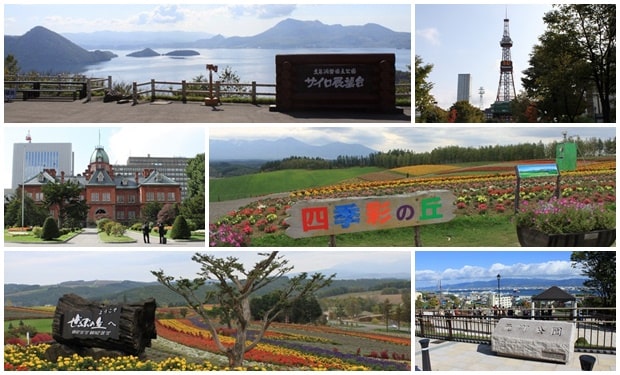
Table of Contents
Planning Your Hokkaido Self-Drive Trip: Flights, Hotels, Car Rental, and Itinerary
This article is a revised version of the travelogue I wrote after my first self-drive trip to Hokkaido. The original posts documented the itinerary, routes, attractions, and cost breakdown of this summer self-drive adventure. After publishing the posts on my blog, a publisher took interest and included parts of the content in a Hokkaido travel guide.
Recently, while planning another trip to Hokkaido, I revisited my travel notes from over a decade ago. I realized that the itinerary, routes, and attractions are still relevant today and can be followed exactly for a repeat visit. They are also perfect for first-time visitors to Hokkaido looking for reference.
Originally, these travel notes were scattered across multiple posts, making them inconvenient to read. So, I decided to reorganize and update the information, hoping it will be helpful for those planning a trip to Hokkaido.
1. Booking Flights
Summer vacation is peak season for Hokkaido tourism, making flights scarce and prices exorbitant. To save costs, I opted for a connecting flight instead of a direct one. I flew with Korean Air, transiting through Incheon Airport to New Chitose Airport in Sapporo. Since my departure was at the tail end of summer, after the school holidays, the airfare wasn’t too expensive—just over HKD 4,100, including fuel surcharges and airport taxes.
2. Reserving Hotels
Since I only booked flights and planned to visit multiple destinations in Hokkaido, I needed to arrange accommodations myself. Before searching for hotels, I drafted a preliminary itinerary to at least determine where I’d stay each night. Finding hotels can be time-consuming and requires patience, unless you’re not particular about where you stay. For this trip, I mainly used Rakuten Travel for bookings, with a few exceptions through Agoda. For the Biei guesthouse, I booked directly via email.
This 9-day, 8-night Hokkaido trip involved staying in seven different hotels or guesthouses across six locations, so the search and booking process took considerable time. Here are the details of the accommodations:
- Night 1 – Sapporo: Hotel Fino Sapporo (now called Hotel Mystays Sapporo Station North Exit), ¥10,000 (including breakfast);
- Night 2 – Noboribetsu: Takinoya Annex Tamanoyu, ¥25,200 (with two meals);
- Night 3 – Hakodate: Comfort Hotel Hakodate, ¥7,500 (includes ¥1,050 meal voucher for Hakodate Morning Market’s Kikuyo Shokudo);
- Night 4 – Lake Toya: Lake View Toya Nonokaze Resort, ¥21,700 (with two meals, lake-view room, and Mount Usu ropeway tickets);
- Night 5 – Otaru: Dormy Inn Premium Otaru Natural Hot Spring, ¥7,200 (excluding breakfast);
- Night 6 – Biei: Lodge Woody Life, ¥17,500 (with two meals);
- Nights 7 & 8 – Sapporo: Cross Hotel Sapporo, ¥9,000 (excluding breakfast).
3. Renting a Car
This 9-day, 8-night Hokkaido trip involved six days of self-driving, so another crucial task during the planning phase was booking a rental car. As with my previous Kansai trip, I used ToCoo! Car Rental. After comparing prices, I found Mazda to be the most affordable and ultimately rented a Mazda Demio for six days and five nights at a total cost of ¥28,000. Foreign drivers in Japan require an International Driving Permit, so remember to apply for one before departure.
4. Travel Information
After securing flights, hotels, and car rental, the next step was planning the detailed itinerary. Since I had already decided to visit Hokkaido earlier in the year, I bought several travel guides and borrowed others from friends and colleagues. Reading them all took a considerable amount of time. (Note: After traveling more, I no longer buy travel guides—I just borrow one or two from the library for reference.)
For self-drive trips, it’s essential to familiarize yourself with driving routes, distances, and travel times. Here are some helpful websites:
- Google Maps https://www.google.com/maps/
- Mapion https://www.mapion.co.jp/
- NEXCO East Japan Highway Toll Inquiry https://www.driveplaza.com/dp/SearchTop
- NAVITIME https://www.navitime.co.jp/
- Hokkaido Road Information https://northern-road.ceri.go.jp/navi/
Additionally, since navigation relies heavily on GPS, it’s important to collect phone numbers or map codes for major attractions and destinations. Below are the phone numbers or map codes I gathered for Hokkaido’s non-urban attractions during my trip planning.
| Attraction | Phone | Map Code |
|---|---|---|
| Hitsujigaoka Observation Hill | 011-851-3080 | 9 287 562 |
| Jozankei Onsen | 011-598-2012 | 708 754 477 |
| Hoheikyo Onsen | 011-598-3452 | 708 633 399 |
| Moyoshi Nakayama Rest Area | – | 759 672 362 |
| Forest 276 Waterfall Rest Area | – | 759 105 506 |
| Koke no Dōmon | 012-324-3131 | 545 699 775 |
| Lake Shikotsu | – | 867 063 387 |
| Noboribetsu Date Jidaimura | 0143-83-3311 | 603 169 293 |
| Noboribetsu Onsen | – | 603 257 748 |
| Muroran Cape Chikyu | 0143-23-0102 | 159 195 015 |
| Shiratori Bridge | 0143-23-0102 | 159 369 043 |
| Miltara Muroran Rest Area | – | 159 308 680 |
| Date History Museum Rest Area | – | 159 780 249 |
| Onuma Quasi-National Park | 0138-67-2170 | 86 875 549 |
| Goryokaku Park | 0138-51-4785 | 86 166 243 |
| Mount Hakodate | 0138-27-3127 | – |
| Lake Toya | – | 321 518 596 |
| Lake Toya Silo Observatory | 0142-87-2221 | 321 726 823 |
| 230 Rusutsu Rest Area | – | 385 256 495 |
| Shiribeshi Natural Spring Park | 0136-42-2111 | 385 674 621 |
| Hangetsu Lake | 0136-22-1121 | – |
| Arishima Memorial Museum | – | 398 204 866 |
| Niseko Bridge | – | 398 202 427 |
| Niseko Panorama Line | – | 398 372 641 |
| Niseko Oyunuma | 0136-58-3155 | – |
| Shinsen-numa | 0135-73-2011 | 398 551 289 |
| Shukutsu Observatory | 0134-32-4111 | – |
| Shakotan Peninsula Cape Kamui | – | 932 582 637 |
| Shakotan Peninsula Candle Rock | – | 654 895 587 |
| Otaru Marina | – | 493 663 037 |
| Mikasa Rest Area | – | 180 276 299 |
| Mikasa Sandan Falls | 0124-22-211 | – |
| Furano Station | 0167-23-3388 | – |
| Naka-Furano Station | – | 349 245 389 |
| Kami-Furano Station | – | 349 461 380 |
| Biei Station | 0166-92-1854 | 389 010 566 |
| Saika no Sato | 0167-44-2855 | 349 244 387 |
| Hokuseiyama Lavender Garden | – | 349 275 058 |
| Farm Tomita | 0167-39-3939 | 349 276 801 |
| Hinode Park | 0167-45-5021 | 349 463 372 |
| Flower Land | 0167-45-9480 | 349 518 507 |
| Kanno Farm | 0167-45-9528 | – |
| Shikisai-no-Oka | 0166-95-2758 | 349 701 244 |
| Takushinkan | 0166-92-3355 | 349 704 394 |
| Chiyoda Hill Observatory | – | 349 734 462 |
| Sanai Hill Observatory | – | 349 792 535 |
| Shin-ei Hill | – | 349 790 525 |
| Bibaushi Elementary School | – | 349 730 066 |
| Senbokutoge Pass | – | 349 456 330 |
| Miyama Pass Observatory | 0167-44-2952 | 349 610 315 |
| Roller Coaster Road | – | 349 667 123 |
| Takushin Shinsei Line | – | 349 704 187 |
| Mild Seven Hill | – | 389 036 453 |
| Seven Star Trees | – | 389 157 155 |
| Parent and Child Trees | – | 389 128 033 |
| Hokusei Hill Observatory | 0166-92-4445 | 389 070 368 |
| Ken & Mary Tree | – | 389 071 631 |
| Atom Hill | 0166-92-3160 | 389 101 245 |
| Fujino No. 2 Line | – | 349 858 076 |
| White Birch Tree Road | – | 349 597 537 |
| Shirogane Onsen | – | 796 182 370 |
| Tokachidake Observatory | – | 796 094 397 |
| Fukiage Rotenburo | 0167-45-6983 | 796 032 435 |
Here are some tips for using GPS navigation:
- 1. If entering a phone number, always double-check the location on the map to ensure it matches your intended destination. Sometimes the number might lead to an office rather than the attraction itself, so it’s important to have a general idea of the destination’s location beforehand.
- 2. If the GPS doesn’t support map codes and there’s no phone number for the attraction, use the map function to navigate to the vicinity, then zoom in and manually select the destination. Most well-known attractions are marked on the map.
- 3. GPS will only take you close to your destination. As you approach, slow down and keep an eye out for the actual location.
Daily Itinerary for a Summer Self-Drive Trip in Hokkaido
After days of effort, the itinerary for this late-summer/early-autumn self-drive trip was finally complete. Below is a summary of each day’s activities:
- [Day 1] – Arrive at New Chitose Airport via Korean Air, take the JR train to Sapporo Station, check into the hotel, then explore Sapporo Station, Odori Park, and enjoy dinner at Hotel Fino Sapporo.
- [Day 2] – Begin the self-drive tour: check out, pick up the rental car, and drive to Jozankei, Hoheikyo Onsen, and Lake Shikotsu before arriving at Noboribetsu Onsen. Stay at Takinoya Annex Tamanoyu.
- [Day 3] – Travel from Noboribetsu to Hakodate, visiting Noboribetsu Hell Valley, Muroran Cape Chikyu, and Mount Hakodate. Stay at Comfort Hotel Hakodate.
- [Day 4] – Travel from Hakodate to Lake Toya, visiting Hakodate Morning Market, Goryokaku Park, Onuma Quasi-National Park, Mount Usu, and the Lake Toya Fireworks Festival. Stay at Lake View Toya Nonokaze Resort.
- [Day 5] – Travel from Lake Toya to Otaru, visiting Lake Toya Silo Observatory, Niseko Panorama Line, Shinsen-numa, Otaru Canal, and Tengu Mountain. Stay at Dormy Inn Premium Otaru Natural Hot Spring.
- [Day 6] – Travel from Otaru to Furano and Biei, visiting Otaru Sankaku Market, Hokuseiyama Lavender Garden, Farm Tomita, and Hinode Park. Stay at Lodge Woody Life.
- [Day 7] – Travel from Biei to Sapporo, visiting Shikisai-no-Oka, Patchwork Road, and Panorama Road. Return the rental car and end the self-drive portion. Stay at Cross Hotel Sapporo.
- [Day 8] – Explore Nijo Market, Sapporo Factory, and the Former Hokkaido Government Office. Stay at Cross Hotel Sapporo.
- [Day 9] – Spend the morning exploring Sapporo before departing in the afternoon.
Day 1: Arrival in Sapporo, Exploring Sapporo Station, Odori Park, T38 Observatory, and Dinner at Kani Honke
Day 1 of the Hokkaido trip, September 26, sunny, temperature 12~20°C
Itinerary: Macau _ Hong Kong _ Incheon Airport _ Sapporo
This trip was scheduled during the Mid-Autumn Festival holiday, so it was neither peak summer flower season nor autumn foliage season. While this slightly diminished the experience, being able to relax and enjoy the scenery without work worries was still delightful.
This was my first time flying with Korean Air and my first connecting flight. I learned that overnight flights with layovers are exhausting—I won’t do it again.
First time on a double-decker plane.
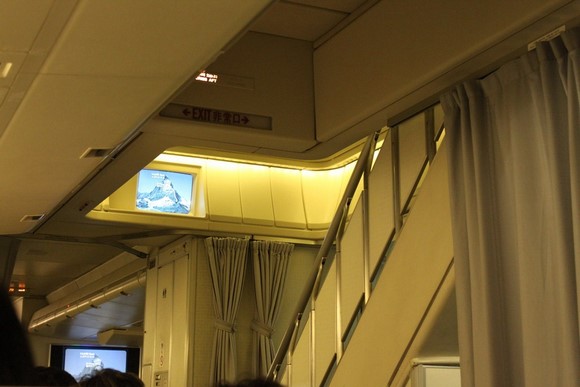

Dinner was Korean bibimbap.
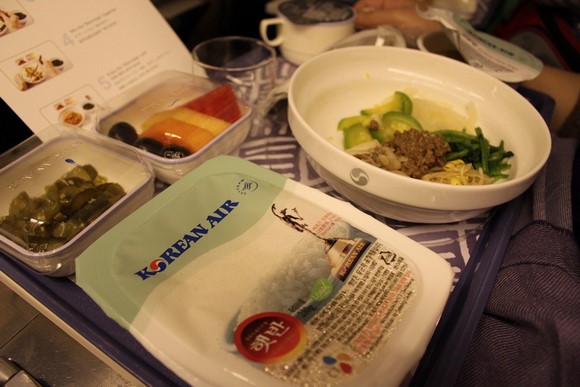

Arrived at Incheon Airport at 5 AM local time. The terminal was quiet.
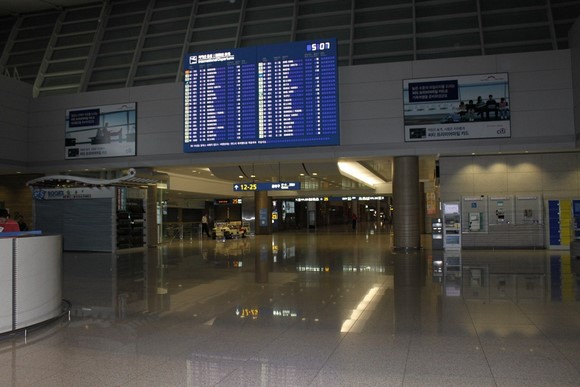

The transit lounge on the fourth floor.


The lounge had free internet access.


Had a Korean breakfast at Incheon Airport—it was terrible.
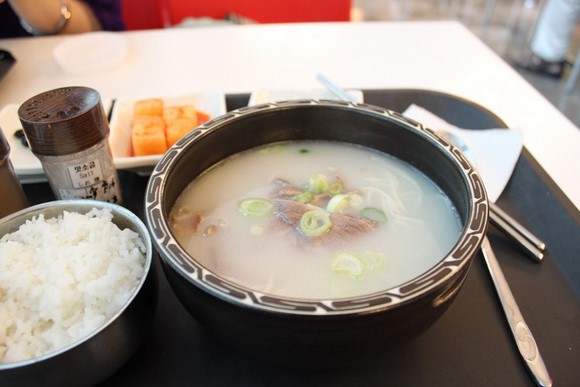

The flight arrived at New Chitose Airport earlier than scheduled, but immigration took much longer than expected. (Note: Currently, entering Japan requires electronic declaration. For details, refer to this guide: Visit Japan Web Tutorial! 2024 VJW Japan Entry QR Code Filling Guide.)
After much effort, we finally made it to the airport lobby and realized how massive New Chitose Airport really is. ANA and JAL even have dedicated counters and numerous boarding gates.
Since we planned to start our self-drive tour the next day, we first took the JR train to Sapporo from the arrival hall. Just take the escalator down one level to reach the JR station.
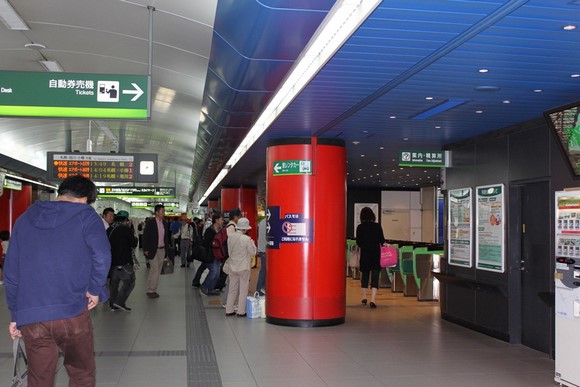

The JR ride to Sapporo takes only 39 minutes. A non-reserved seat ticket costs 1,040 yen (now 1,150 yen). For reserved seats, you’ll need to pay an additional 840 yen. Buying tickets is as easy as purchasing subway tickets.
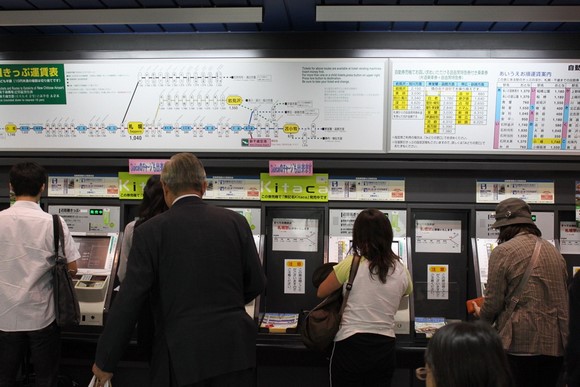

For our first night in Sapporo, we booked Hotel Fino Sapporo, located at the north exit of Sapporo Station. This hotel has changed hands several times and is now called Hotel Mystays Sapporo Station North Exit. It’s just a 2-3 minute walk from Sapporo Station. The main reason for choosing this hotel was its proximity to the Mazda Rent a Car (now Times Car Rental) Sapporo Station North Exit branch, where we planned to pick up our rental car the next morning—just a minute away (though it took us 45 minutes to find it the next day; stay tuned for Day 2’s story).
Exterior of Hotel Fino Sapporo
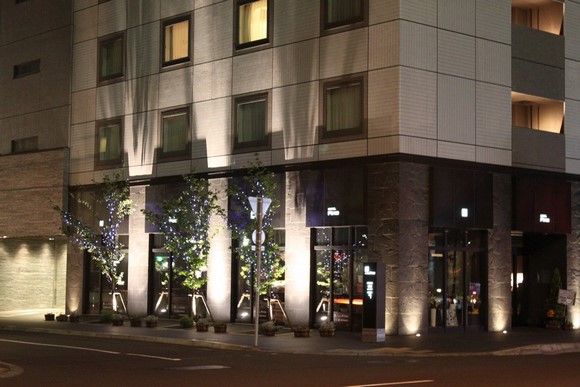

The hotel room was clean and modern, but quite small. Once we opened one suitcase, there was barely any space to move around.
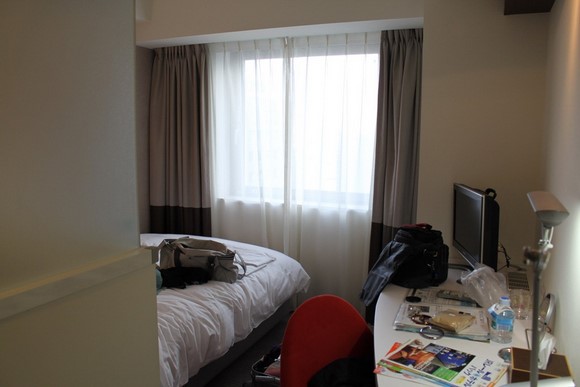

After taking a red-eye flight with a layover, we were exhausted by the time we reached the hotel in Sapporo. A quick shower helped freshen us up before heading out. Since we didn’t have much time in Sapporo on the first day, we decided to explore the area around Sapporo Station and Odori Park.
Landmark at the south exit of Sapporo Station. The ESTA building on the left is huge and has plenty of shopping options.
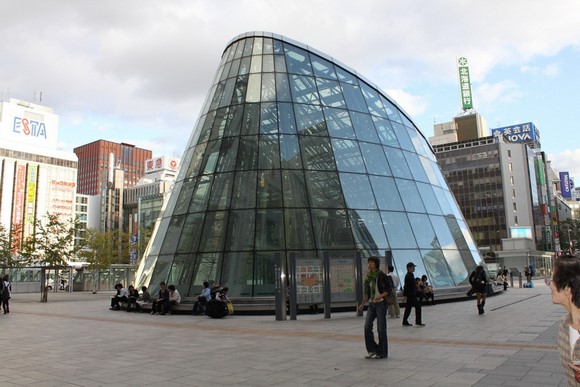

Our first stop was Snow Brand Parlor Sapporo Main Store for some ice cream.
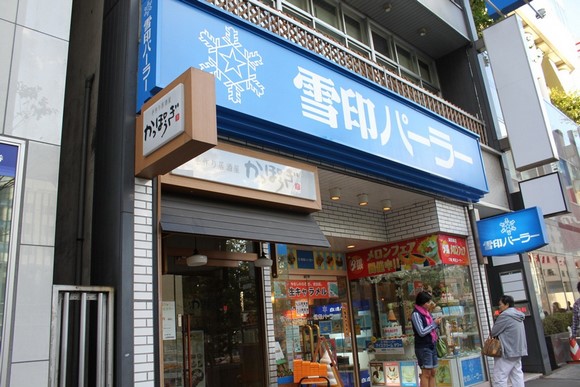

We had this cup of ice cream at Snow Brand. It was delicious but cost over 3,000 yen—way too expensive.
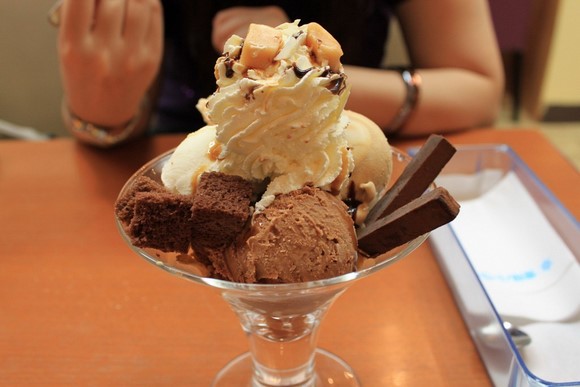

After the ice cream, we continued toward Odori Park, passing by the Sapporo Clock Tower.
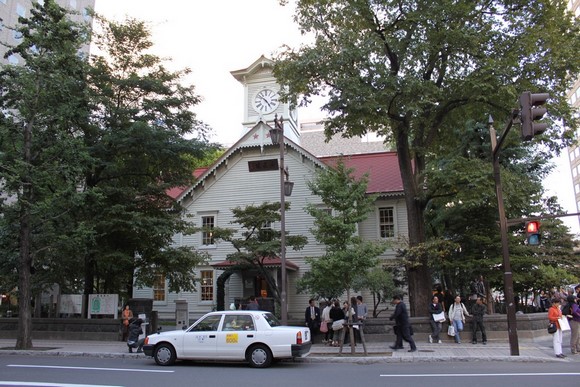

Arrived at Odori Park.
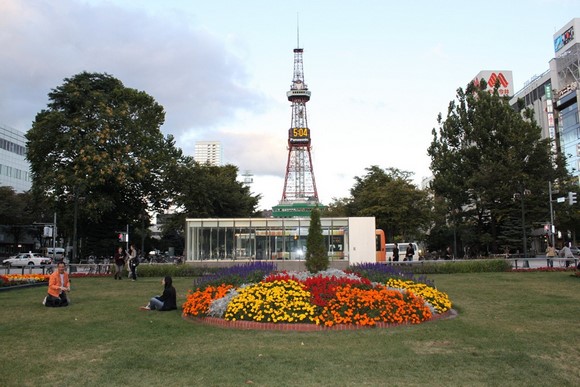

By late September, Sapporo gets dark by 5:30 PM.
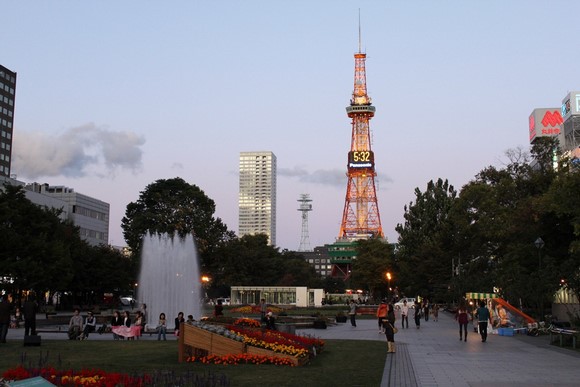

The Sapporo TV Tower illuminated at night. . . . . . . . . . .


Sapporo’s city center isn’t very large. Aside from the suburbs, most tourist spots and shopping areas are concentrated between Sapporo Station and Susukino, with Odori Park in the middle. Between Sapporo Station and Odori Park, you’ll find two historic sites worth visiting: the Former Hokkaido Government Office and the Clock Tower. Odori Park is also a main attraction, though it’s just an ordinary park—nothing particularly special unless you visit during the Snow Festival in winter.
Most department stores are clustered around the south exit of Sapporo Station, but they pale in comparison to those in Tokyo or Osaka. Susukino is another shopping hub, with tourists flocking to Tanukikoji Shopping Street, similar to Osaka’s Shinsaibashi area, though on a smaller scale.
For transportation, while there are two subway stations between Sapporo Station and Susukino (Odori Station and Susukino Station), the distance is short enough that taking the subway isn’t necessary. It’s about a 10-minute walk from Sapporo Station to Odori Park, and another 10 minutes to Susukino. The subway’s ups and downs just add unnecessary hassle.
In late September, Hokkaido gets dark by around 5:30 PM. Once night falls, there’s not much to do outdoors, so after exploring Odori Park, we headed back to Sapporo Station for dinner.
This is where we had our first meal in Hokkaido—Kani Honke.


This Kani Honke Sapporo Station Main Branch is near the south exit of Sapporo Station. There’s another branch in Susukino, which we visited on a later trip.
We ordered the 8,000 yen “Ginpaku Kaiseki” set, which was more than enough for two people.
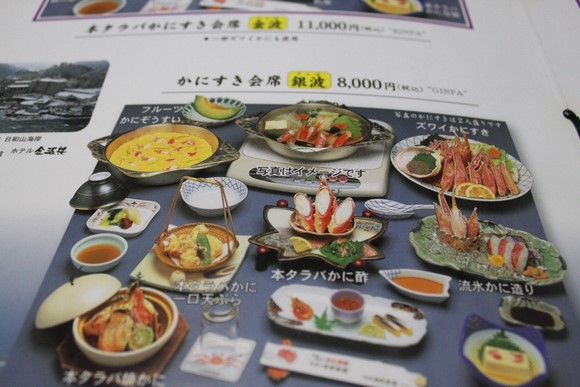

Delicious crab legs.
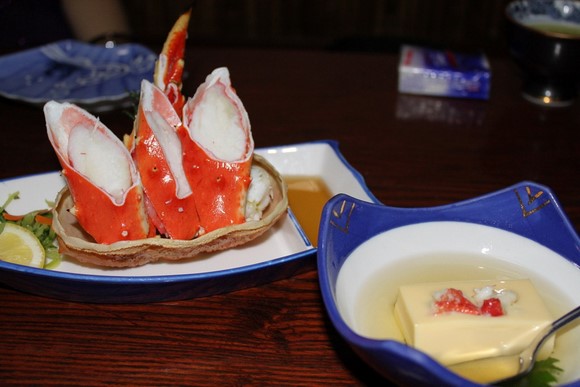

Crab sashimi… so sweet and fresh.


Crab roe… absolutely delicious.
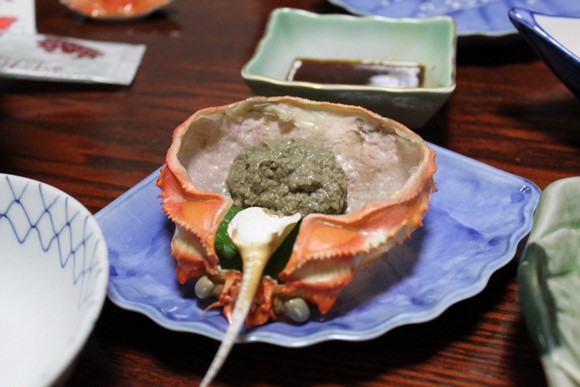

Grilled crab legs… so fragrant.
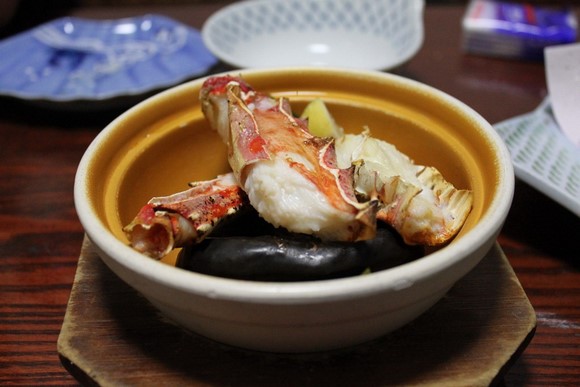

And a pot of crab leg hotpot with vegetables.
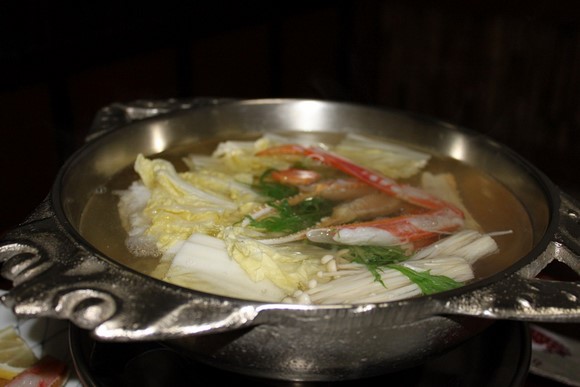

Finally, melon for dessert—totally satisfying.
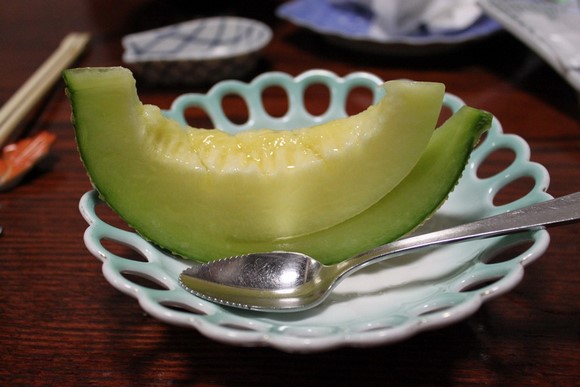

After dinner, we browsed around ESTA and then headed to the 38th-floor observation deck (T38) at JR Tower for a night view of Sapporo.
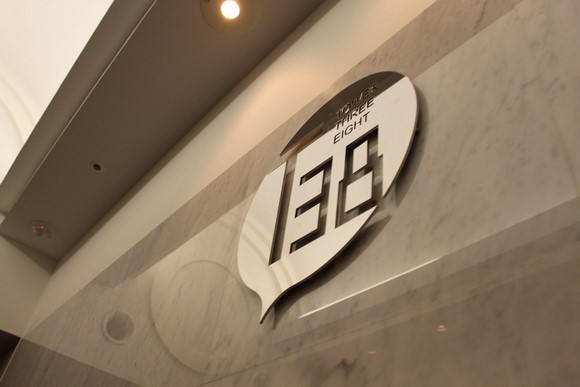

View toward the north exit of Sapporo Station.
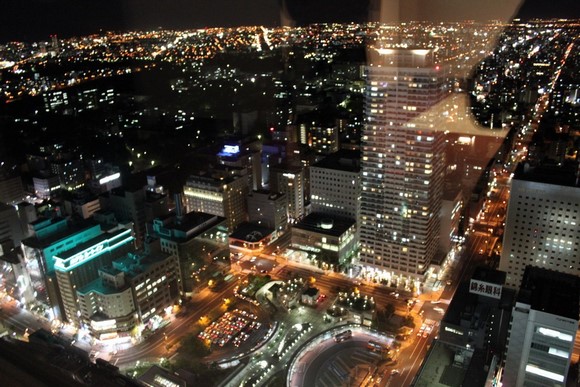

View toward the south exit of Sapporo Station.
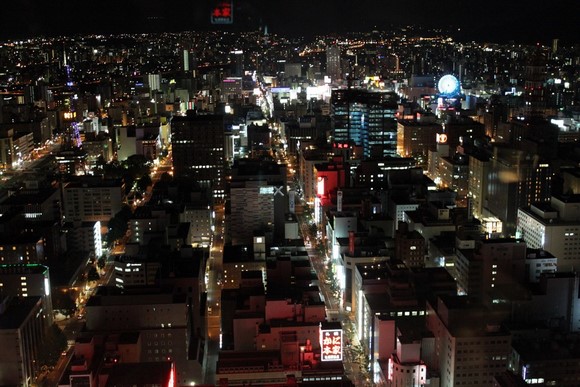

Here’s a men’s restroom with an unbeatable 38th-floor view.
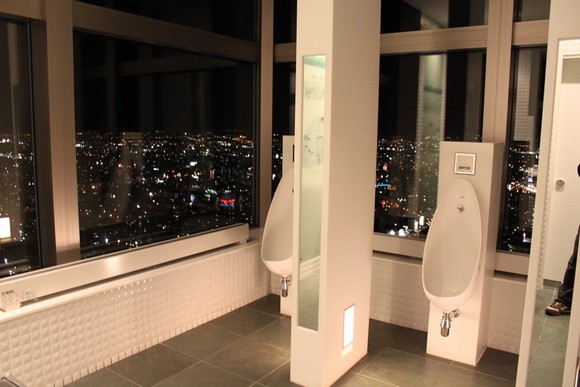

—End of Day 1—
Day 2: Sapporo Self-Drive Tour Begins, Visiting Jozankei, Hoheikyo Dam, and Lake Shikotsu
Hokkaido self-drive tour, Day 2, September 27, sunny, temperature 12~20°C
Itinerary: Sapporo _ Jozankei _ Hoheikyo Dam _ Lake Shikotsu _ Noboribetsu Onsen
Today marks the start of our six-day self-drive tour in Hokkaido. Many people enjoy self-driving in Japan—it’s fun and offers freedom. But to some extent, it’s also a necessity. Outside of Tokyo and Osaka, where attractions are concentrated, tourist spots in other regions are scattered, and Hokkaido is the most extreme example. Without a car, hauling luggage on trains and buses every day would be exhausting.
We rented the car through ToCoo! Car Rental. Since Mazda Rent a Car (now Times Car Rental) was running a promotion, we rented a 1300cc Mazda Demio for six days and five nights at a total cost of 28,000 yen. We also purchased additional insurance when picking up the car.
Including insurance, the total rental cost was around 34,000 yen. Over six days, we spent about 10,000 yen on gas, 6,000 yen on highway tolls for two trips, and 3,000 yen on parking. The total direct cost for the self-drive portion was approximately 53,000 yen.
When booking online, we chose to pick up the car at the Mazda Rent a Car Sapporo Station North Exit branch. For convenience, we stayed at Hotel Fino the night before, thinking it was just steps away. Little did we know… we couldn’t find the rental branch no matter how hard we tried. After asking passersby and going in circles, it took us nearly 45 minutes to locate it.
Turns out, the rental shop was indeed close—less than 100 meters from the hotel, just across a street. The problem was the signage: the company name was tiny, barely visible on the door, with no prominent sign. We walked right past it without noticing. Lesson learned—always scout the location the night before!
Having rented cars before, I handed over my documents and reservation email copy as soon as we found the shop. Payment was quick, and after a routine check for scratches, the staff handed me the keys and left—no questions about whether I knew how to use the GPS. Luckily, I’d figured it out from past rentals.
This Mazda Demio was our trusty ride for six days in Hokkaido, covering over 1,200 kilometers. The only downside? The 1300cc engine struggled a bit on uphill climbs.
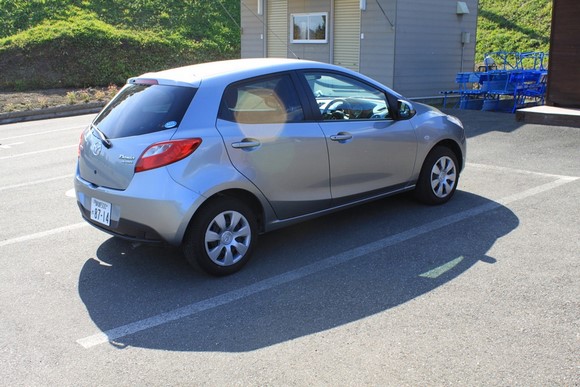

Today’s driving route covered about 200 kilometers, from Sapporo via Jozankei, Hoheikyo Dam, Lake Shikotsu, and Tomakomai to Noboribetsu Onsen.
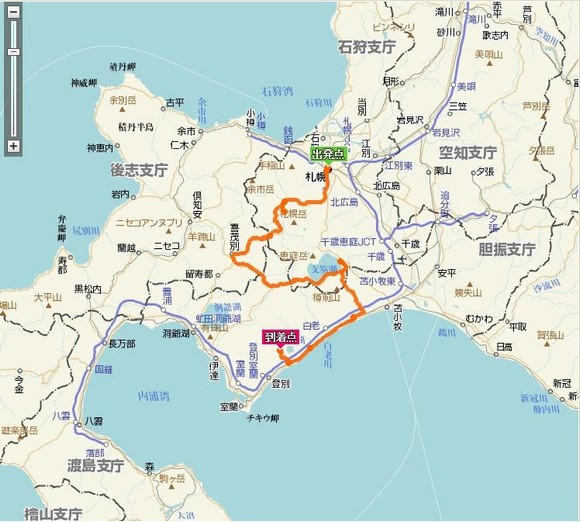

First stop: Jozankei, just a 30-minute drive from Sapporo.
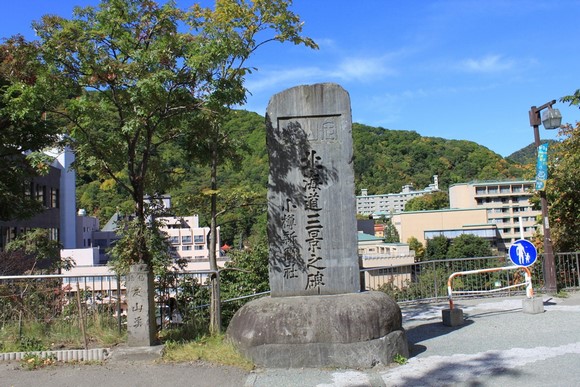

Jozankei is one of Hokkaido’s famous autumn foliage spots, but when we visited in late September, the leaves hadn’t turned yet.
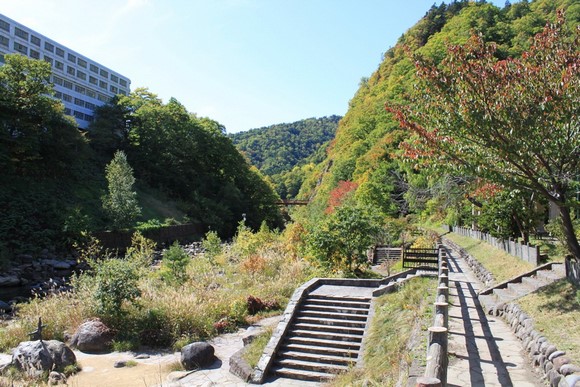

Futami Suspension Bridge in Jozankei, a hotspot for autumn foliage viewing.
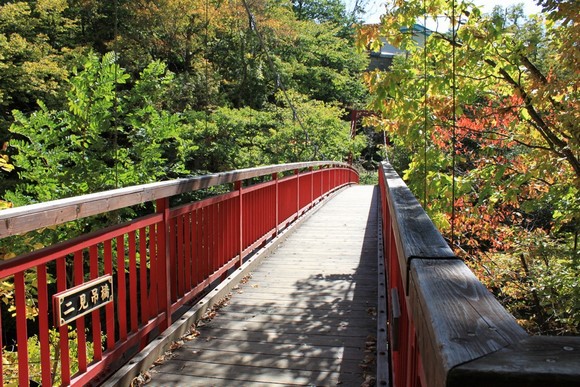

Next stop: Hoheikyo Dam, about a 7-8 minute drive from Jozankei. Cars can only park at the lot below the dam.


From the parking lot, you need to take this electric shuttle to the dam. Round-trip fare is 600 yen per person. Walking is an option, but I’d regret it—it’s way too far…
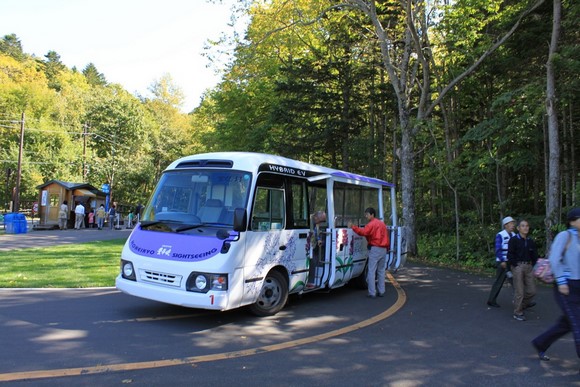

Hoheikyo Dam is actually a reservoir and, like Jozankei, a famous spot for autumn foliage.
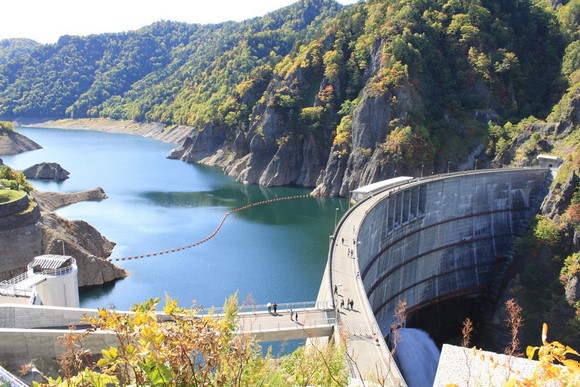

A super-short free cable car ride takes you up to the observation deck.
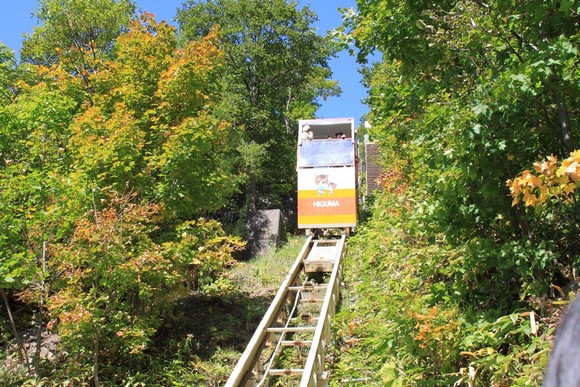

Scenery captured from the observation deck
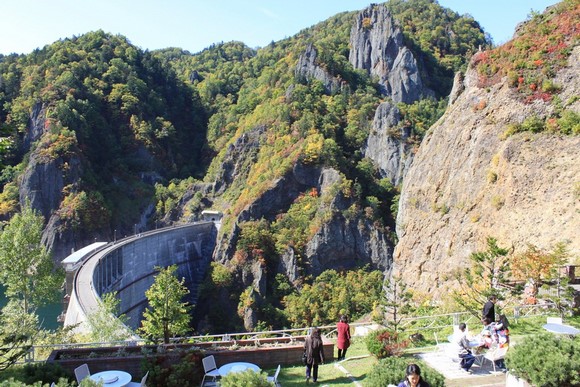

Hoheikyo Dam
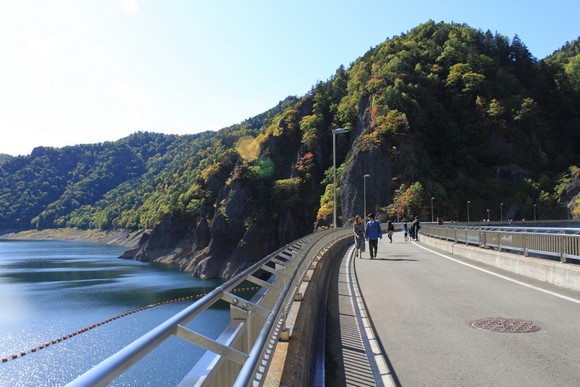

After visiting Hoheikyo, our next destination is Lake Shikotsu, passing through the Nakayama Pass rest area.
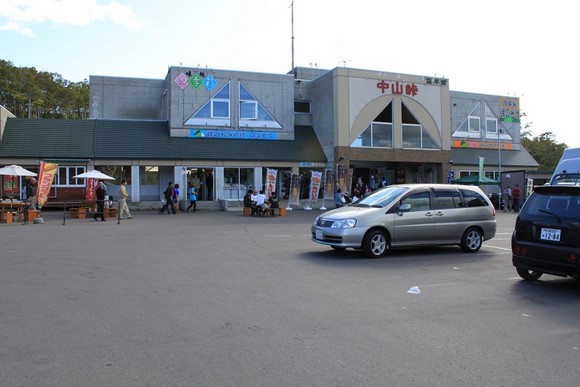

Local specialty made from potatoes. The taste was so-so, but quite filling.
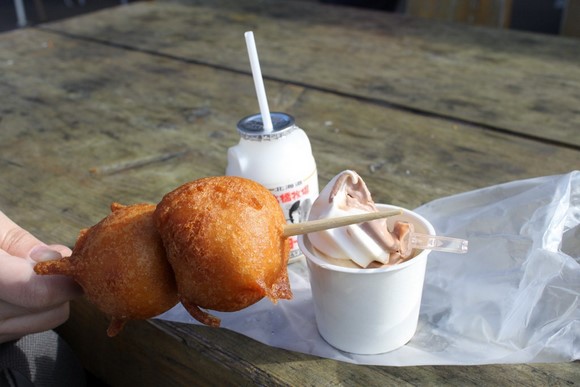

From the Nakayama Pass rest area, you can see Hokkaido’s famous Mount Yotei, hence it’s also called “Sheep-Gazing Nakayama.”
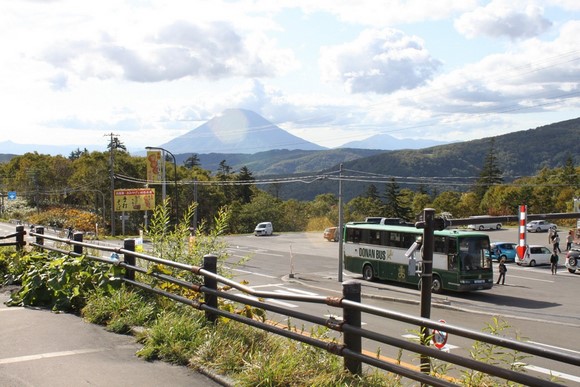

Passing by Koke no Dōmon near Lake Shikotsu. Due to time constraints, we only took a photo at the entrance before leaving.
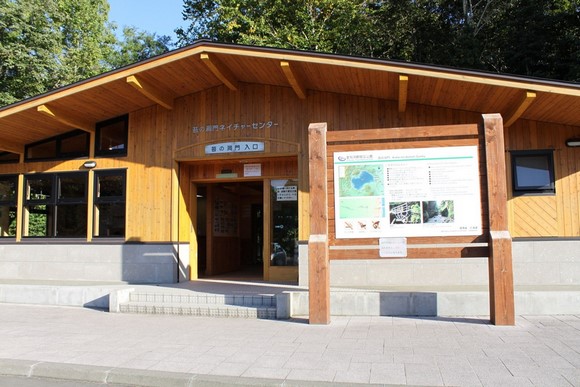

Finally arriving at Lake Shikotsu, though it was already close to 4 PM, giving it a dusk-like atmosphere.
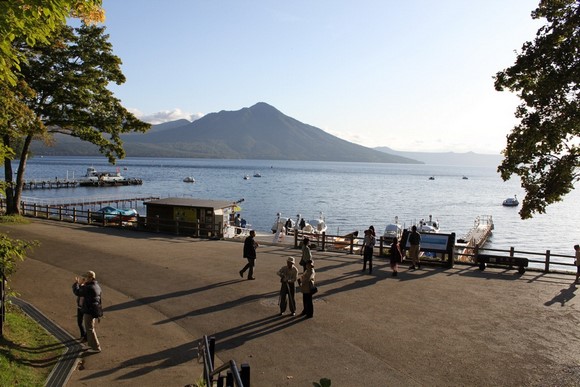

Many duck boats by the lakeside
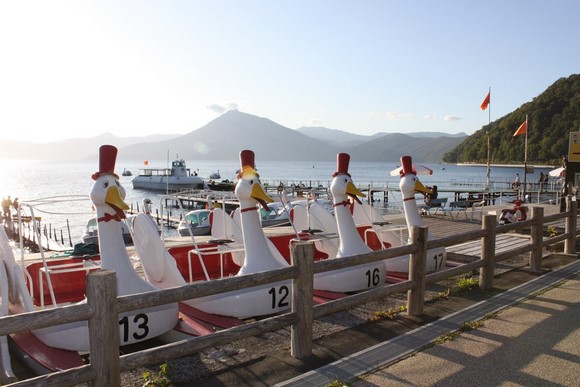

After visiting Lake Shikotsu, it was already 4:30 PM. Since the drive from Lake Shikotsu to Noboribetsu Onsen was expected to take about an hour, we hurriedly set off to avoid driving after dark.
Our accommodation for the night in Noboribetsu Onsen was Takinoya Annex Tamanoyu.
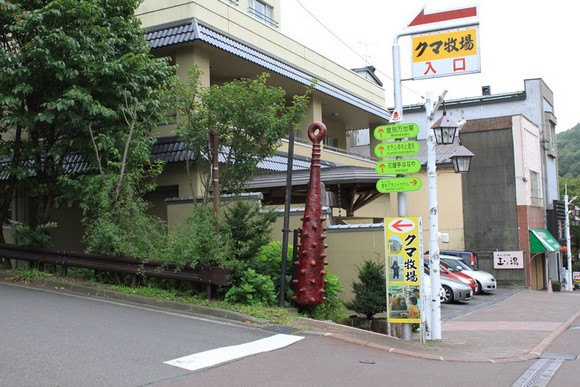

Tamanoyu’s Japanese-style room
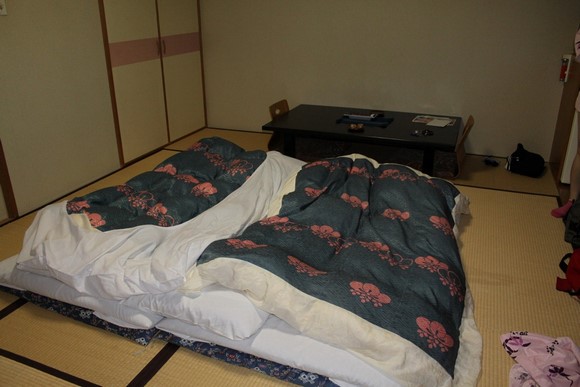

Tamanoyu has only about 20 rooms, giving it a very cozy feel. However, the staff didn’t speak much English, making communication a bit challenging, though we managed to understand each other. As for the hot springs, there’s only one outdoor bath for each gender, and it was just average. Additionally, the rooms didn’t have shower facilities, so you had to use the communal bath area for showers. The dinner and breakfast were also mediocre, so overall, my rating wasn’t very high.
Dinner appetizer. The taste was average.
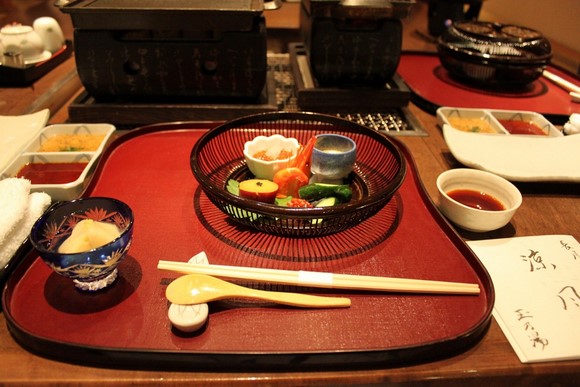

Skewers. The portion was too small.
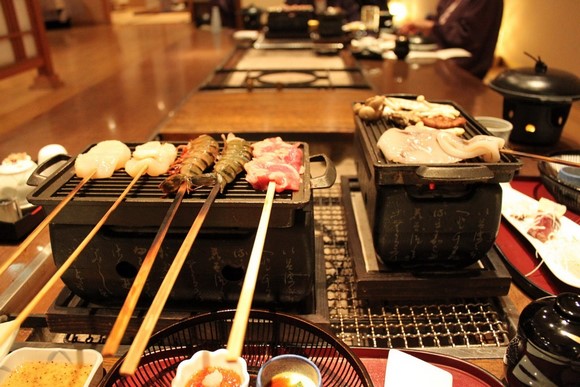

Menu. The other dishes were average, so I didn’t take many photos.
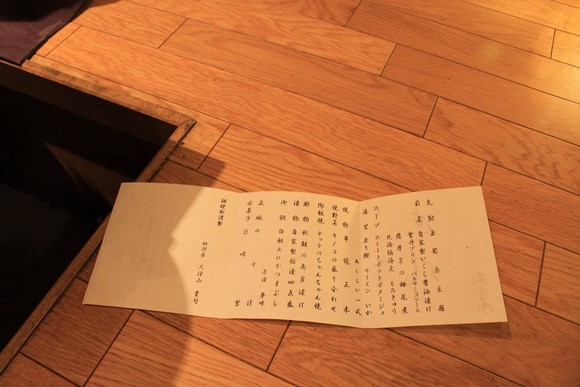

Since many shops in Noboribetsu Onsen Street stay open until 10 PM, there was still time to explore after dinner.
Perhaps because it wasn’t peak travel season, there weren’t many tourists on Noboribetsu Onsen Street.
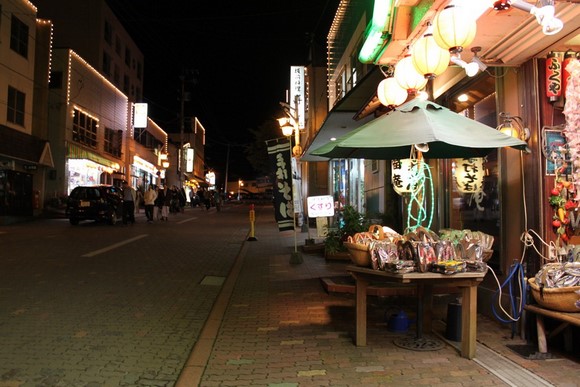

Daikokuya, often mentioned in travel guides, but there wasn’t anything particularly special worth buying.
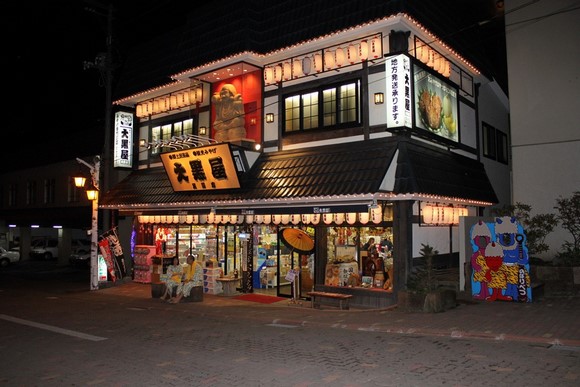

Cute demon statue
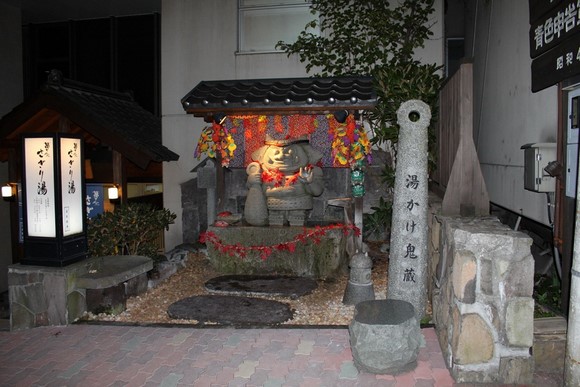

—End of Day 2 Itinerary—
Day 3: Exploring Noboribetsu Jigokudani, Muroran, and Mount Hakodate
Day 3 of the Hokkaido road trip, September 28, sunny in the morning, rainy in the afternoon, temperature 12~20°C
Itinerary: Noboribetsu Onsen _ Muroran _ Hakodate
While self-driving offers convenience and freedom, Hokkaido is so vast and its attractions so spread out that a significant amount of time is spent on the road, often during the most precious daylight hours. This leaves little time for sightseeing. Another issue is the daily packing and unpacking of luggage, which can be quite troublesome. If we had more time, staying two nights at each location would have been perfect.
To maximize our sightseeing time, we had to wake up at 7 AM every day during this trip—quite exhausting.
Breakfast at Tamanoyu. The taste was average.
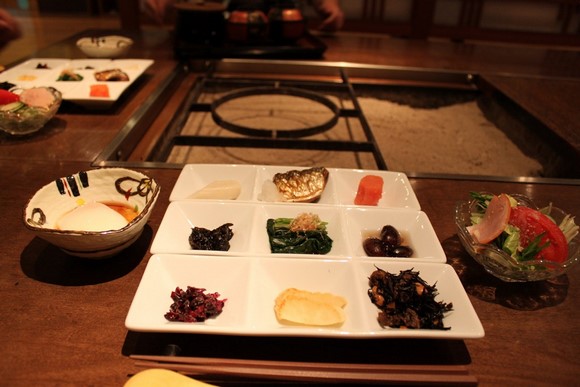

Noboribetsu Onsen Street in the early morning, very quiet.
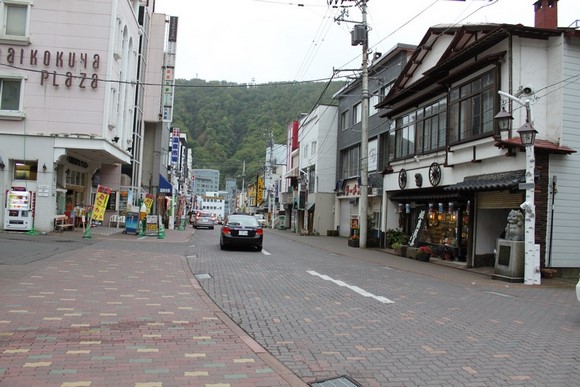

The most popular store on Noboribetsu Onsen Street—7-Eleven.
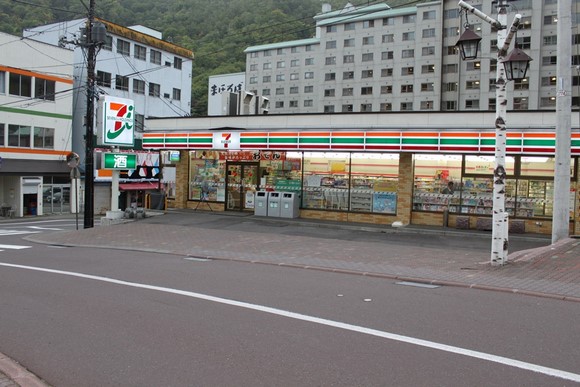

Enmado on Noboribetsu Onsen Street
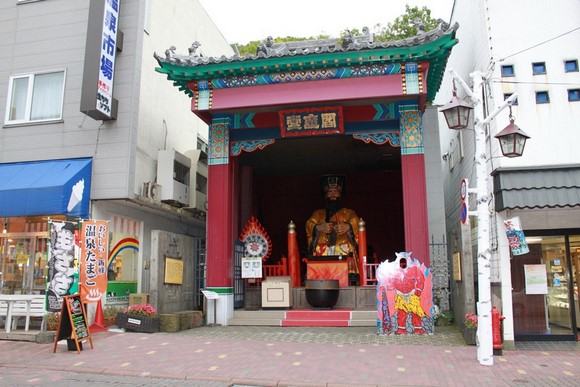

Jigokudani Hot Spring Park, just a hot spring vent, nothing special.
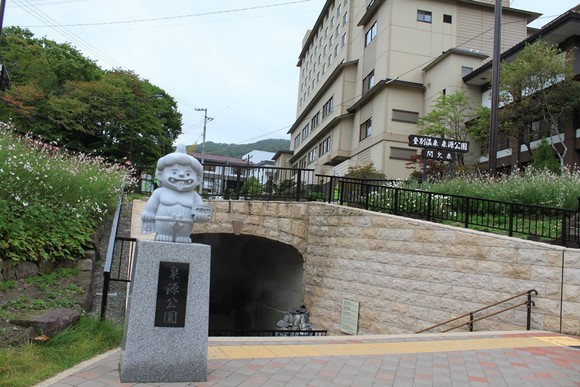

The red and blue demons by the roadside leading from Noboribetsu Onsen Street to Jigokudani.
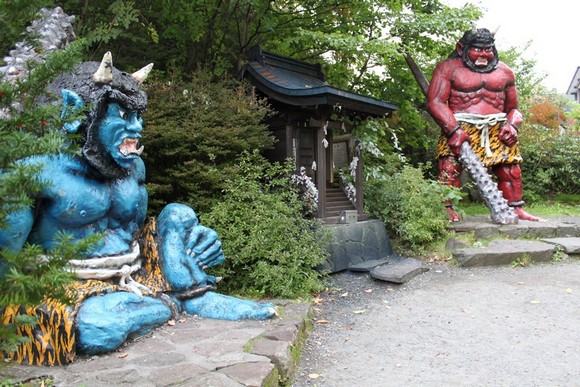

Noboribetsu Jigokudani is located next to Dai-ichi Takimotokan, just a few minutes’ walk from the onsen street.
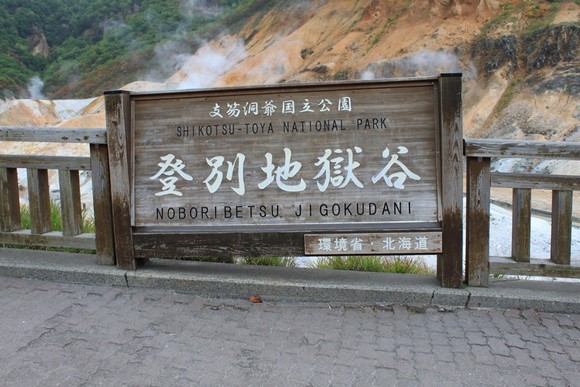

A view of Noboribetsu Jigokudani
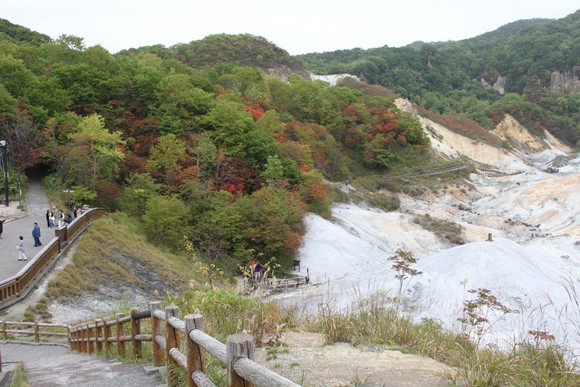

Another view of Noboribetsu Jigokudani
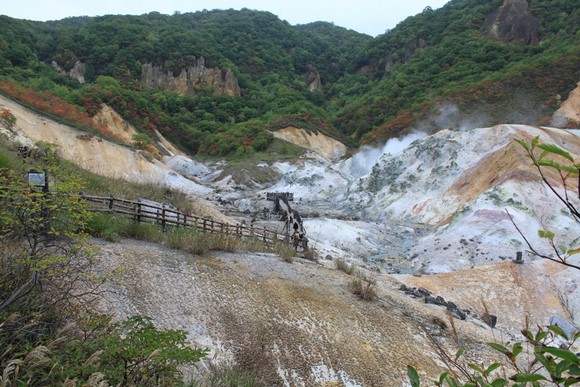

Tamanoyu’s lobby. Every morning at 9 AM, they demonstrate homemade mochi. By the time we returned from Jigokudani, it was already 9:30 AM, so we missed the performance.
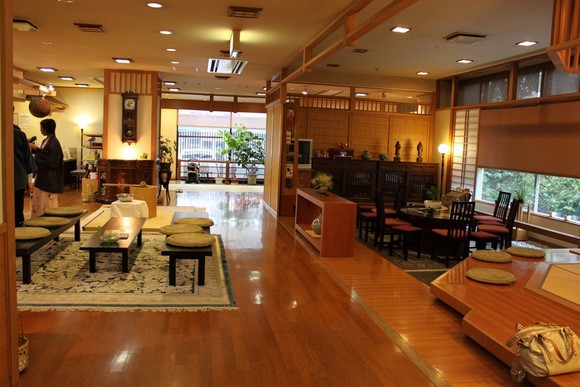

Although we missed the performance, we still got to taste Tamanoyu’s homemade mochi.
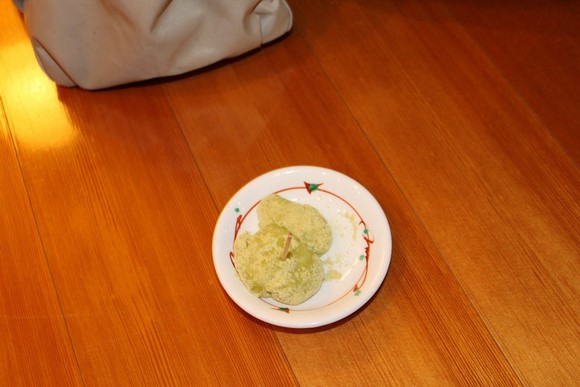

After eating the mochi, it was time to pack our luggage. Before leaving, we took one last dip in the hot spring.
Today’s driving route covers 230 km, from Noboribetsu Onsen via Muroran to Hakodate. Excluding stops for sightseeing and meals, the driving time is about 4 hours and 30 minutes. (Note: At that time, many sections of the highway connecting to Hakodate were still under construction, so we had to take national roads. However, the highway to Hakodate is now fully connected, significantly reducing travel time to about 3 hours.)


Heading toward Muroran. The weather today isn’t great.
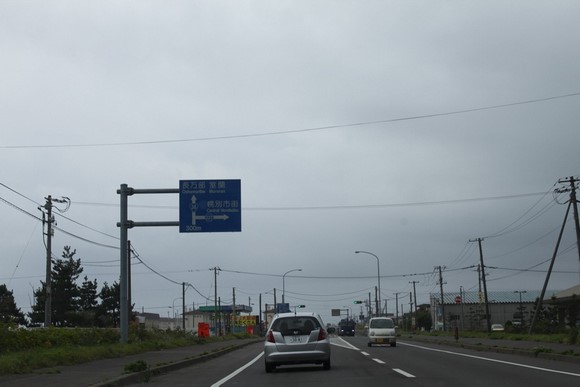

Cape Chikyu in Muroran. Honestly, there’s nothing special about it. The scenery in Kenting, Taiwan, is much more beautiful.
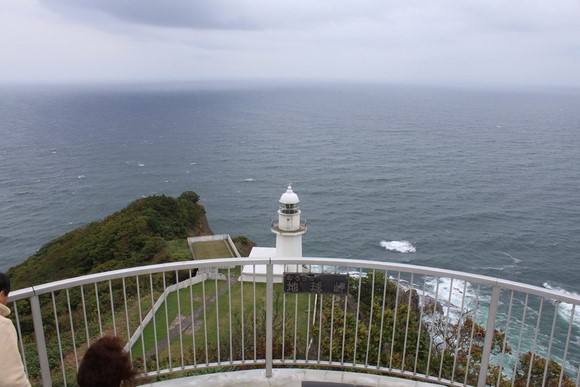

The Bell of Happiness at Cape Chikyu
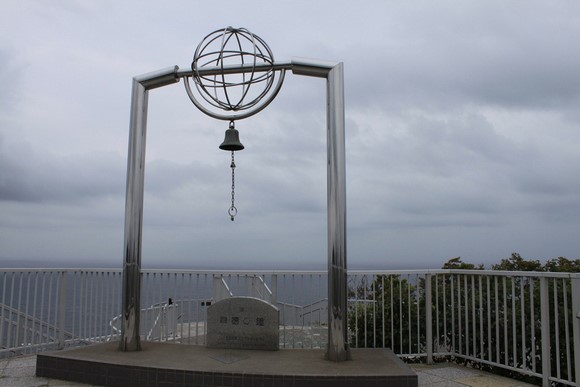

The next attraction in Muroran is the Shiraoi Bridge. This is the so-called observatory, but it was another disappointment.
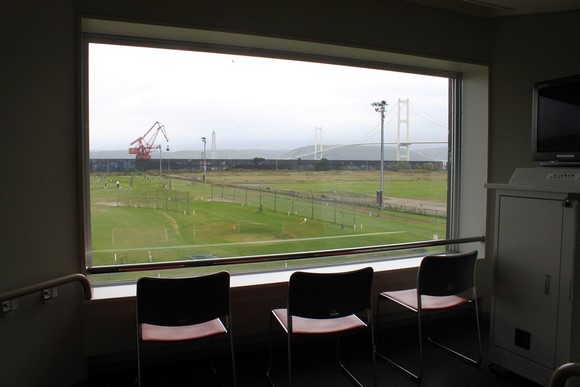

Crossing the Shiraoi Bridge, we officially set off for Hakodate.
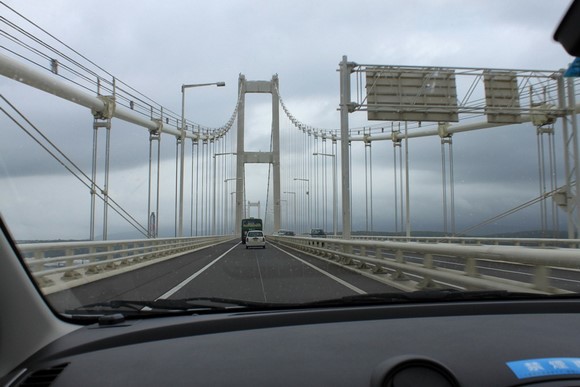

Multiple roadworks along the way
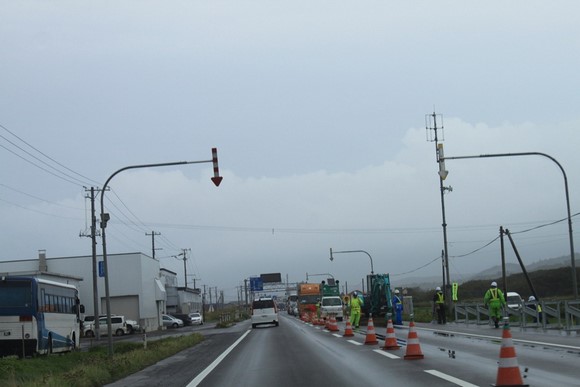

Stopped for lunch at a roadside market
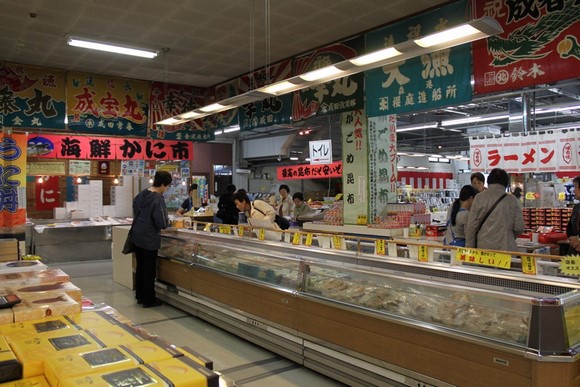

It started raining in the afternoon and didn’t stop until midnight.
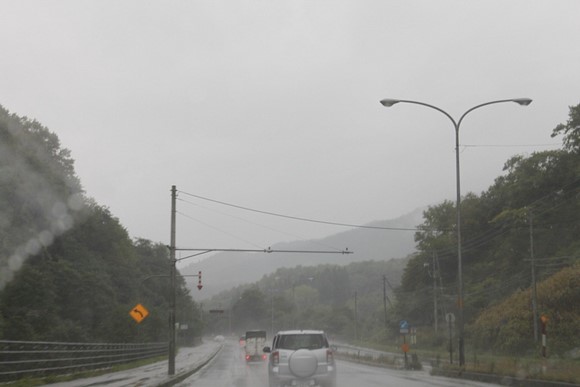

In Hokkaido, the quality of national and prefectural roads is excellent. Although the speed limit on national roads is 50 km/h, driving at 80–90 km/h in rural areas is usually fine. However, in residential areas, it’s best not to exceed 60 km/h due to possible speed checks. We were once caught speeding by the police (details will be shared on Day 6). As a result, we rarely took highways during this six-day trip, except for the routes from Otaru to Furano and back to Sapporo, as those sections pass through many towns, making it difficult to drive fast on national roads with frequent traffic lights.
While there are traffic lights on rural national and prefectural roads, they usually only change when pedestrians press the button, so they’re often green. Except for certain key sections, national and prefectural roads are typically two-lane, bidirectional roads with opposing traffic, separated by solid yellow or dashed white lines. On roads with dashed white lines, overtaking is allowed, but it’s best to wait for a long straight section and ensure no oncoming traffic before passing. Also, check if any vehicles behind you are overtaking, and remember to signal when passing.
Although there is a highway between Noboribetsu and Hakodate, it only goes as far as Yakumo (Note: It now extends to Onuma Park), so taking the highway doesn’t save much time. Additionally, National Route 5 in southern Hokkaido passes through few towns, so the travel time on national roads and highways is similar. There’s also a free highway called Hakodate Shindo between Onuma Park and Hakodate, which saves some travel time.
Due to delays in finding Cape Chikyu in Muroran and the rain, we arrived in Hakodate later than planned, reaching tonight’s accommodation, Comfort Hotel Hakodate, around 4:30 PM.
Front entrance of Comfort Hotel Hakodate
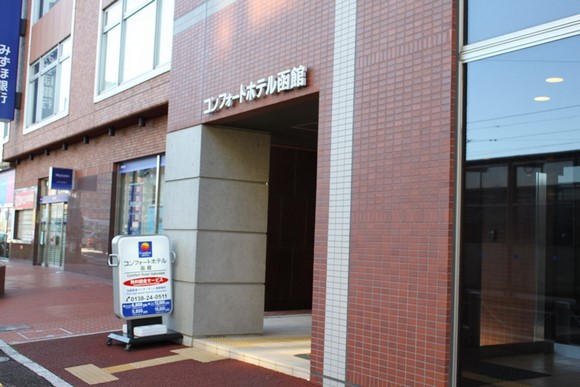

Comfort Hotel Hakodate room
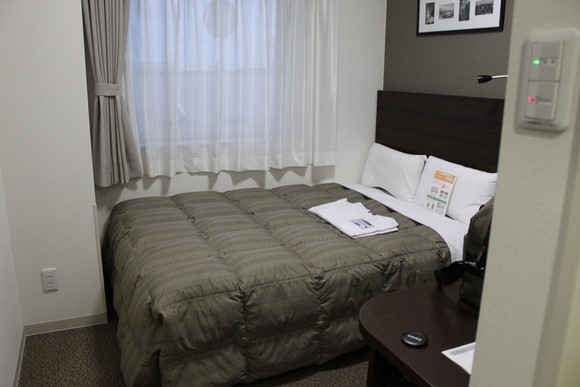

Comfort Hotel Hakodate bathroom
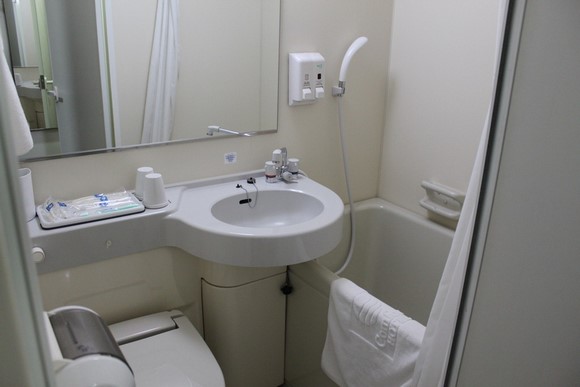

Compared to Sapporo, hotels in Hakodate are cheaper. This time, we stayed at Comfort Hotel Hakodate for 7,500 yen, which included breakfast vouchers worth 1,050 yen per person at Hakodate Morning Market’s “Kikuyo Shokudo,” making the net room rate only 5,400 yen. Parking cost an additional 500 yen per night at the hotel’s outdoor parking lot, located about 100 meters away.
After checking in, it was still raining, making it impossible to visit outdoor attractions, so we decided to explore indoor places.
Seafood Market, located next to Kanemori Red Brick Warehouse (There’s a parking lot beside the seafood market where you can park if visiting the Kanemori area.)
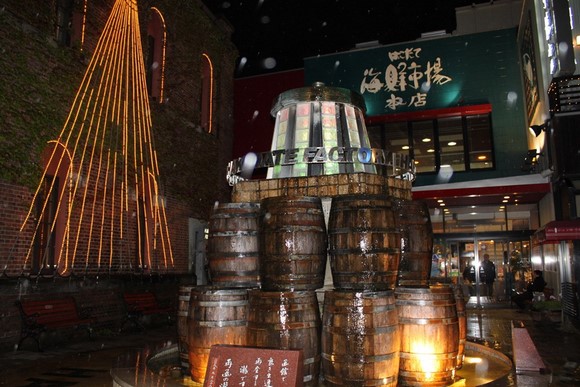

Inside the Seafood Market, a hub for souvenir shopping.
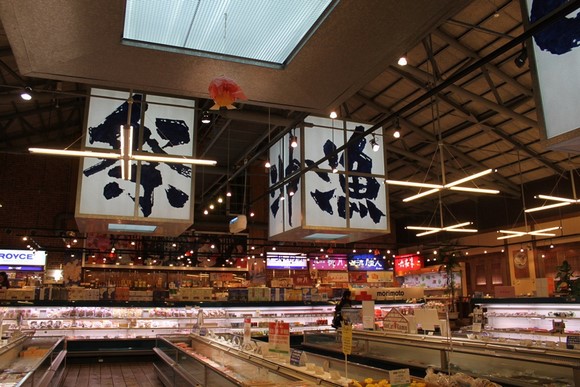

The Kanemori Red Brick Warehouses mostly sell handicrafts, with nothing particularly special worth visiting.
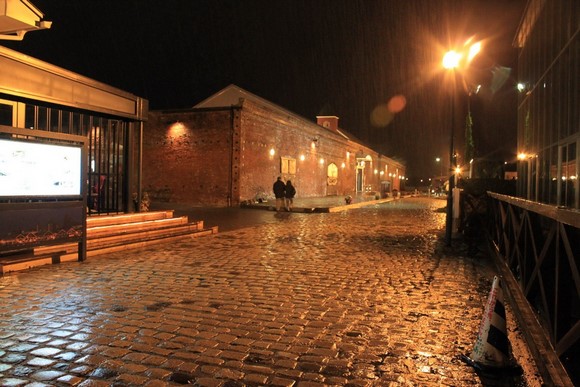

Although it kept raining and we knew there was little chance of seeing the night view from the mountain, since we were already here and only staying in Hakodate for one night, we decided to take our chances and go up Mount Hakodate anyway. During the day, you can drive up Mount Hakodate yourself, but after 6 PM, you can only take the cable car. The Hakodateyama Ropeway station has a free parking lot where you can leave your car.
As expected when we reached the top… well, just look at the famous million-dollar night view of Mount Hakodate that night…


Not being able to see the night view from Mount Hakodate was the biggest regret of this trip, but there was nothing we could do about the weather. We consoled ourselves by eating something delicious. Many people online recommended Kantaro Sushi, so we decided to go there for dinner.
Hakodate’s city center is actually very small. Although Kantaro is by the seaside, it’s less than a 10-minute drive from the Mount Hakodate Ropeway Station, and it has its own parking lot, so parking wasn’t an issue. The sushi at Kantaro is excellent, with very fresh ingredients. I especially liked the scallops (hotate), which were incredibly tasty and had a great texture. The prices were also very reasonable, offering great value for money. Unfortunately, I was too busy eating to remember to take photos.
—End of Day 3 Itinerary—
Day 4: Visiting Hakodate Morning Market, Motomachi, Goryokaku Park, Onuma Quasi-National Park, Mount Usu, Lake Toya Fireworks Festival
Hokkaido Road Trip Day 4, September 29, sunny, temperature 12~20°C
Itinerary: Hakodate _ Goryokaku Park _ Onuma Quasi-National Park _ Lake Toya
The first thing we did after waking up this morning was, of course, to open the window and check if it was still raining. Ha…ha, finally, the rain had stopped, and the sun was shining brightly.
The Comfort Hotel Hakodate where we stayed is right across from Hakodate Station. Just cross the street, and you’ll find the Hakodate Morning Market, which is very convenient. We also had breakfast at the market.
The outer area of Hakodate Morning Market
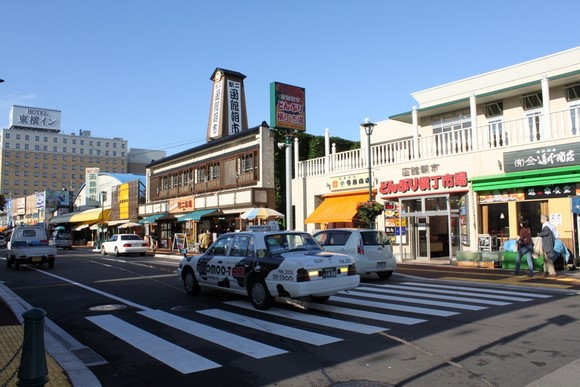

One of the indoor sections of Hakodate Morning Market
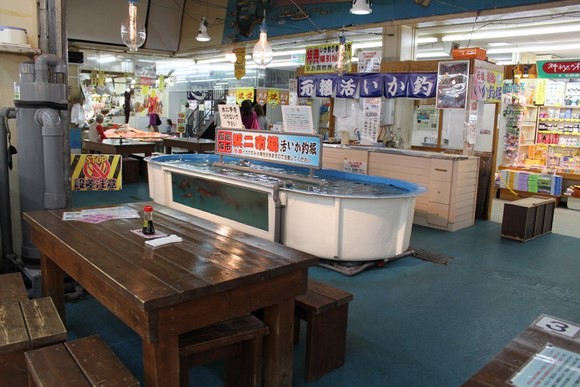

Two meal vouchers for “Kikuyo Shokudo” provided by the hotel
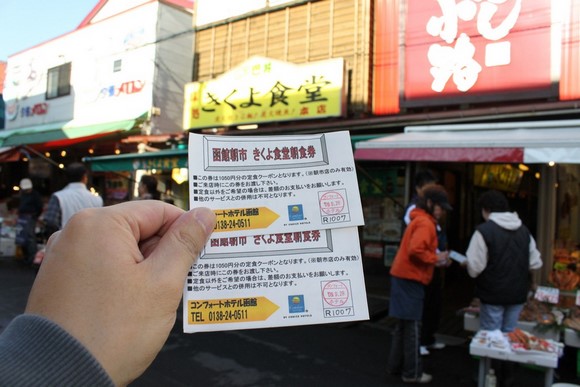

With the meal vouchers from the hotel, you can order any of the specified set meals or choose anything from the menu and pay the difference. “Kikuyo Shokudo” is famous for its sashimi rice bowls, so it would be a shame not to try them. In the end, we only needed to pay an extra 520 yen.


Stalls at Hakodate Morning Market
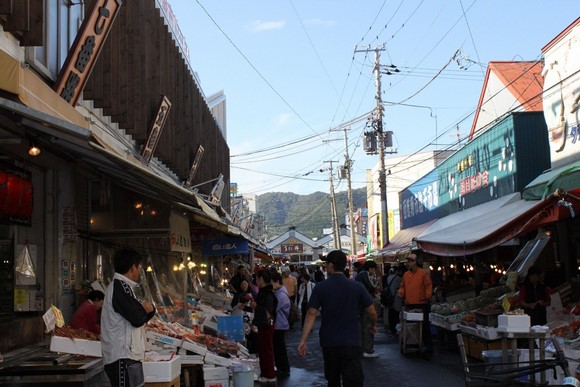

The market also has many fruit stalls, with Hokkaido’s specialty melons being the most common.
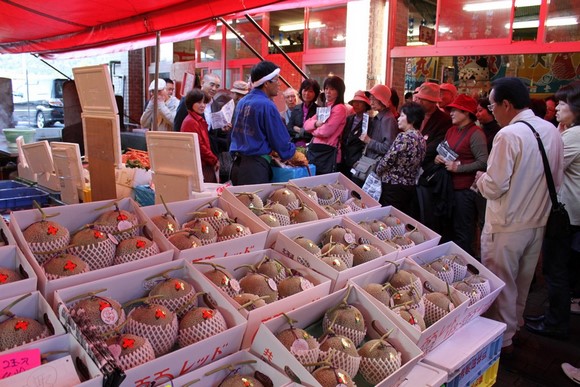

A mascot inside one of the shops
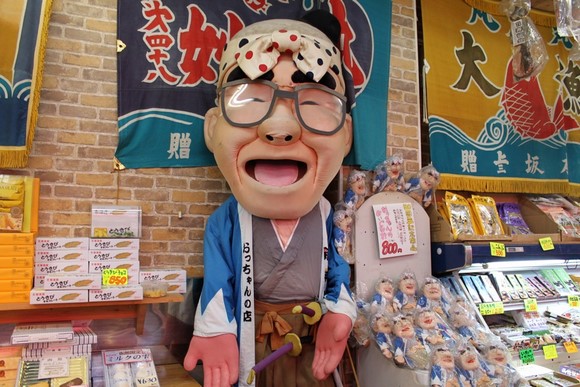

This Yoshioka Shokudo has been recommended in travel guides. It sells fresh sashimi and grilled seafood. We bought a grilled abalone, but the taste was just average.
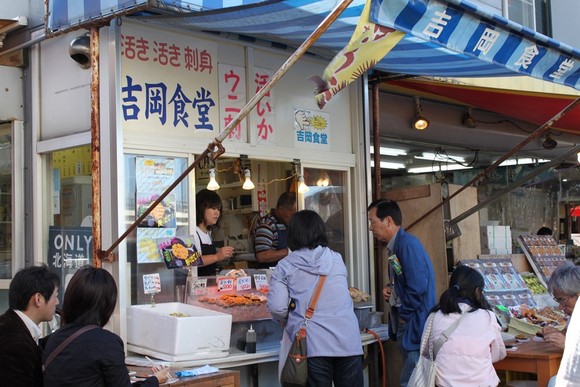

Hakodate Morning Market is quite large, with many things to see and buy. The corn sold here (280 yen per ear) is incredibly sweet and delicious.
Next to Hakodate Morning Market is JR Hakodate Station.
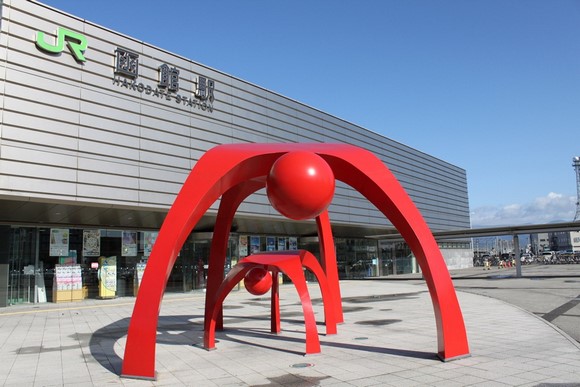

The Hakodate City Tram stop in front of Comfort Hotel Hakodate
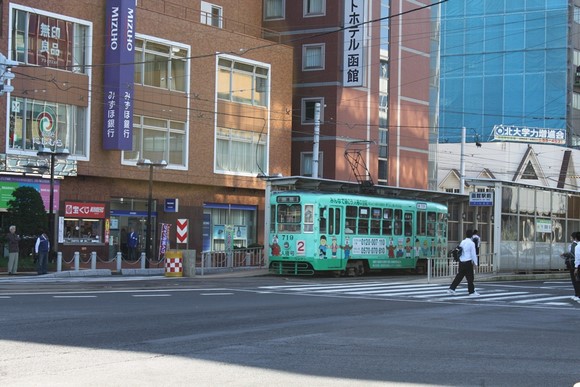

Another type of tram…
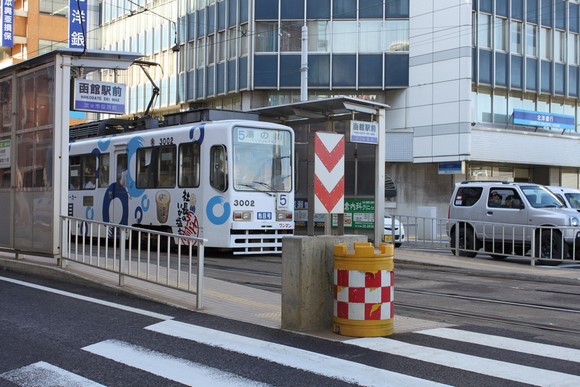

After breakfast and exploring Hakodate Morning Market and the area around Hakodate Station, it was time to check out and hit the road. With the clear weather, we first drove to the Motomachi district for sightseeing.
Early morning view of Hakodate Port
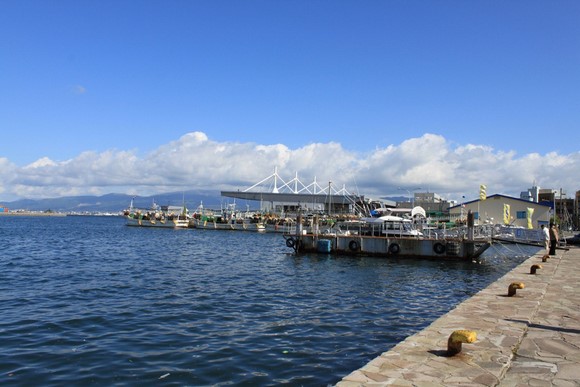

Kanemori Warehouses in daylight—finally, we could see them clearly.
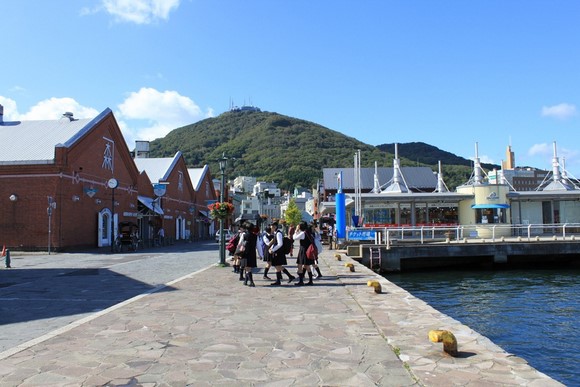

Hachiman-zaka Slope in Hakodate…
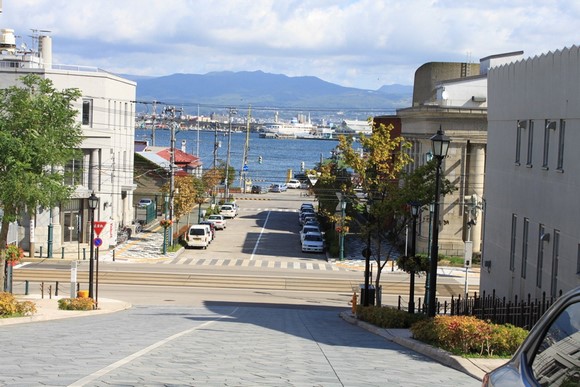

View of Mount Hakodate from Hachiman-zaka Slope
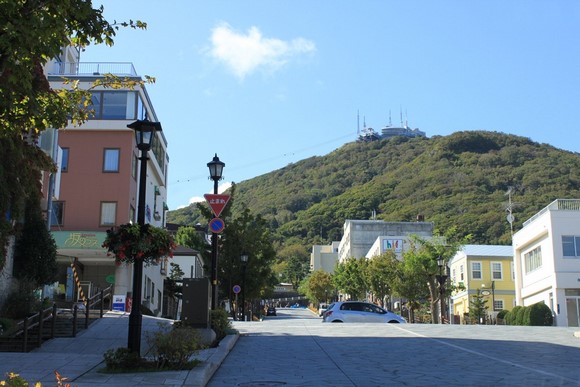

Old Public Hall of Hakodate Ward
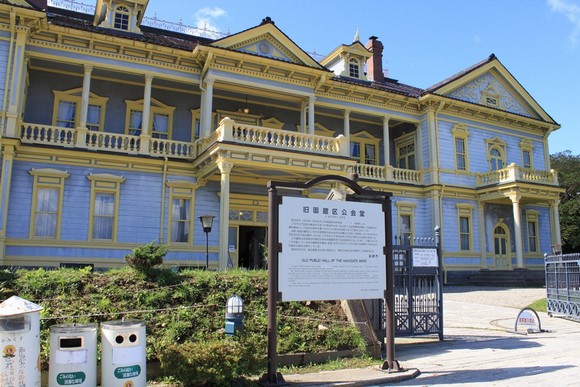

Outside the Old Public Hall of Hakodate Ward is Motomachi Park, which offers a view of the entire Hakodate Port.
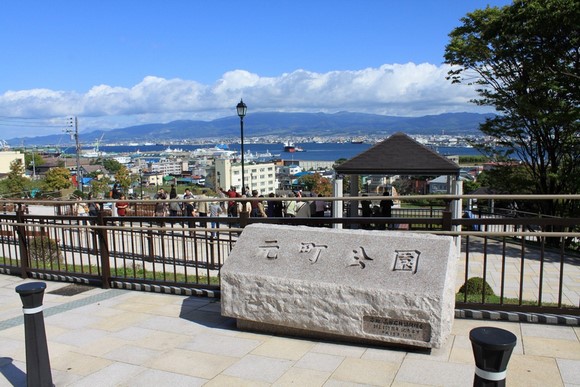

Today, we would drive from Hakodate to Lake Toya, stopping along the way to visit Goryokaku Park and Onuma Quasi-National Park.
Today’s driving route covers 170 km, from Hakodate to Lake Toya. Excluding stops for sightseeing and meals, the driving time is about 3 hours.
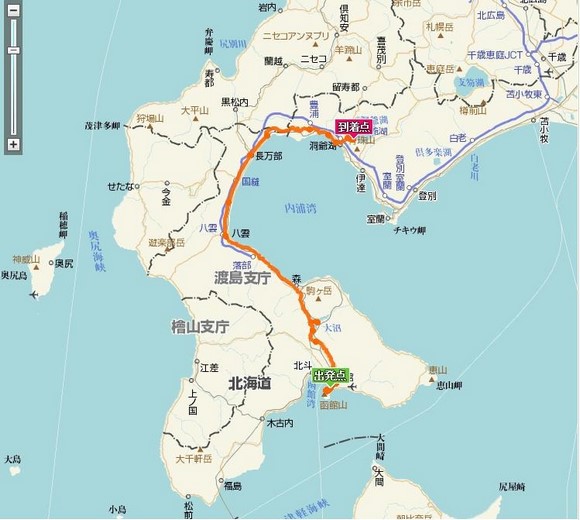

Departing from Goryokaku Park
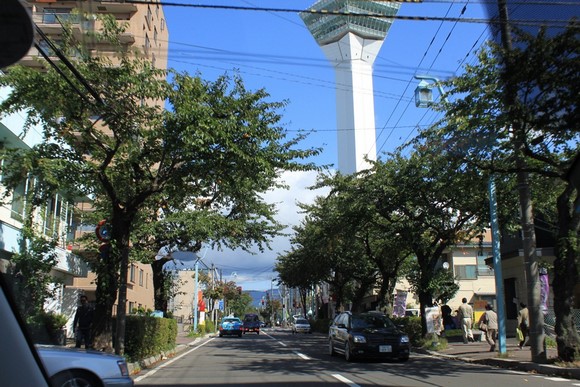

Actually, visiting Goryokaku Park just means going up this observation tower.
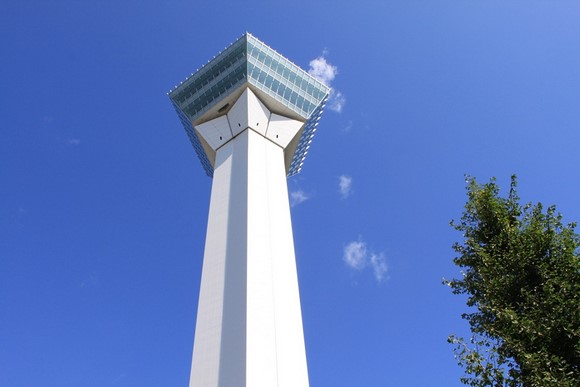

Inside the Goryokaku Park Observation Tower
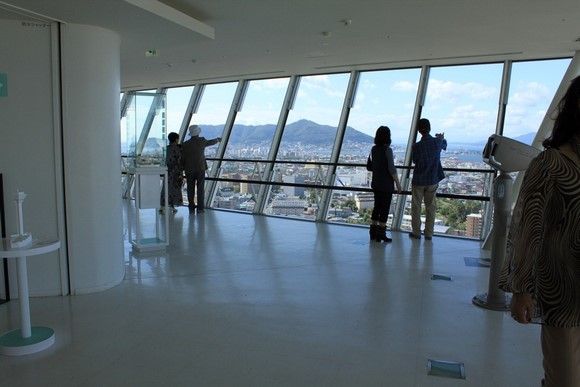

Panoramic view of Goryokaku Park from the observation tower
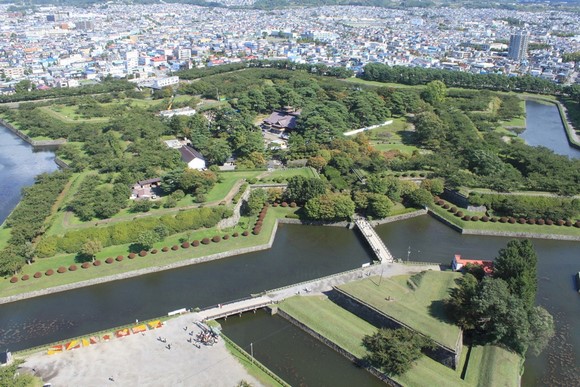

View of Mount Hakodate from the observation tower
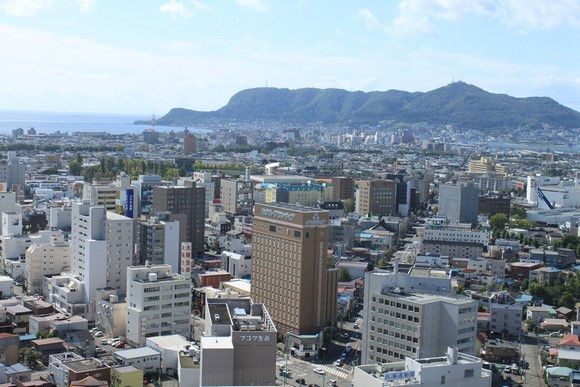

After leaving Goryokaku Park, we headed toward Onuma Park via the Hakodate Expressway, arriving in less than half an hour.
We spotted the sign for Onuma Park
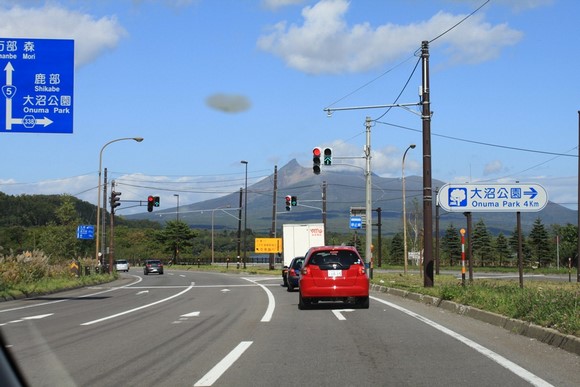

Onuma Quasi-National Park
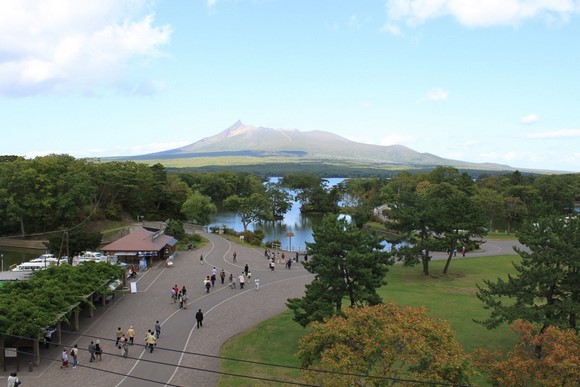

Onuma Lake. Perhaps because it wasn’t autumn foliage season yet, there wasn’t anything particularly special.
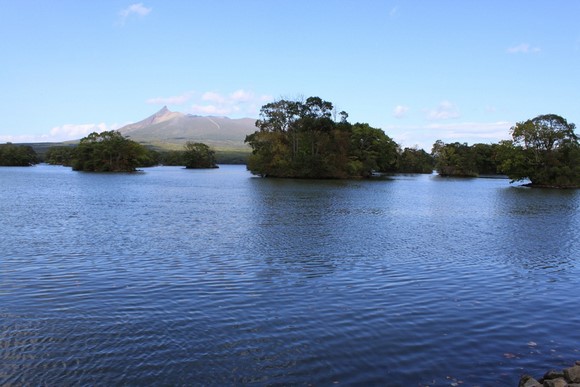

The smaller lake is called Konuma.
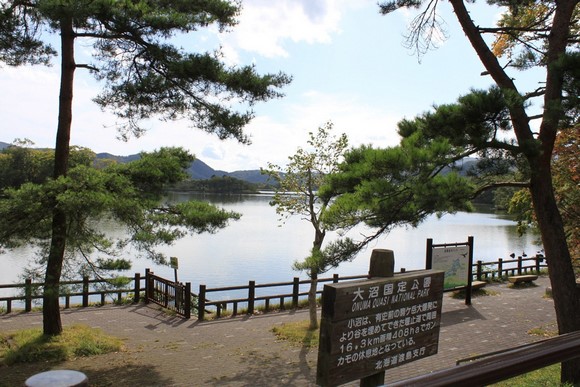

After a little over an hour of driving, we finally arrived at Lake Toya at around 4 PM.
The entrance to Lakeside Hotel, where we stayed tonight
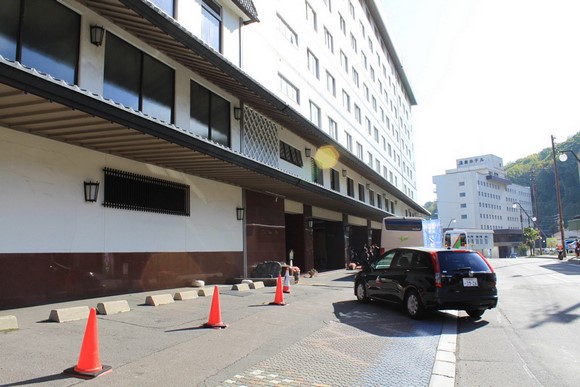

The lobby of Lakeside Hotel
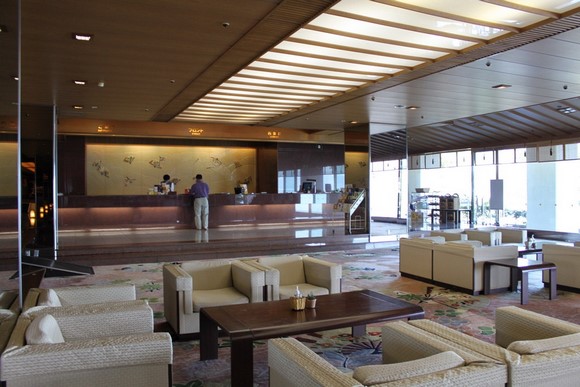

The other side of the lobby leads directly to the shore of Lake Toya.
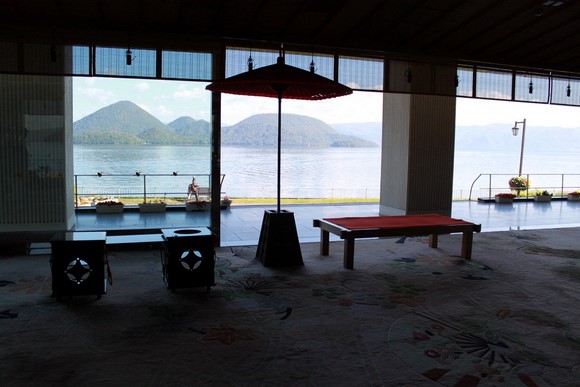

The Lakeside Hotel Toya package we booked included two tickets for the Mount Usu Ropeway. If purchased separately, each ticket costs 1,800 yen. Since the sun would set soon, we hurried to the ropeway station at the foot of Mount Usu right after checking in.
The Mount Usu Ropeway. The red mountain in the background is called Showa Shinzan.
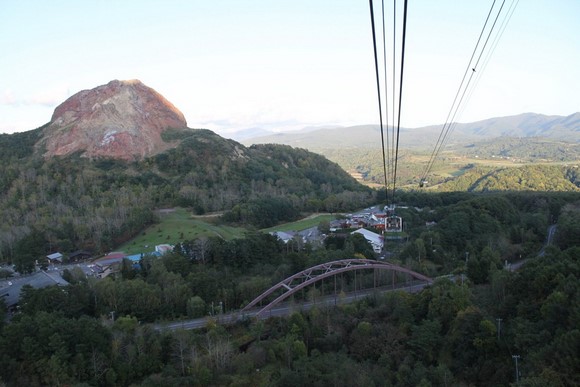

The Lake Toya Observation Deck at the top of Mount Usu. On the left is Lake Toya.


This is Mount Usu.
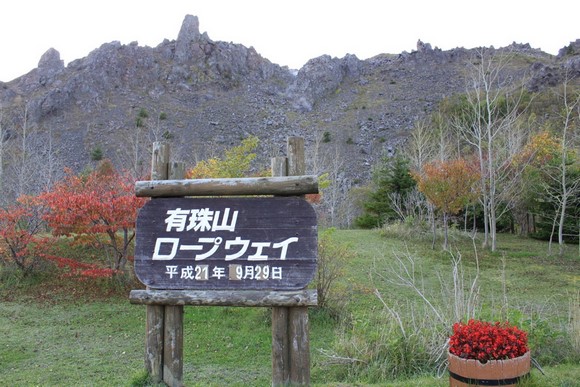

The building on the left is the ropeway’s mountain-top station.
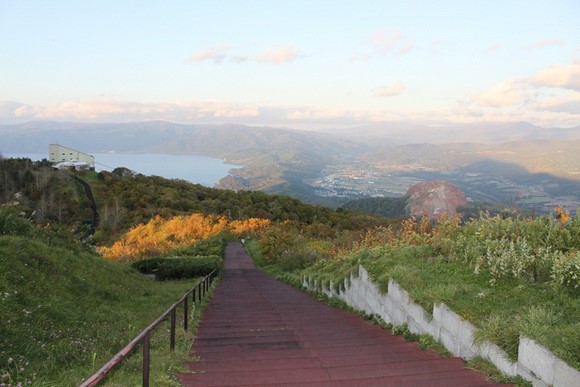

Mount Usu Observation Deck
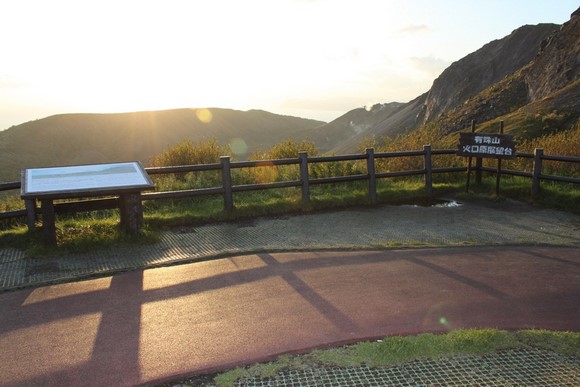

If you have the energy, you can take a walk along the outer trail.
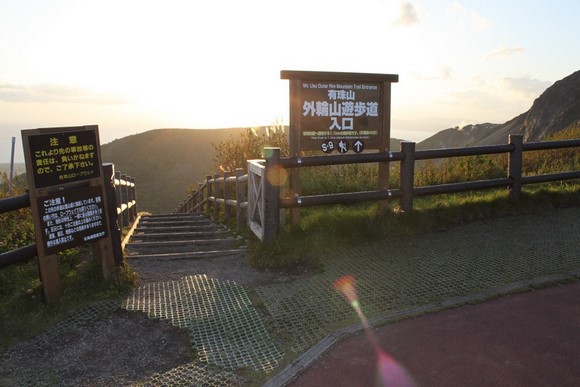

After exploring the Mount Usu crater, we took the last cable car down at 5:15 pm.
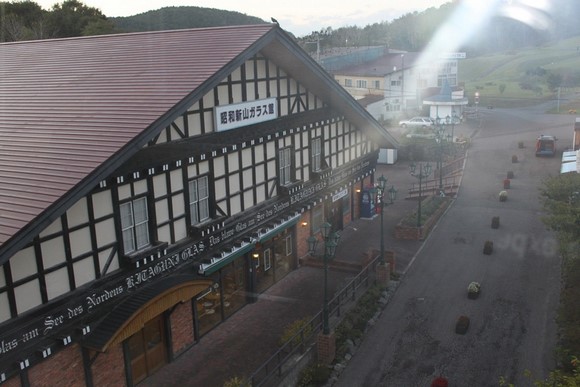

Tonight’s dinner was served in our room, which we had reserved during check-in. After hiking Mount Usu, we were drenched in sweat, so we headed straight to the hot springs at the hotel before dinner.
The hot springs at Toyako Kohan-tei are located on the top floor (9th floor) of the hotel, overlooking Lake Toya. However, there aren’t many baths—just one large bath each for men and women. The baths switch genders every morning, so if you want to experience both, you’ll need to visit once in the evening and again the next morning.
Our room was a Japanese-Western hybrid, meaning it had Western-style beds and a traditional Japanese living area. The Japanese-style space could also be used for sleeping, making the room spacious enough for four people.
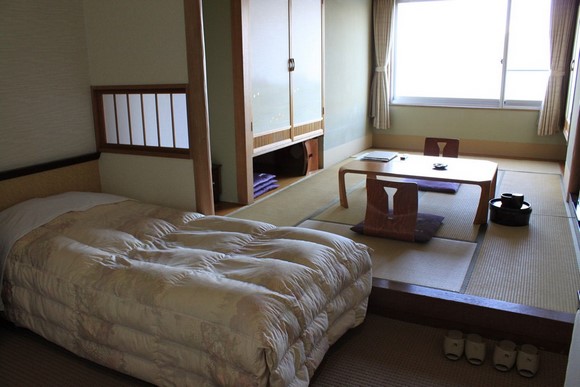

A view of the room from the entrance.
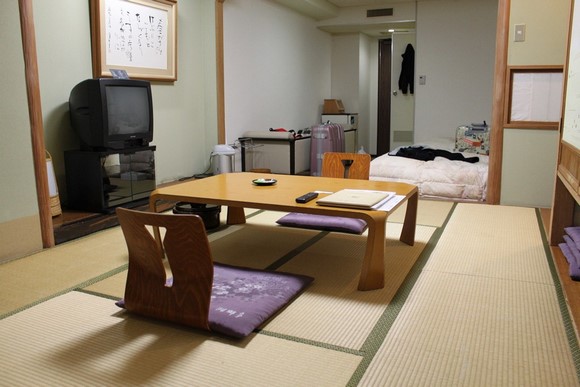

To be honest, Kohan-tei feels a bit dated. The rooms seem like they haven’t been renovated in a long time, especially the bathroom. Although there’s a bathtub, we didn’t feel like using it. Fortunately, the large public baths meant we didn’t need to rely on the in-room bathroom.
After soaking in the hot springs, it was finally time for dinner. At the reserved time, the staff brought all the food to our room at once, set it up, and left us to enjoy it at our own pace. When we finished, we just had to call, and they came to clear everything away. This arrangement was great—we could control how long we spent eating, unlike our experience at Noboribetsu Tamaya, where dishes were served one by one with long waits in between.
What a lavish dinner! There was even melon for dessert, though it was stored in the fridge and didn’t make it into the photo.
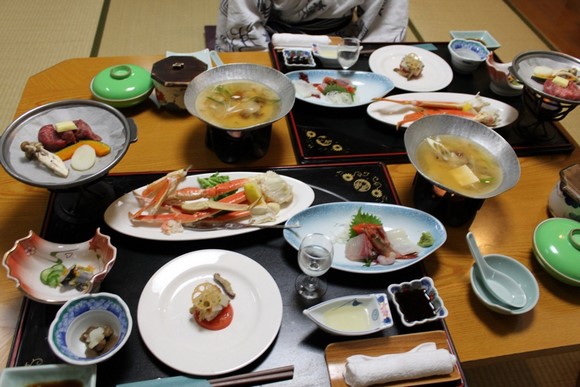

Many Japanese hot spring inns still use these old-fashioned phones. I wonder if anyone has trouble figuring them out.
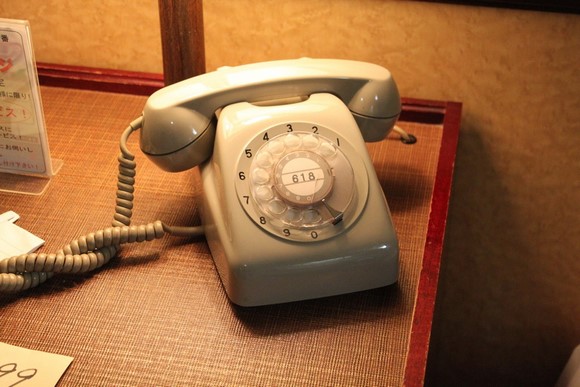

From May to October every year, Lake Toya hosts a six-month-long fireworks festival, with displays every night starting at 8:45 pm. Our lakeside room offered a view of the fireworks, but to fully experience them, we decided to take a sightseeing boat onto the lake. In hindsight, it wasn’t worth it—too expensive, and the view from the boat wasn’t much different from the shore. The only advantage was that the boat followed the fireworks, allowing us to see all the launch points. However, since each display was similar, it wasn’t necessary to see them all. The fireworks themselves weren’t particularly impressive, but it was still a fun addition to the trip.
The hotel room overlooks Lake Toya.
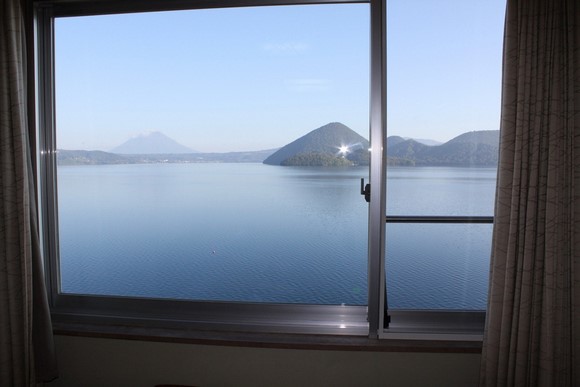

Lake Toya at night.
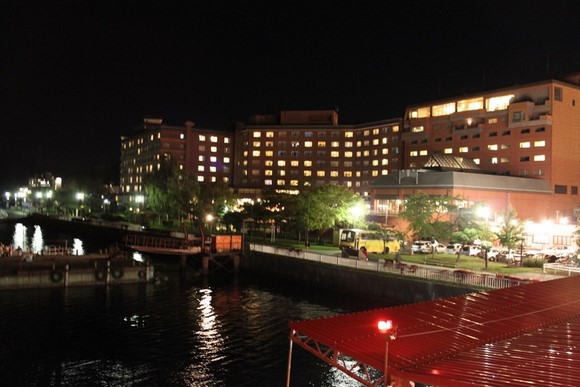

The Lake Toya sightseeing boat pier.


Inside the Lake Toya sightseeing boat.
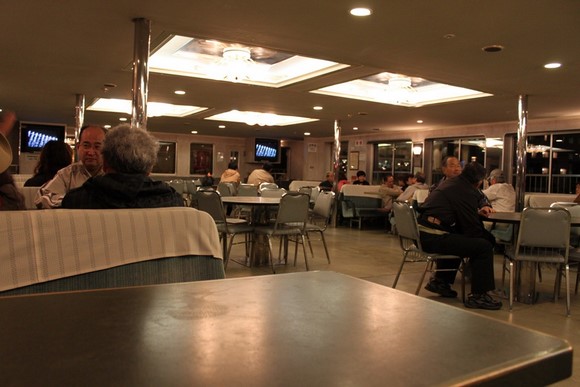

Fireworks over Lake Toya…
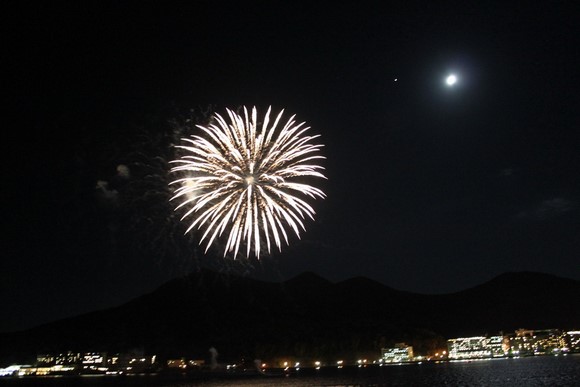

—End of Day 4 Itinerary—
Day 5: Exploring Lake Toya Silo Observatory, Niseko Panorama Line, Shikotsu-ko, Otaru Canal, and Tenguyama
Day 5 of our Hokkaido road trip, September 30, sunny, temperature 12~20°C
Itinerary: Lake Toya _ Niseko _ Otaru
Breakfast at Kohan-tei was a buffet, similar to standard hotel breakfasts. Of course, we started the day with another soak in the hot springs. Since the baths switch genders in the morning, today’s experience was different from last night’s, though the design was largely the same. With daylight, we could clearly see the view of Lake Toya—soaking in the hot springs while enjoying the lake scenery was incredibly relaxing.
The lakeside promenade outside the hotel.
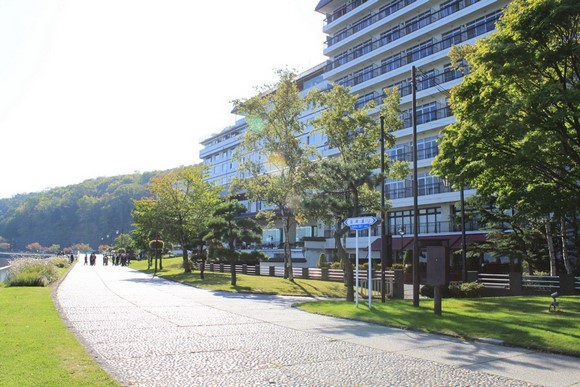

Lake Toya in the morning.
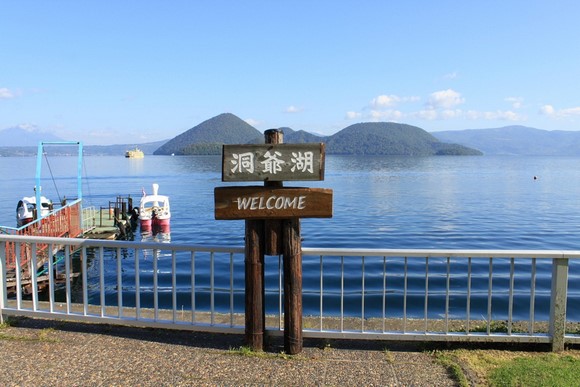

Duck boats on Lake Toya.


Today, we traveled from Lake Toya to Otaru via Niseko, taking National Route 276 for views of Mount Yotei and the famous Niseko Panorama Line.
Today’s driving route covered about 170 km from Lake Toya to Otaru. Excluding stops, the driving time was approximately 3 hours.
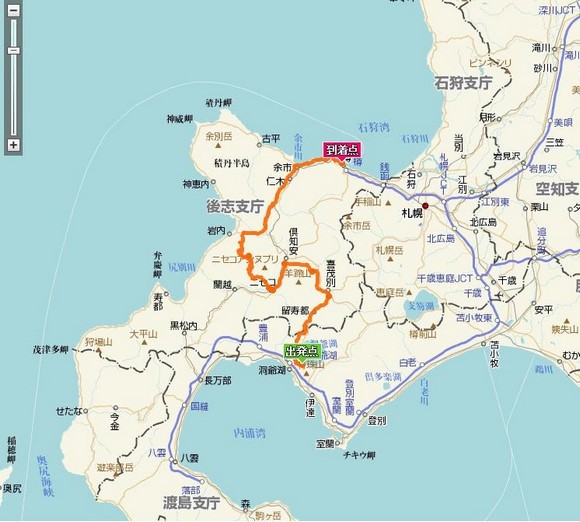

Our first stop after leaving Lake Toya was the Lake Toya Silo Observatory along National Route 230.
The Lake Toya Silo Observatory offers a panoramic view of the entire lake from above.


A section of National Route 276 between Kimobetsu and Mount Yotei offers a direct view of the mountain while driving.
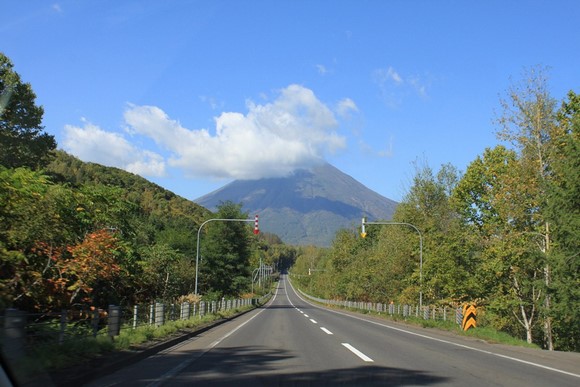

There are many parking spots along the route for photo opportunities.
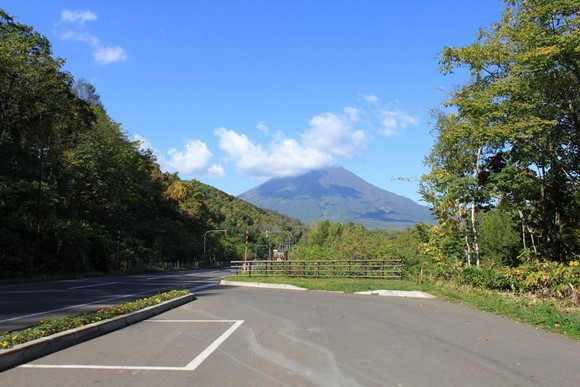

The Mizunokuni Rest Area in Kyogoku Town.
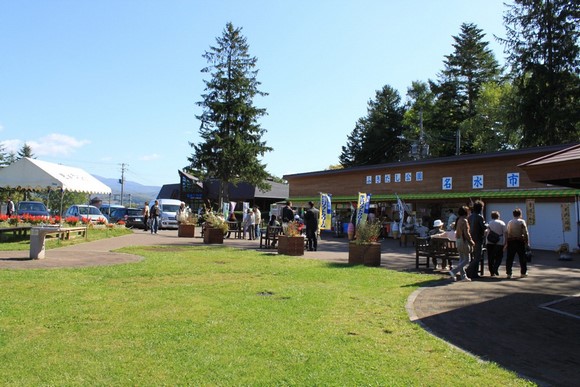

After about 2.5 hours (including stops for photos and breaks), we finally reached Niseko. This is the Niseko Bridge near JR Niseko Station.
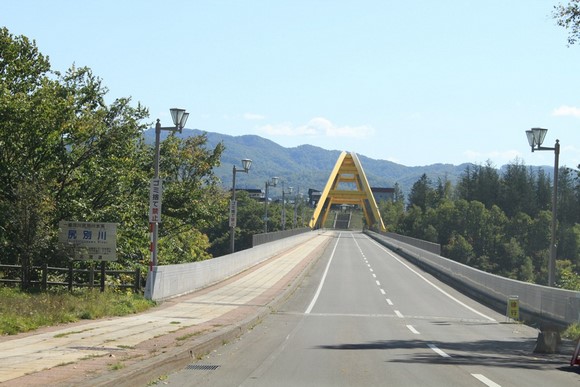

Shortly after crossing the Niseko Bridge, we entered the Niseko Panorama Line (Prefectural Road 66 from Niseko to Iwanai), a scenic route. Unfortunately, the autumn foliage hadn’t arrived yet—it would have been stunning with full colors.
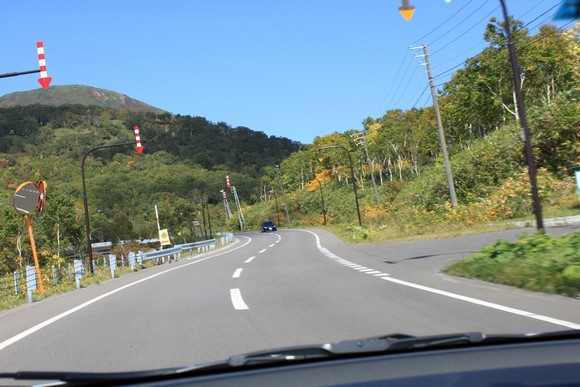

The Niseko Panorama Line is mostly mountainous, with many winding sections along the slopes.
After days of driving, we hadn’t encountered any bears or deer, but here we unexpectedly saw a fox crossing the road.
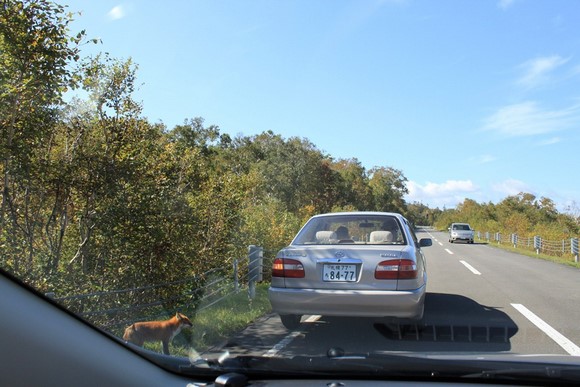

The most famous attraction along the Niseko Panorama Line is Shikotsu-ko (Shikotsu Marsh). We had prepared the map code beforehand, but unfortunately, our rental car’s GPS couldn’t input map codes. The phone number listed was for an office far from the site, so we had to rely on roadside signs. Luckily, we didn’t get lost and eventually found Shikotsu-ko.
The parking lot for Shikotsu-ko is right by the road.
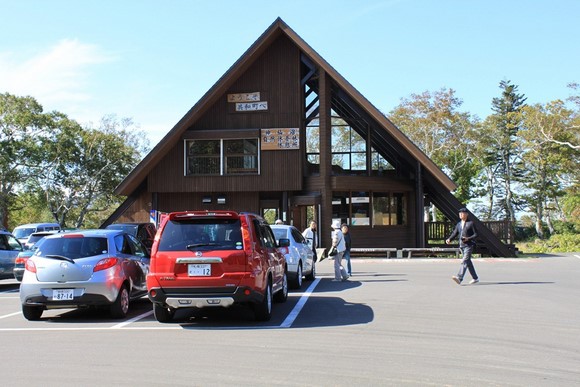

To reach Shikotsu-ko, take the wooden path opposite the parking lot. It’s about a 1 km walk, requiring at least an hour round trip including photos.
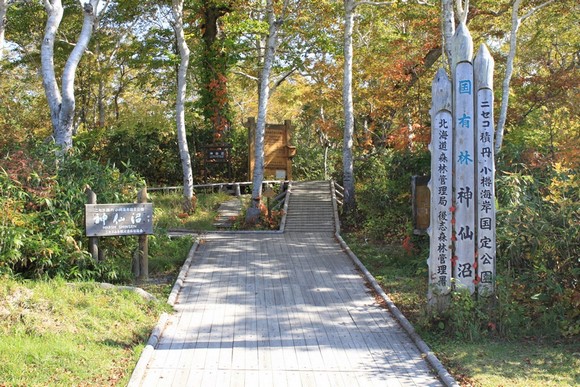

A map of the area around Shikotsu-ko. There’s also a Long Marsh and a Big Marsh nearby, but they’re too far to visit.
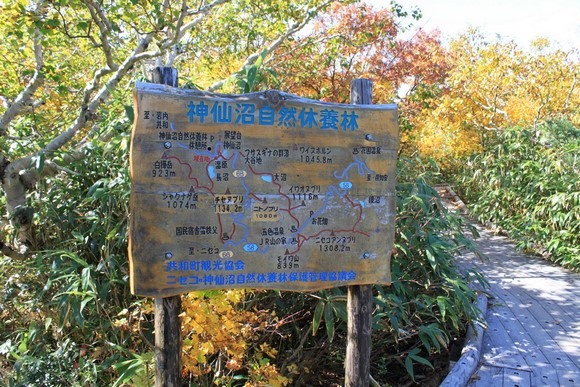

Before reaching Shikotsu-ko, you’ll pass this marshland. Don’t mistake it for Shikotsu-ko—just a little further to go!
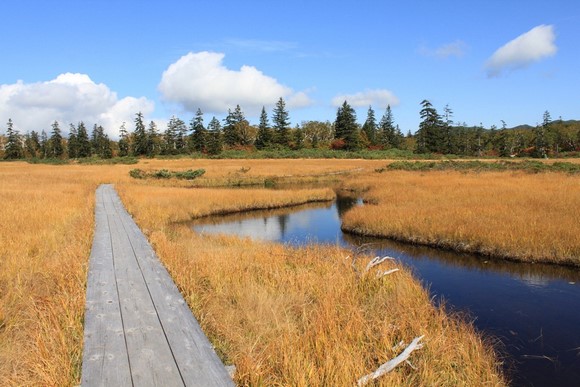

Finally, we arrived at Shikotsu-ko!
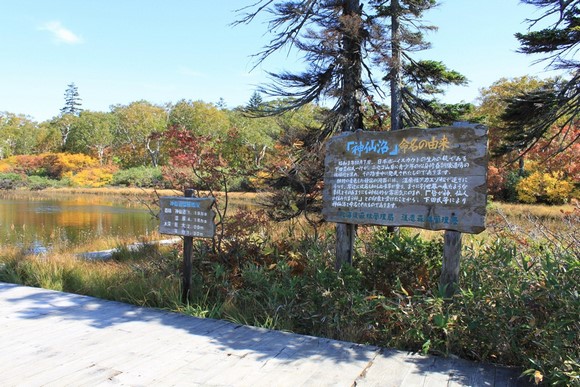

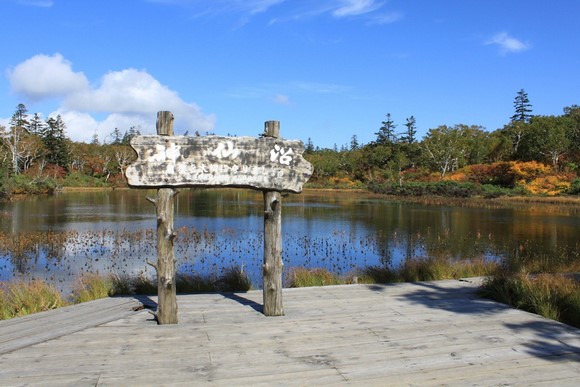

This was the spot with the most autumn foliage on our trip. If we’d come half a month later, the scenery would have been even more beautiful.
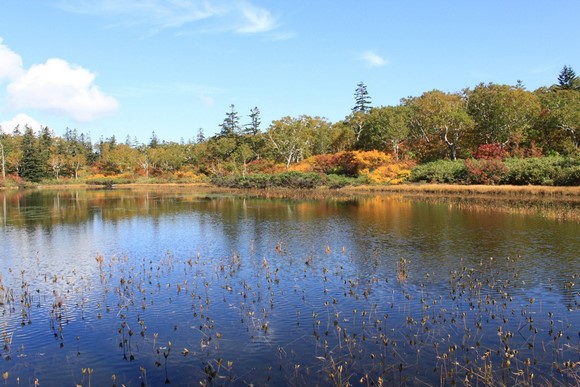

On the way back, we passed the marshland again.
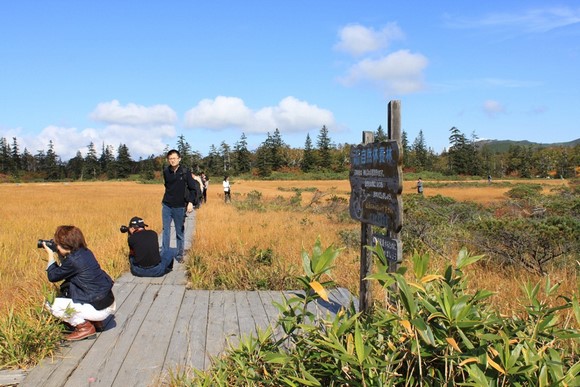

If you’re willing, you can donate 100 yen per person as an entrance fee.
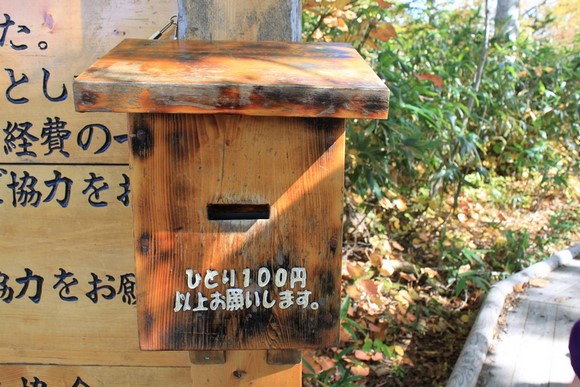

After leaving Shikotsu-ko, we drove another 10 minutes through winding mountain roads before reaching the flatlands of Iwanai Town. The altitude change was so drastic that our ears popped, requiring frequent swallowing to relieve the pressure.
Seeing the sea meant we were approaching Otaru.


We were very satisfied with all our accommodations during this Hokkaido trip, but tonight’s stay in Otaru was the best. The hotel, Dormy Inn Premium Otaru, had just opened before our visit, and we booked it during a grand opening promotion. It’s right across from JR Otaru Station, making it easy to find.
Dormy Inn Premium Otaru is located at the intersection of Central Street, directly opposite JR Otaru Station—very convenient.
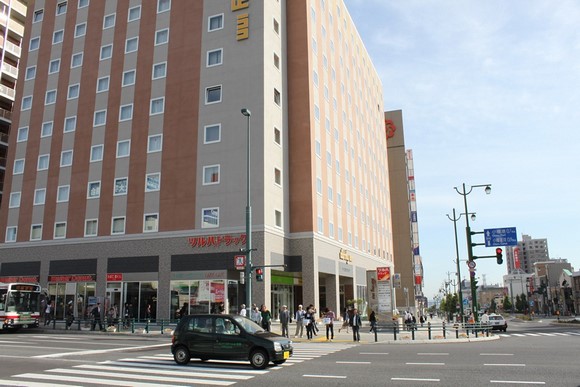

The lobby of Dormy Inn Premium Otaru.
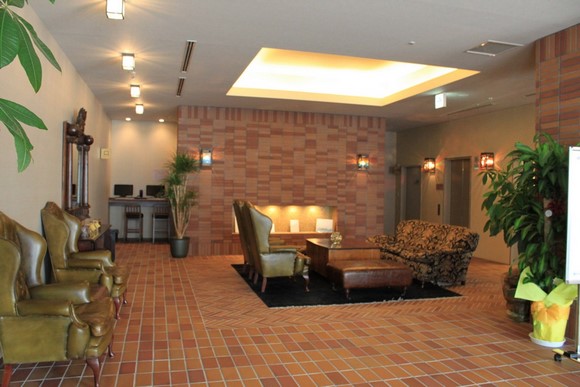

Upon entering the room, the sink is the first thing you see. The toilet and bathroom are on the other side, and the bedroom is behind another door.
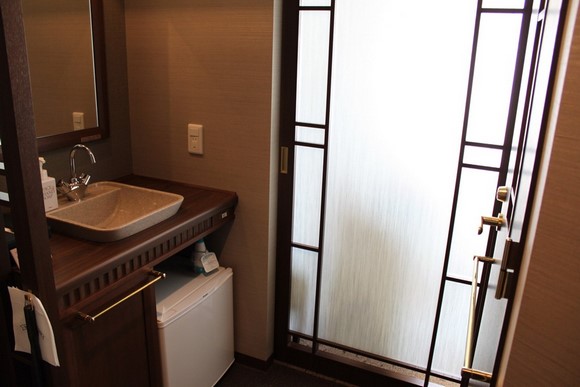

The desk and TV in the bedroom.
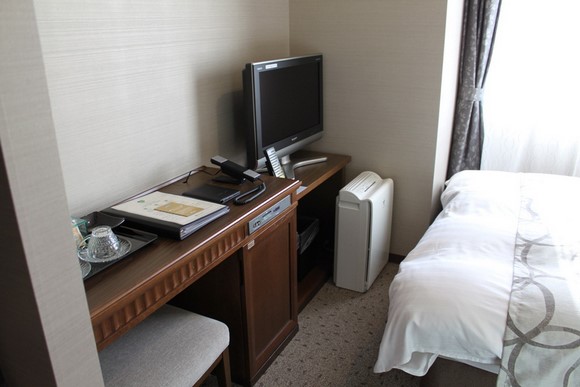

The bed is larger than standard.
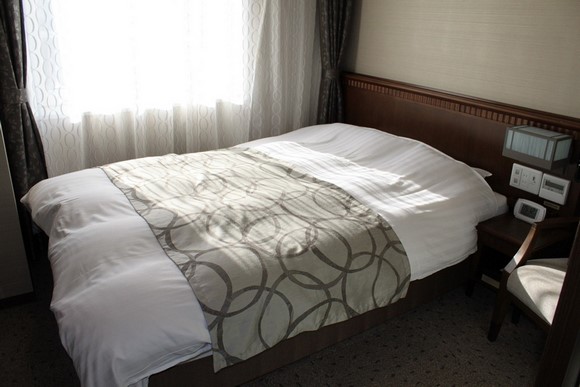

The view from the room overlooks Otaru Station.
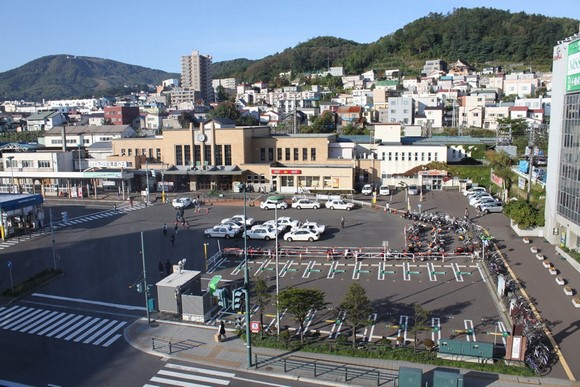



After exploring the Mount Usu crater, we took the last cable car down at 5:15 pm.


Tonight’s dinner was served in our room, which we had reserved during check-in. After hiking Mount Usu, we were drenched in sweat, so we headed straight to the hot springs at the hotel before enjoying our meal.
The hot springs at Lake Toya Kohan-tei are located on the top floor (9th floor) of the hotel, overlooking Lake Toya. However, there aren’t many baths—just one large bath each for men and women. The baths switch genders every morning, so if you want to try both, you’ll need to visit once in the evening and again in the morning.
Our room was a Japanese-Western hybrid, featuring Western-style beds and a traditional Japanese living area, though the tatami space could also be used for sleeping. The room was spacious enough to comfortably accommodate four people.


A view of the room from the doorway.


To be honest, Kohan-tei feels a bit dated. The rooms seem like they haven’t been renovated in a long time, especially the bathroom. Although there’s a bathtub, we didn’t feel like using it. Fortunately, the large public baths meant we didn’t need to rely on the in-room shower.
After soaking in the hot springs, it was finally time for dinner. At the reserved time, the staff brought all the food to our room at once, set it up, and left us to enjoy it at our own pace. When we finished, we just had to call to have everything cleared away. This arrangement was great—we could control how long we spent on the meal, unlike our experience at Noboribetsu Tamaya, where dishes were served one by one with long waits in between.
What a lavish dinner! Even the dessert was Hokkaido melon, though it was chilling in the fridge and didn’t make it into the photo.


Many Japanese hot spring hotels still use these old-fashioned phones. I wonder if anyone struggles to figure them out.


From May to October every year, Lake Toya hosts a six-month-long fireworks festival, with displays every night starting at 8:45 pm. Our lakeside room offered a perfect view, but to fully immerse ourselves in the experience, we decided to watch from a sightseeing boat on the lake. In hindsight, it wasn’t worth it—the boat ride was expensive, and the view wasn’t significantly better than from the shore. The only advantage was that the boat followed the fireworks, allowing us to see all the launch points. But since each display was similar, it wasn’t necessary to catch every one. Most importantly, the fireworks themselves weren’t particularly impressive. Still, it was a fun addition to the trip.
The hotel room faces Lake Toya.


Lake Toya at night.


Lake Toya sightseeing boat pier.


Inside the Lake Toya sightseeing boat.


Lake Toya fireworks…
One of the selling points of Dormy Inn PREMIUM is its large bathhouse on the second floor. Though it doesn’t use natural hot spring water, the decor is beautiful and unique, and the bath is incredibly relaxing.
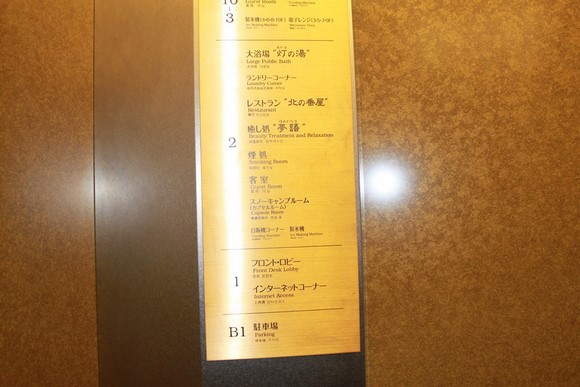

Dormy Inn PREMIUM’s parking lot uses a mechanical parking system. After driving in, you turn off the engine, lock the car, and step out. The machine then moves your car to an available space. Overnight parking costs 1,000 yen.
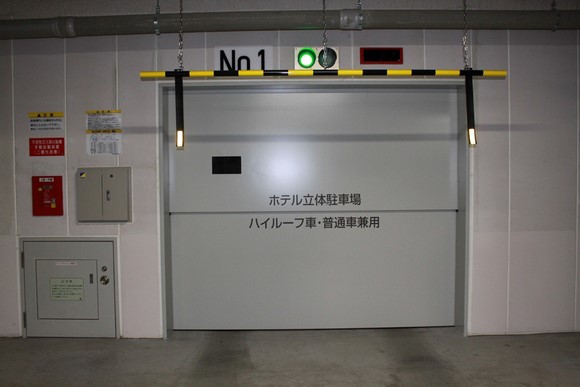

After parking, the staff writes your license plate and name on a card, which you hand to the hotel reception. When you’re ready to leave, you retrieve the card from reception, and someone will bring your car out.
By the time we finished checking in, it was almost 3:30 pm, so we headed out immediately to make the most of the day. The Otaru Canal is just a two-minute drive from the hotel.
Next to the Asakusa Bridge along the Otaru Canal is the Otaru Canal Dining Hall, with a small free parking lot beside it. If you’re driving, this is a great spot to use—though it’s quite small and might be full during peak season. It’s also possible it no longer exists.
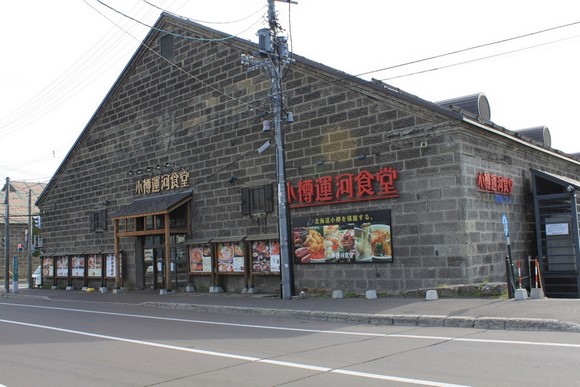

Asakusa Bridge at the Otaru Canal.


The Otaru Canal.
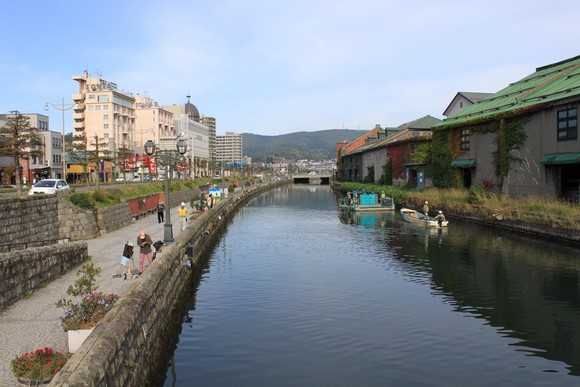

Honestly, the Otaru Canal isn’t much to look at—it’s hardly what you’d call beautiful. While the side facing the street is somewhat presentable, the wharf side resembles a dreary industrial zone, lifeless and gray. Still, the canal is Otaru’s iconic landmark, and on my four or five subsequent visits to Otaru, I’ve made a point of stopping by for photos.
After visiting the canal, our next stop was Sakaimachi Street for shopping. Sakaimachi is a pedestrian street lined with souvenir shops, many specializing in glassware, along with plenty of eateries and pastry stores. Though the street isn’t long, strolling here is a delight. Vehicles are allowed one-way, but with so many pedestrians, traffic moves slowly. If you’re driving, there are several paid parking lots nearby. The walk from the Otaru Canal to Sakaimachi Street is short, with most shops clustered between the Otaru Romantic Museum and the Fairy Tale Crossroads. Most stores close around 6 pm, so arrive early if you want more time to browse.
This is Sakaimachi Street.
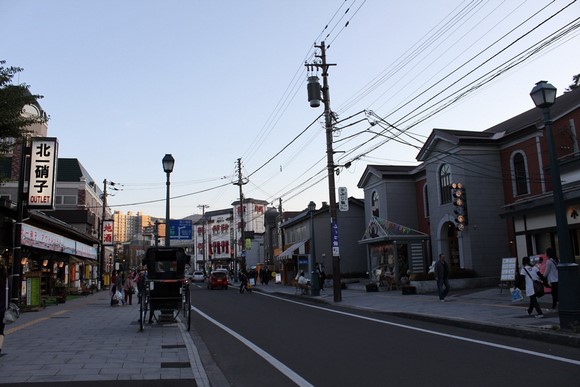

The only street-side grilled seafood stall on Sakaimachi Street.
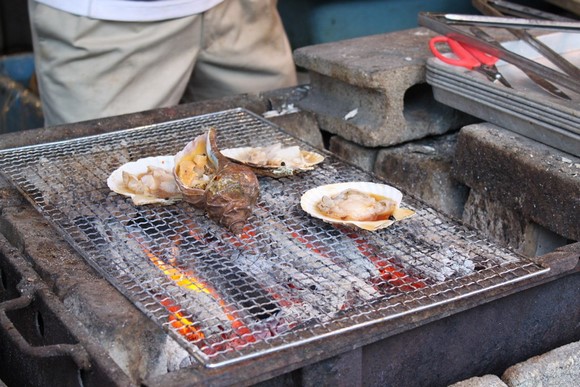

Kitakaro is a famous pastry shop in Otaru.
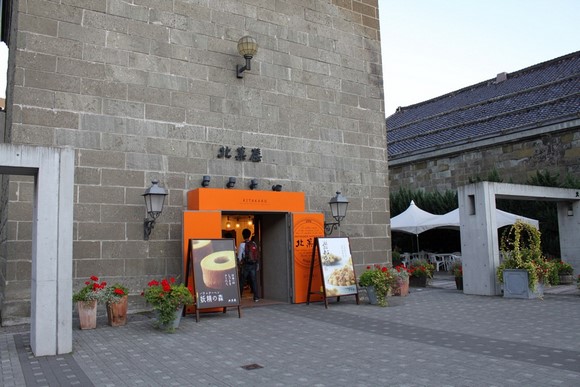

This is Kitakaro’s most famous Baumkuchen—Forest of the Fairies.
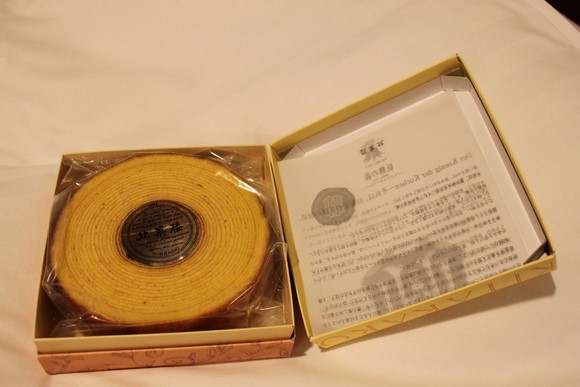

This is LeTAO, another famous pastry shop in Otaru.
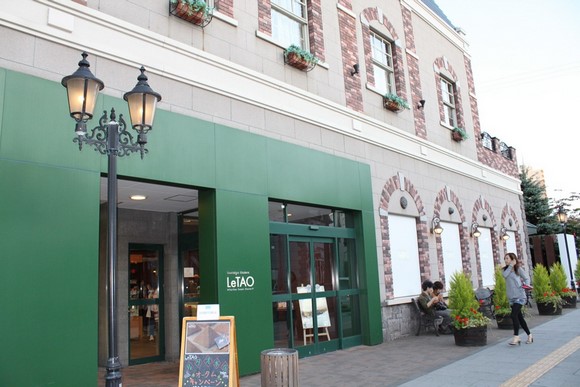

LeTAO is best known for this cheesecake.
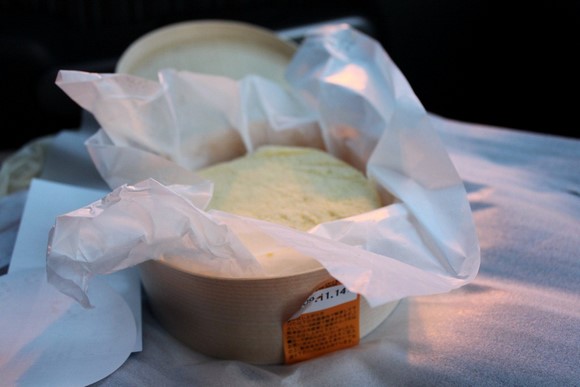

This is the Fairy Tale Crossroads, marking the end of Sakaimachi Street. Beyond this point, the area transitions into residential neighborhoods.
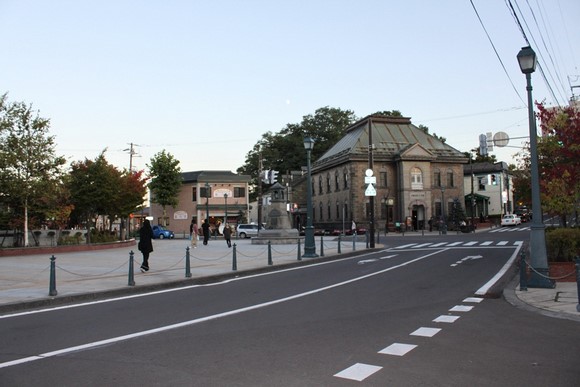

Since the cheesecake we bought at LeTAO needed refrigeration, we returned to the hotel after exploring Sakaimachi Street to store it before heading out for dinner. Otaru is famous for its sushi, so tonight we chose the most renowned spot: Masazushi.
We originally planned to visit the main branch on Sushi Street, but it was closed when we drove by, so we went to the branch opposite the Otaru Canal instead. The photo below shows Denuki Koji on the left and Masazushi on the right. This restaurant became a must-visit on every subsequent trip to Otaru.
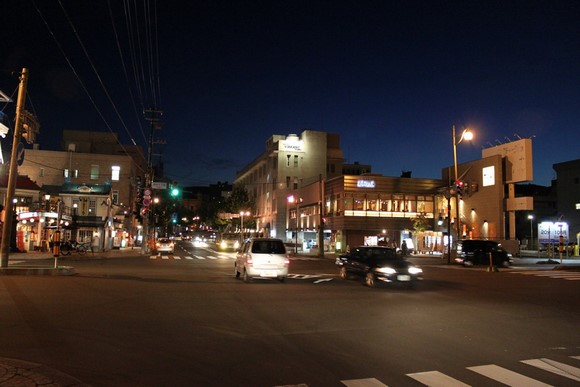

The food alley opposite the Otaru Canal—Denuki Koji.
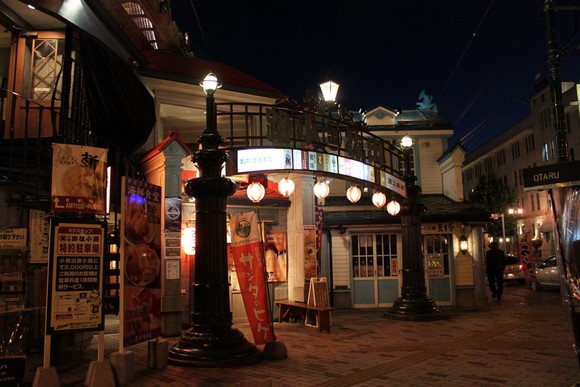

Masazushi—the entrance is at the top of the stairs.
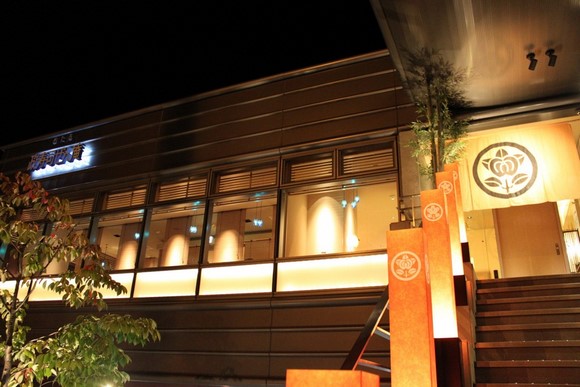

First, we tried the whelk sashimi—crisp and incredibly sweet…
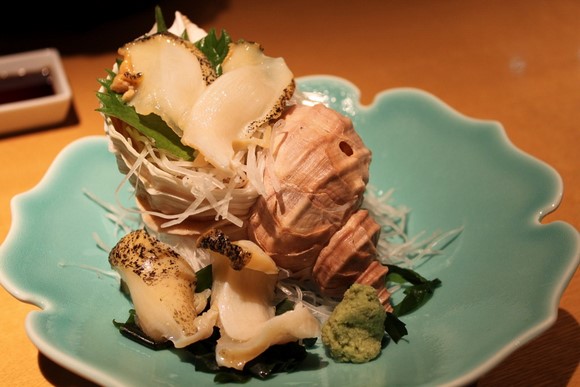

Next came a set of sushi—premium ingredients that made the higher price absolutely worth it.
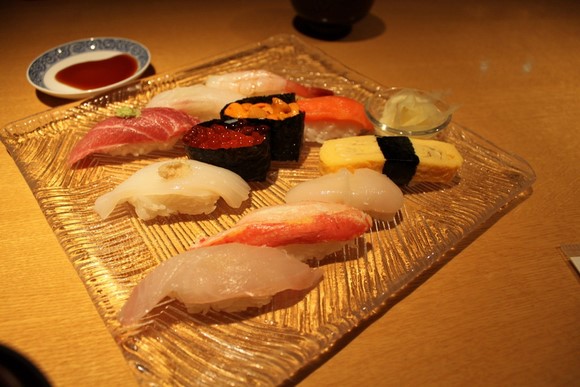

After dinner, we walked back to the Otaru Canal to retrieve our car, which we’d parked in a free spot by the canal.
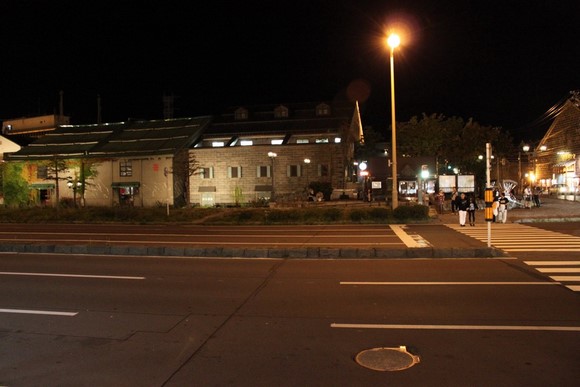

We took the opportunity to admire the Otaru Canal at night.
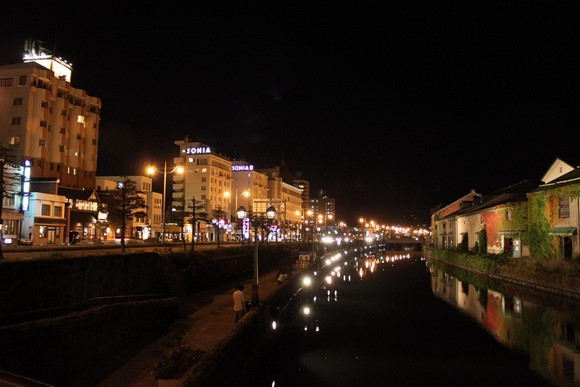

In late September and early October, Hokkaido’s weather isn’t cold yet—evenings hover around 18°C, while daytime temperatures typically reach 20°C. It can get quite hot when the sun is out.
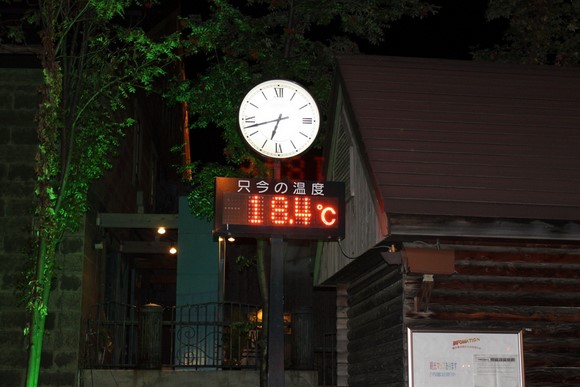

With little to do in Otaru at night, we decided to head up Mount Tengu to see the city’s night view. Rumor has it that Otaru’s nightscape ranks third in Hokkaido, after Hakodate and Sapporo. We missed the top-ranked view in Hakodate due to bad weather, so seeing the third-best was better than nothing.
The drive from the Otaru Canal to the Mount Tengu ropeway station took less than 15 minutes. Compared to Hakodate’s ropeway, the Mount Tengu ropeway is much smaller, and the observatory at the summit has few facilities. The night view was underwhelming at best.
This is the night view of Otaru from Mount Tengu.
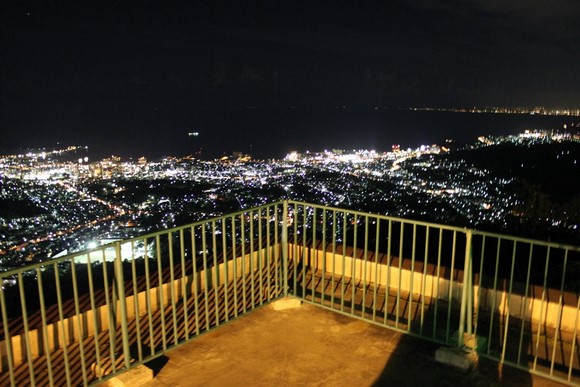

At the summit of Mount Tengu is an exhibition hall called Tengu no Yakata.


—End of Day 5 Itinerary—
Day 6: Exploring Otaru Sankaku Market, Furano Hokuseiyama-cho Lavender Garden, Farm Tomita, and Hinode Park
Day 6 of Hokkaido Summer Road Trip, October 1, sunny, temperature 12~20°C
Itinerary: Otaru _ Furano _ Biei
This time, we didn’t book breakfast at our Otaru hotel because the Sankaku Market, a must-visit seafood market, was right across the street. We decided to have sashimi rice for breakfast there.
Sankaku Market has two entrances—this one is next to Otaru Station, and the other is on the roadside.
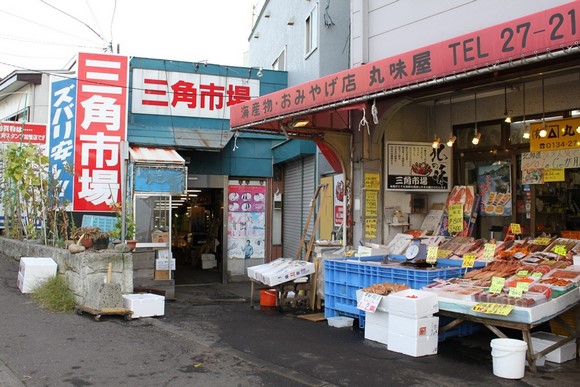

Sankaku Market is tiny—just one aisle, and you can see everything at a glance.
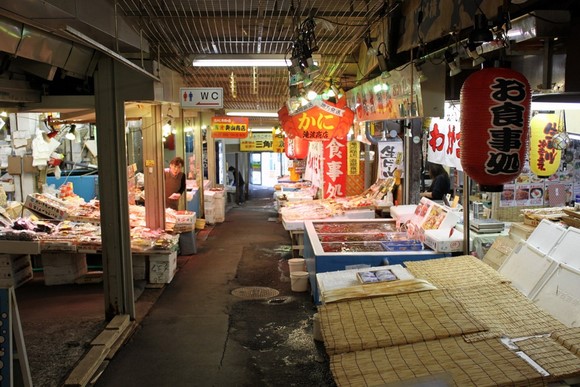

“Takeda Fresh Fish Shop Direct Dining” is the only restaurant in Sankaku Market, so all visitors here for sashimi rice end up eating here.
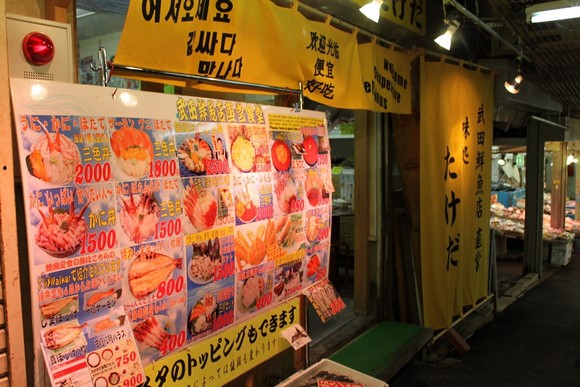

The walls are covered with photos of diners. If you’re interested, you can ask the staff to take your picture and add it to the collection.
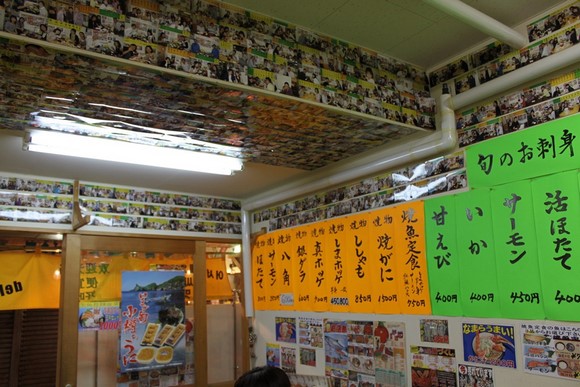

We started with a bowl of crab soup, but it lacked any real crab flavor.
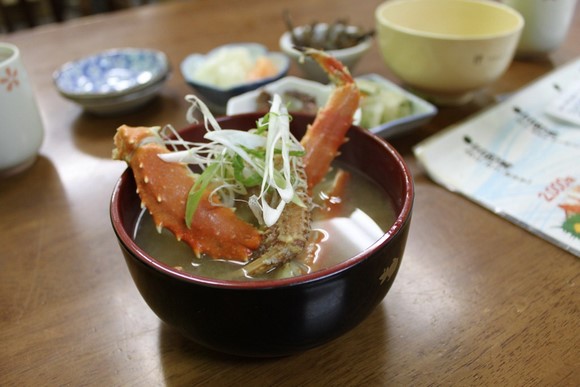

This bowl of sashimi rice was excellent—the crab meat was sweet, the scallops were fresh, and it left us completely satisfied.
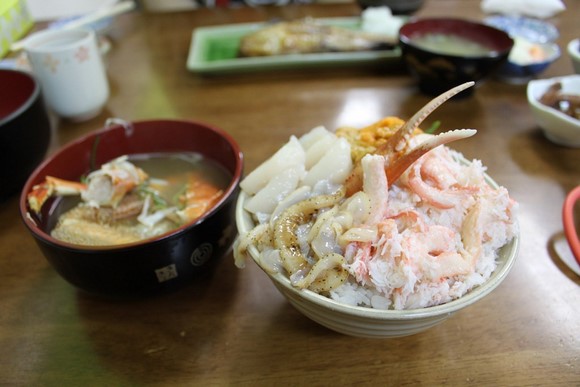

After finishing our sashimi rice breakfast, it was time to leave Otaru. Today, we were heading to Furano. To save time and avoid the busy streets around Sapporo, we decided to take the expressway from Otaru to Mikasa.
Today’s driving route covered approximately 180 kilometers, with a total driving time of about 3 hours (including breaks).
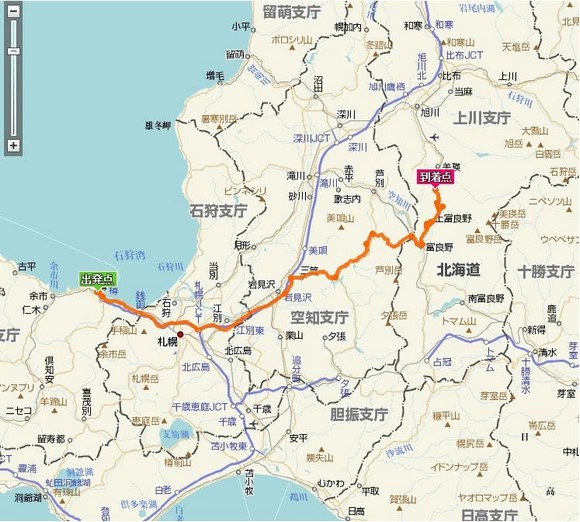

Hokkaido’s expressways are a joy to drive on. The Central Hokkaido Expressway has two lanes in each direction, with a complete separation between opposing traffic, making the drive completely stress-free. Compared to mountainous expressways, it’s a world of difference. The roads are so smooth that it’s easy to unconsciously speed. From Otaru to Sapporo, we averaged around 120 km/h and arrived in no time.
Just as we were cruising at 120 km/h, suddenly, this appeared in the lane next to us… a traffic police officer.
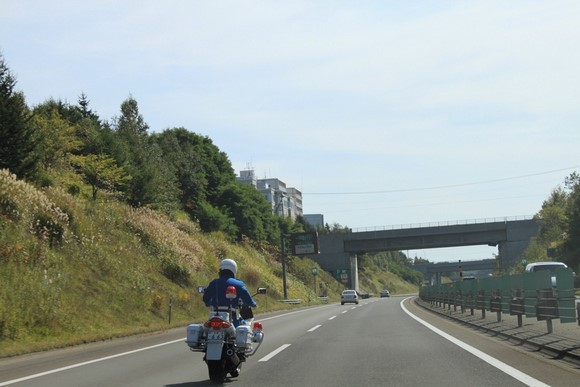

It was my first time encountering traffic police on a Japanese expressway. He signaled for me to move to the left lane—was he going to ticket me for speeding? If he did, there was nothing I could do. I followed his instructions, switched to the left lane, and drove behind him… for quite a distance, with no further action from him.
Perhaps because of the police presence, other drivers also avoided speeding, and everyone maintained a speed of 80–90 km/h. After driving for a while, I realized he probably didn’t stop me for speeding but because I was staying in the right lane for too long. In Japan, the right lane is for overtaking, not for continuous driving. Sure enough, after some time, the police officer exited at the next interchange, and everyone immediately resumed their usual “speeding” pace (110 km/h+).
On the expressway…
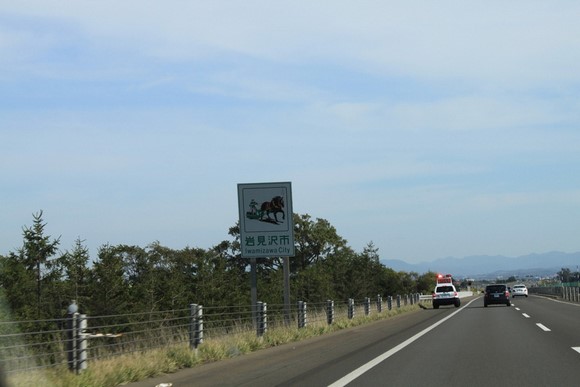

Before exiting the expressway, we took a break at the Iwamizawa rest area. This was the only rest stop on the way from Sapporo to Furano, and we’ve stopped here several times in subsequent years.
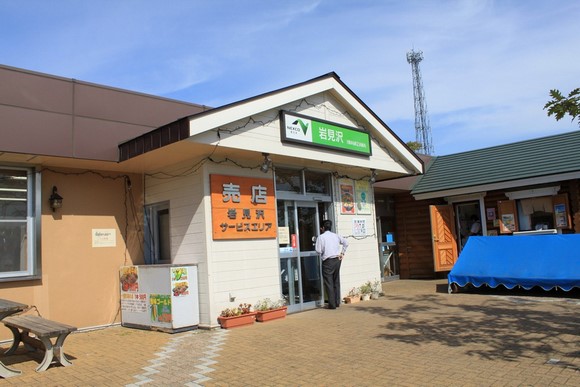

After nearly an hour on the expressway, we exited at Mikasa and switched to national roads. Little did we know, trouble would soon find us on the national road—speeding. Who would have thought that after avoiding a speeding ticket on the expressway, we’d get caught on a national road?
Many of Hokkaido’s national roads are straight and wide, especially in rural areas, but the speed limit is set at 50 km/h, which feels unreasonable. It’s hard to resist the urge to speed on such well-maintained roads.
Shortly after leaving the expressway, a man holding a red flag appeared ahead. The flag read “Police,” and he signaled for us to pull over into a roadside clearing. An officer spoke to us in Japanese, likely asking for our documents. I told him I didn’t understand Japanese, and fortunately, his English was decent. He politely asked where we were from, checked my passport, and inquired about our destination. After a brief conversation with a senior officer, he explained that the speed limit on this road was 50 km/h (we were doing 90 km/h) and advised us to slow down. The most relieving words followed: “Just caution, no penalty.” Hearing that was a huge relief. I had expected a fine of 30,000–50,000 yen and a trip to the police station to settle the penalty, which would have been costly and disruptive to our plans. Grateful for the leniency, we drove off at a snail’s pace (50 km/h, of course). Ha…
Despite the warning, once we left the town and entered rural areas, it was hard to resist speeding again, especially since other cars were also driving at 80 km/h or more. We decided to follow the car ahead—matching its speed—so if anyone got pulled over, it would be them first. We also assumed speed traps were more common in towns than in rural areas.
From Mikasa IC to Furano, we passed through Mikasa City and Rubeshibe City, mostly on mountain roads with beautiful scenery, especially around Lake Katsuragawa in Mikasa.
Sandan Falls, located along National Route 452, was a scenic spot on the way from Mikasa to Furano.
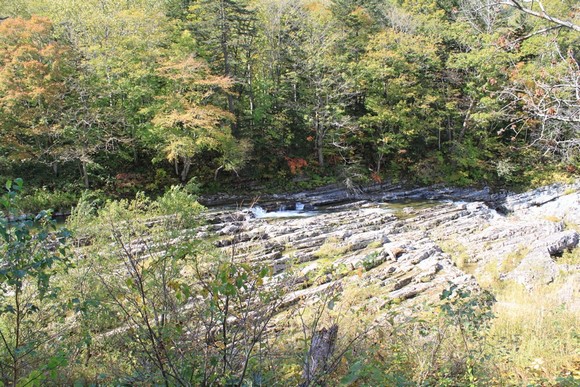

Like many waterfalls in Japan, Sandan Falls is relatively small.
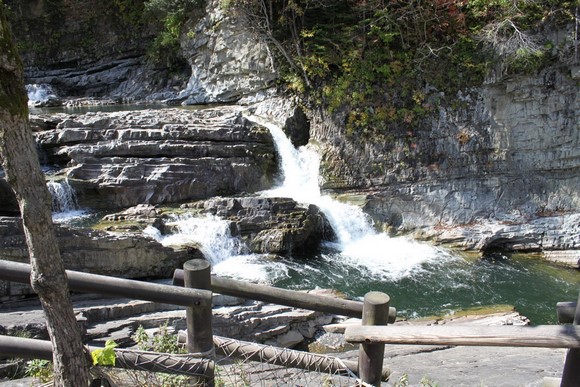

By 12:30 PM, we finally arrived in Furano. This is the iconic mascot outside Furano Station.
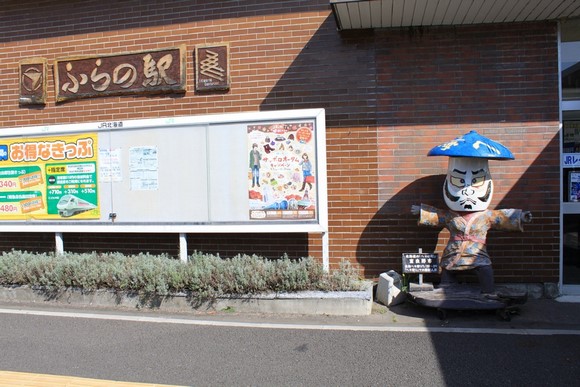

After taking photos at Furano Station, we headed to a nearby restaurant called Ikedaya for lunch.
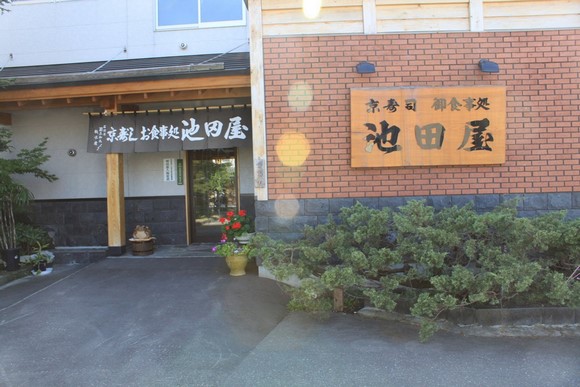

Ikedaya’s menu had limited options, so we ordered this sushi set for a little over 1,000 yen.
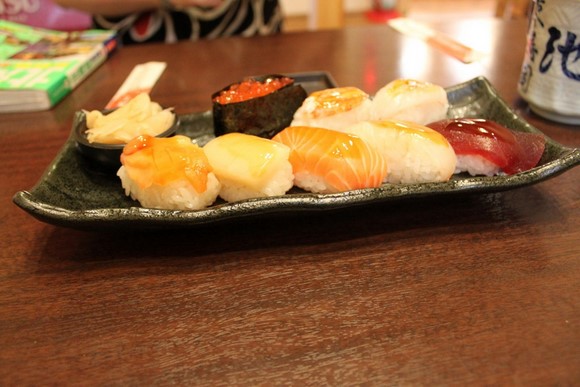

After filling up on sushi, we began our exploration of Furano. The town itself doesn’t have many must-see attractions, so our first stop was Saika no Sato in Nakafurano. When we arrived, we initially thought we were in the wrong place—there wasn’t a single person in sight, not even staff. (Note: Saika no Sato appears to be closed now.)
This is Saika no Sato. Apart from a few rows at the top, all the lavender and other flowers had been cleared away.
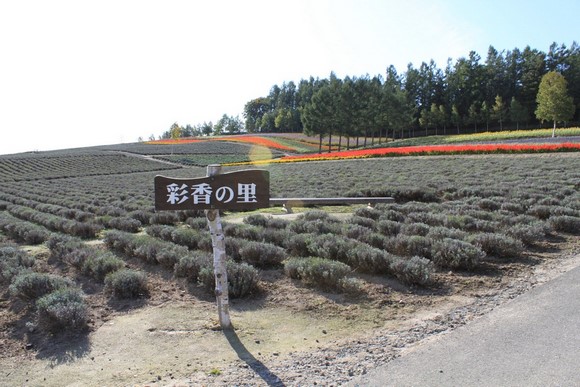

But even just photographing the remaining rows of flower fields felt satisfying.
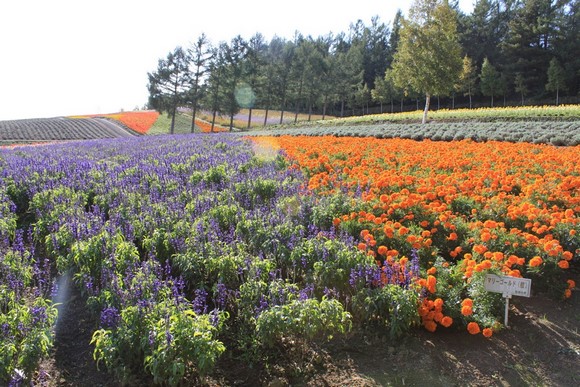

Another angle, with a patch of sunflowers.
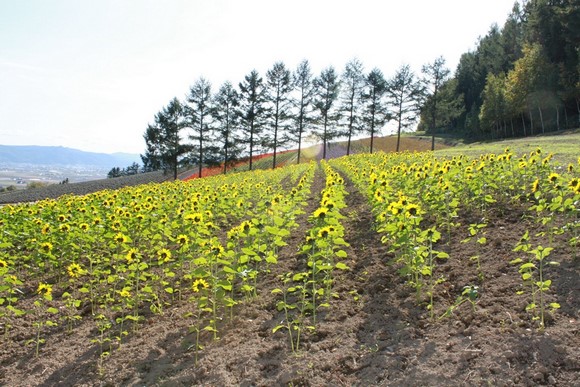

After having Saika no Sato all to ourselves, we headed to the next attraction—Hokuseiyama Choei Lavender Farm. This time, it was slightly livelier, with four other tourists besides us.
The entire hillside here used to be a flower field, but by the time we visited, the blooming season had ended, leaving only a few rows of flowers.
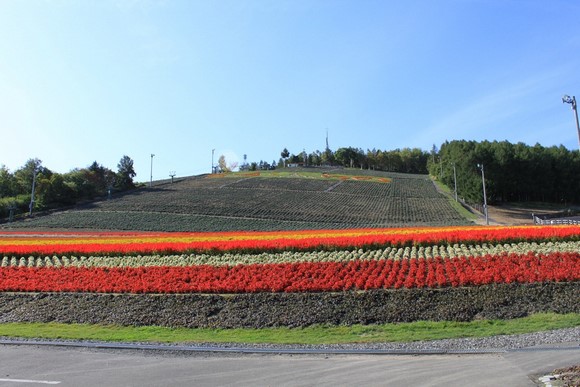

Although most of the flowers had been cleared, the view from this angle still looked impressive—almost as if the entire hillside was still in bloom.
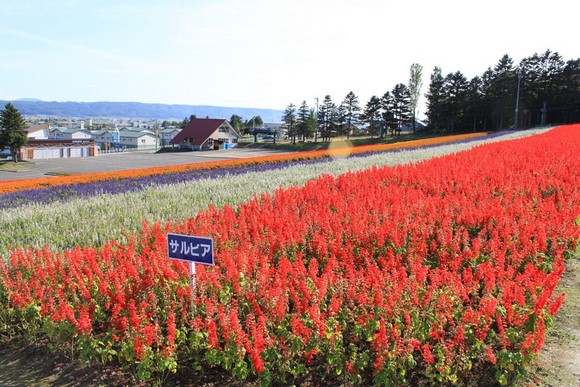

The mountain peak in the distance is likely Tokachidake.
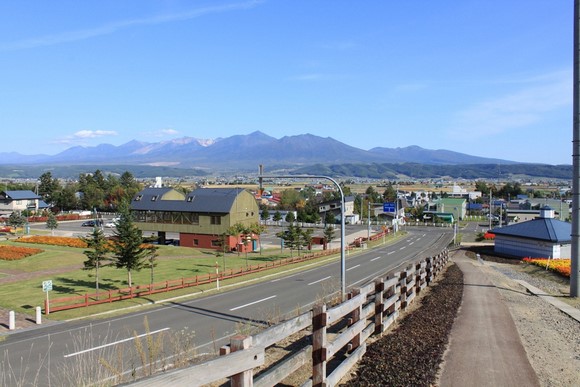

After the summer flower season, most attractions in Furano were nearly deserted, except for Farm Tomita, which still drew crowds, likely due to its ties with tour groups. Farm Tomita is Furano’s main attraction, and we’ve visited it on three subsequent trips to Furano.
Farm Tomita
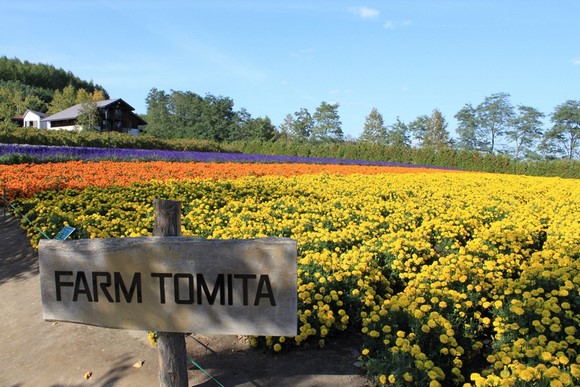

Since the flower season had passed, only this one flower field remained at Farm Tomita.


Another angle of the flower field.
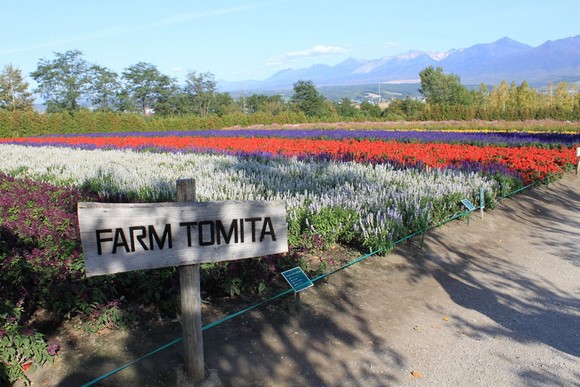

Lavender ice cream.
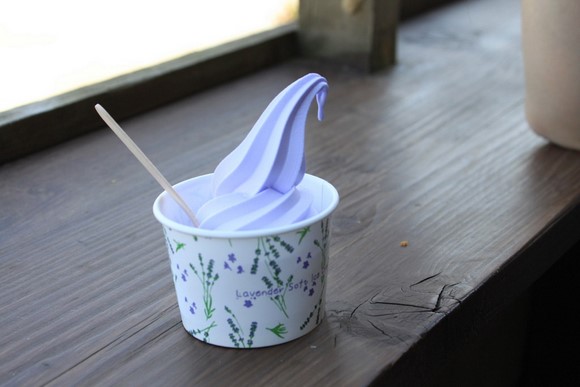

Another highlight of Farm Tomita is the lavender in the greenhouse, though the space is quite small.
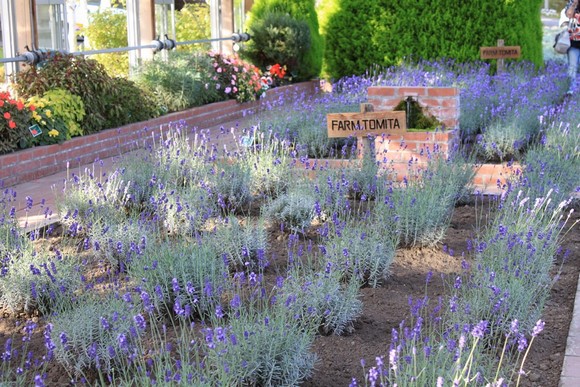

The farm also had other flowers, with the greenhouse visible in the foreground.
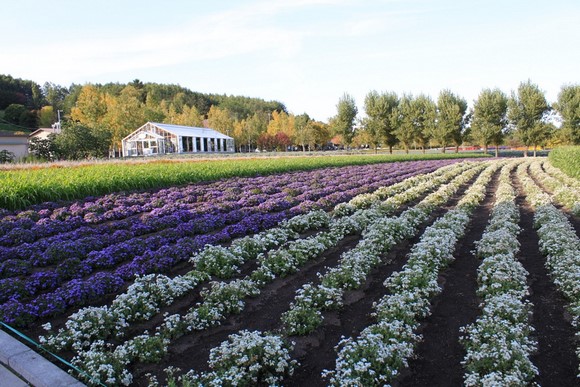

Next to Farm Tomita is a specialty melon shop where visitors can dine in. Every tourist visiting Farm Tomita makes a stop here for melon.
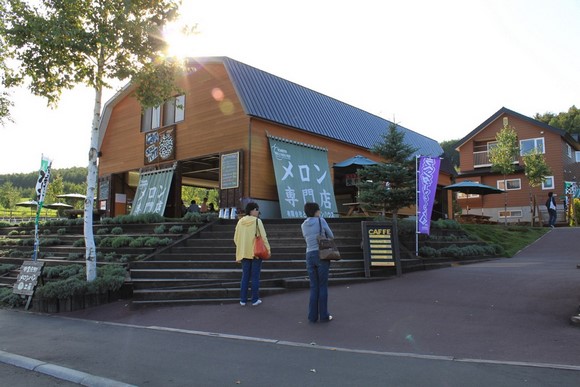

Along National Route 375 between Nakafurano and Kamifurano, we spotted this melon ice cream shop. We’d seen it mentioned in travel guides, so we stopped to try it, but the flavor was just average.
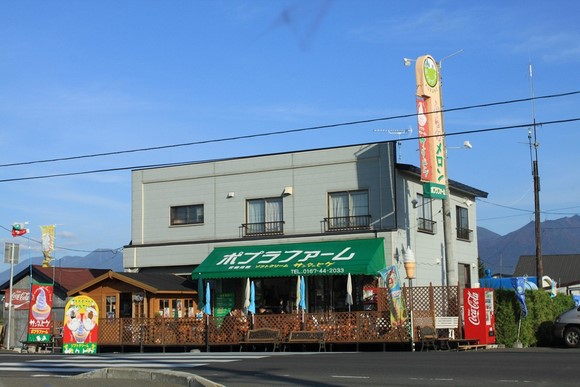

After the melon ice cream, we set off for Kamifurano, with our destination being Hinode Park.
The panoramic view from the observation deck at Hinode Park. It would have been stunning if the flowers hadn’t been cleared.
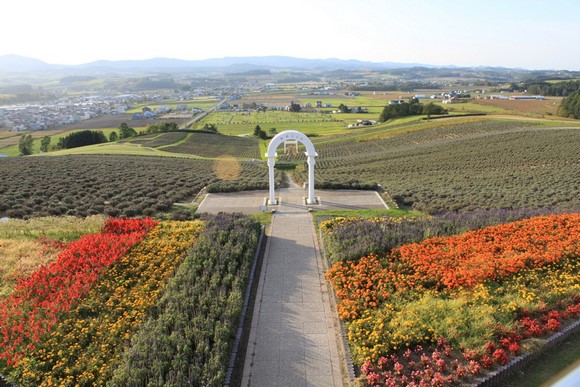

The clock at Hinode Park.
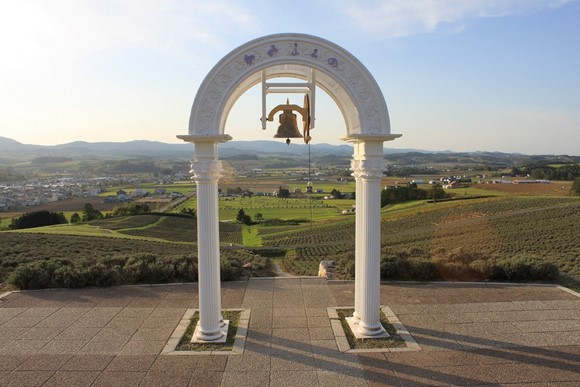

Our next stop was Flower Land in Kamifurano. The flower fields here were still intact, unlike other places where they’d been cleared, so there were more visitors.
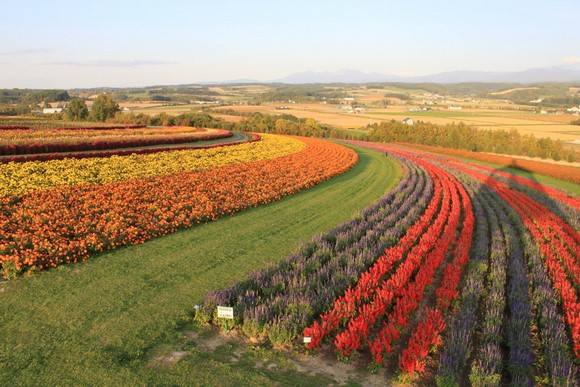

The observation deck at Flower Land.
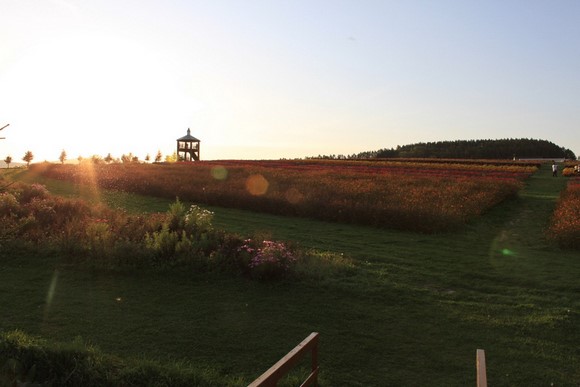

The sightseeing tractor at Flower Land.
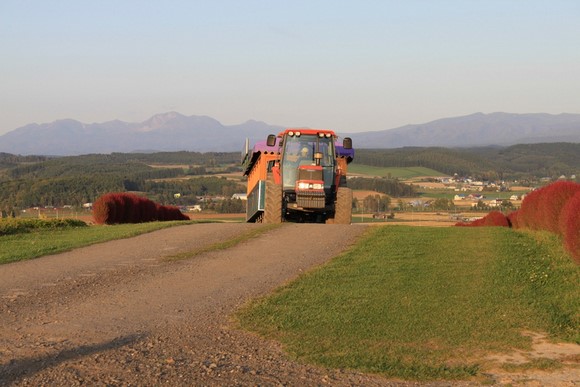

After visiting Flower Land, it was only 4:30 PM, but the sun was already setting. It was time to head to our accommodation for the night—Woody Life.
The roadside sign for Woody Life.
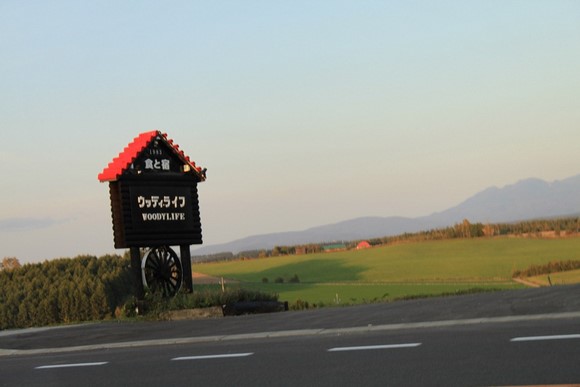

Many visitors to Furano or Biei choose to stay in guesthouses, and this time, we opted for one in Biei to experience it firsthand. Staying at a guesthouse isn’t cheap—it can cost as much as a hot spring ryokan—likely because the small scale makes it hard to turn a profit without higher prices.
We stayed at a guesthouse called Woody Life, highly recommended online. The main reason we chose it was because it had private bathrooms.
Although many online reviews mentioned Woody Life, none clearly described its location or surroundings. We initially imagined it would be tucked away in a quiet rural area, but reality was quite different.
Woody Life is right next to National Route 237. If you’re driving from Kamifurano toward Biei, it’s on the right side of the road, just past the Miyama Pass rest area. The location is easy to find, but being so close to the highway made it feel less secure, and the noise from passing cars at night was a significant downside.
Since it was the off-season, we were the only guests that night, along with a few Japanese people who might have been friends of the owner. We booked a small cabin, referred to as a “1-story building” on their website. With no other guests, we could choose our cabin.
The exterior of the cabin. There were two identical cabins—one with a double bed and the other with two single beds.
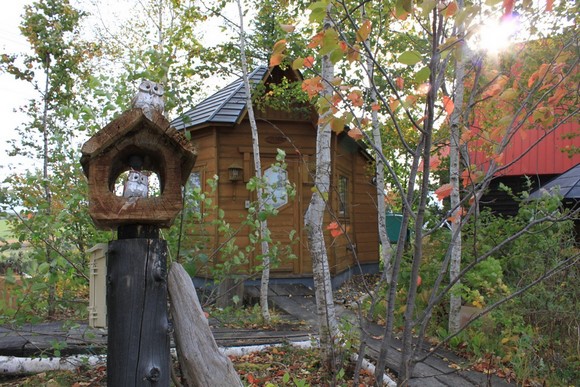

The interior of the cabin was very compact.
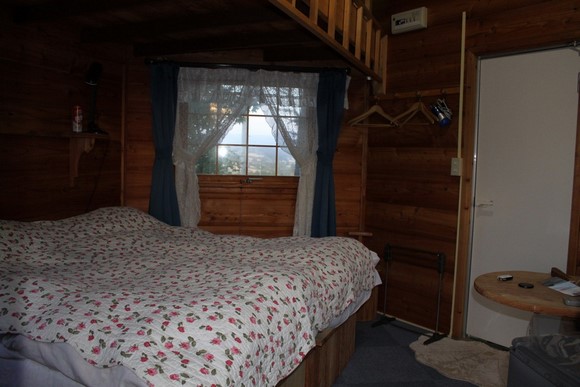

Online reviews mentioned that Woody Life didn’t provide toiletries like shower gel, shampoo, toothpaste, or toothbrushes, but we found this only half true. The bathroom did have shower gel and shampoo, but toothpaste, toothbrushes, and towels needed to be brought along.
The accommodation fee at Woody Life was 6,000 yen per person. We booked via email (woodylif@d9.dion.ne.jp) (Note: Now, you can book through Rakuten Travel Japan). When booking, we requested dinner and breakfast the next morning, which cost extra—1,000 yen for breakfast and 1,500 yen for dinner. We initially opted for dinner because we were worried about finding food at night, but after trying it, we realized Woody Life’s black curry rice is a must-try—it was incredibly delicious.
After resting in the cabin, it was soon 6:30 PM—dinnertime.
This is Woody Life’s dining area.
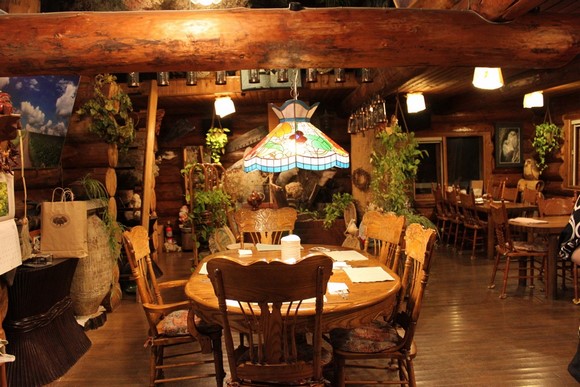

Another corner of the dining room
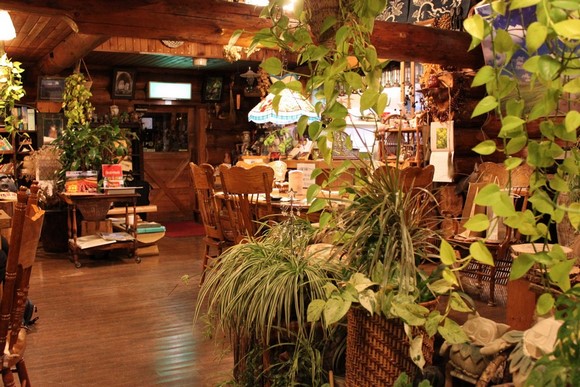

Starting with an egg drop soup, absolutely delicious.
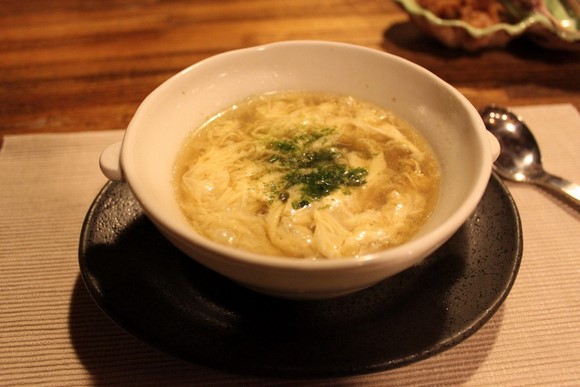

Main course – Black curry rice, incredibly tasty, you’d regret missing it.


Dessert… Furano melon
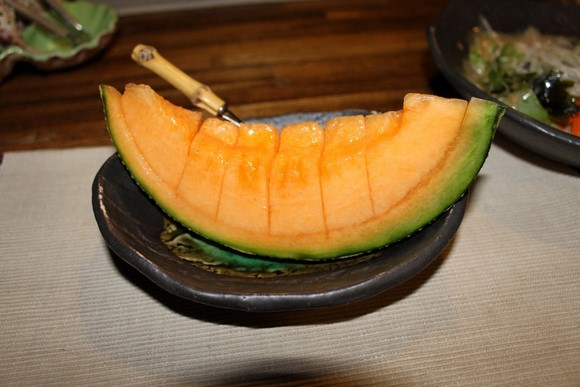

Each table in the dining room has a notebook for guests to share their thoughts. Though I don’t know what this guest wrote, the drawing suggests they were praising the black curry rice.


After several days of a packed schedule, we started feeling exhausted. Plus, the roads around Furano had no streetlights and were narrow, making nighttime driving seem risky. So after dinner, we decided to return to our room for a shower and an early night to recharge.
The following photos were taken the next morning at Woody Life.
From the cabin, the signboard is visible just about 50 meters away from the highway.
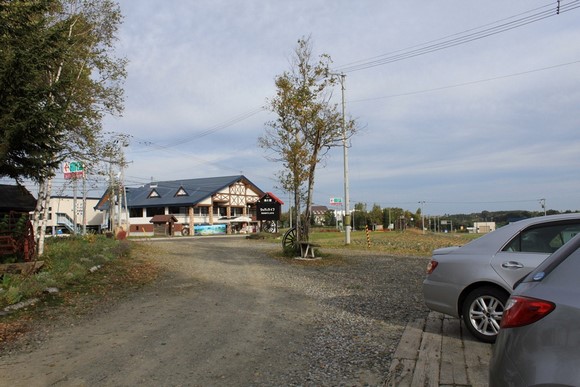

The entrance path to Woody Life’s dining room
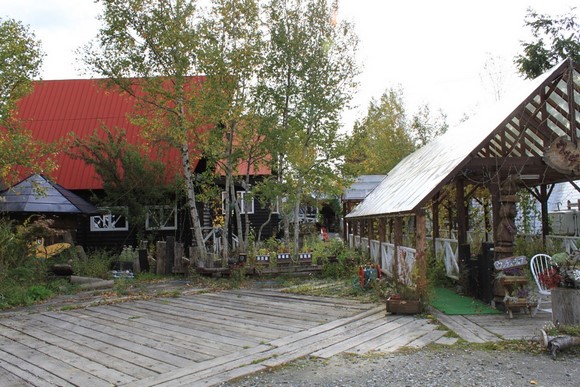

The entrance to Woody Life’s dining room
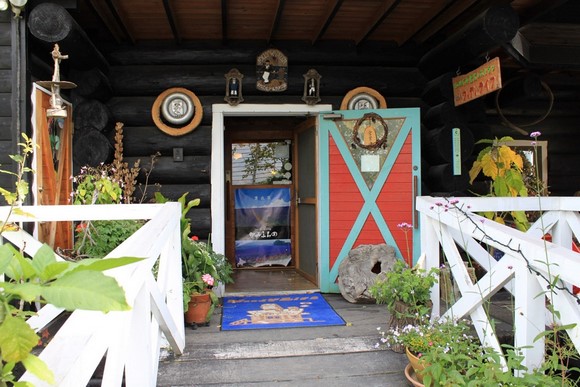

Next to Woody Life is a tiny private art gallery called “Shell Museum.”
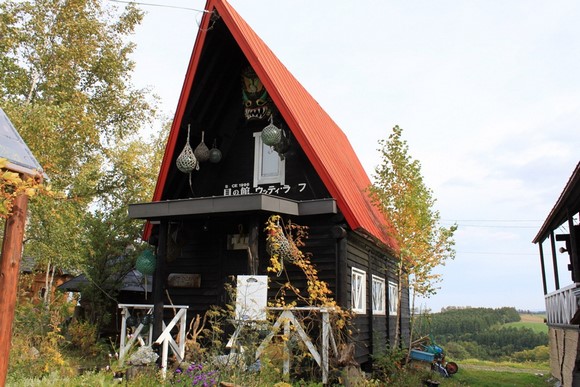

Behind Woody Life is a lavender field owned by the host, Mr. Hamamoto, but unfortunately, it had already been harvested.
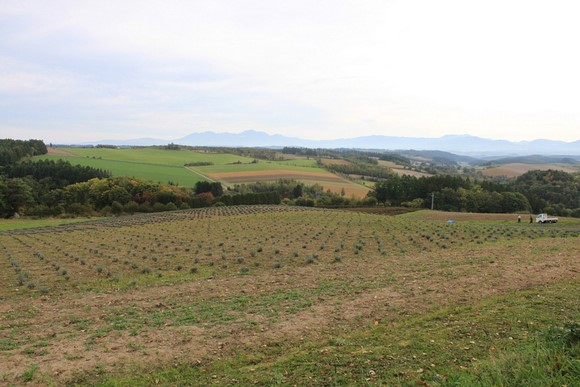

—End of Day 6—
Day 7: Visiting Shikisai-no-Oka, Patchwork Road, and Panorama Road
Day 7 of the Hokkaido summer road trip, October 2nd, sunny in the morning, rainy in the afternoon and evening, temperature 12~20°C
Itinerary: Biei _ Asahikawa _ Sapporo
Although we occasionally heard passing cars at night, the exhaustion from days of travel didn’t let it disturb our sleep. After a good night’s rest, we woke up fully recharged.
After dinner last night, we arranged to have breakfast at 8 AM. When we arrived at the dining room, Mr. Hamamoto had already prepared breakfast for us.
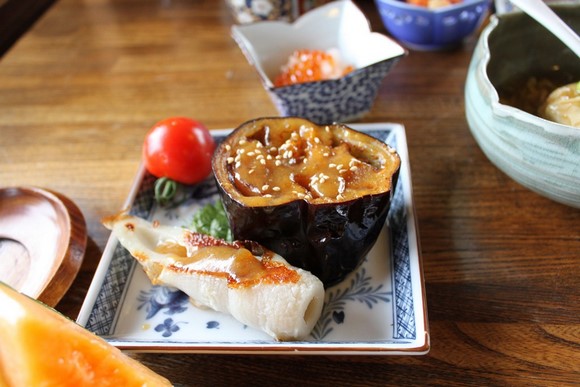

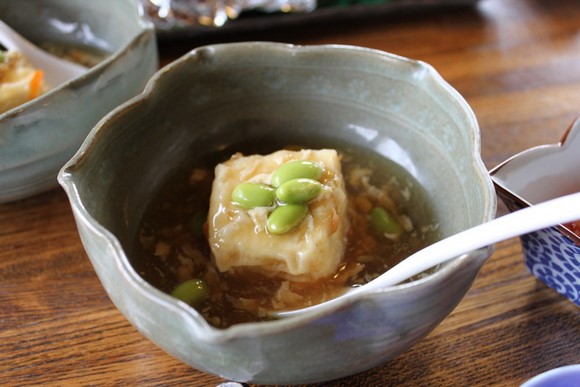

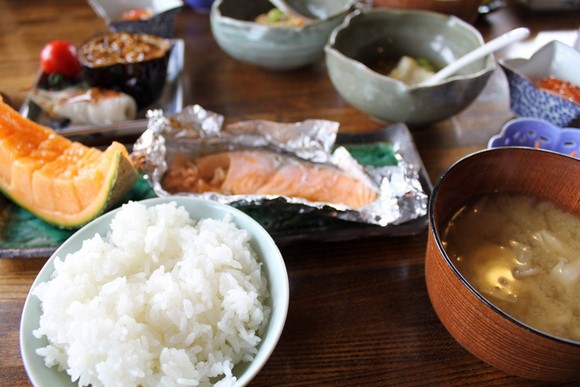

Besides us, there was another guest in the dining room—Mr. Hamamoto’s friend, Mr. Ohno. After breakfast, Mr. Hamamoto introduced us to Mr. Ohno, who turned out to be a painter. And not just any painter—he had lost both arms and used prosthetic limbs to create beautiful artwork. We were deeply impressed. Mr. Ohno even sketched a portrait of us on the spot as a keepsake, which we still have at home.
Before leaving, we took a group photo with Mr. Ohno and Mr. and Mrs. Hamamoto as a memento, then departed from Woody Life to begin the day’s journey.
Today was the last day of our road trip, with the main itinerary focused on exploring Biei before heading back to Sapporo via Asahikawa.
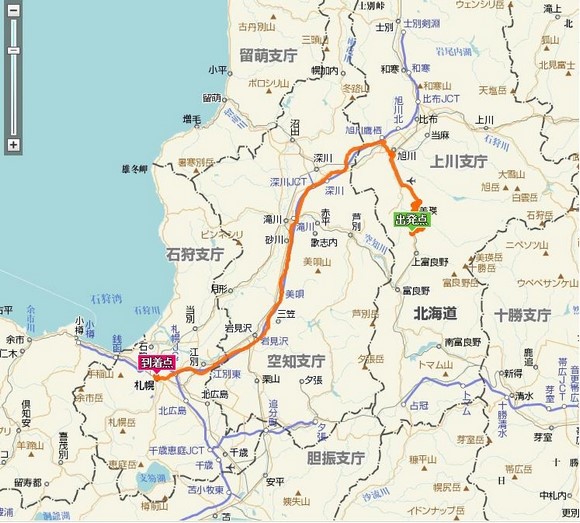

Biei’s main charm lies in its hilly terrain, creating picturesque rural landscapes with undulating fields. Travel guides typically divide Biei’s scenic areas into “Patchwork Road” and “Panorama Road.” Since “Patchwork Road” stretches between Fukamidake and Biei Station, we started our exploration there after leaving Woody Life.
After passing Bibaushi Station from Woody Life, we first arrived at Bibaushi Elementary School. However, we couldn’t find an entrance, and it didn’t seem particularly special, so we moved on to the first stop of the day—Shikisai-no-Oka.
The main gate of Shikisai-no-Oka
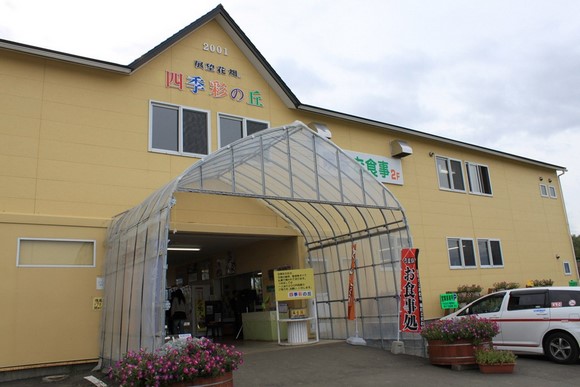

The mascot of Shikisai-no-Oka
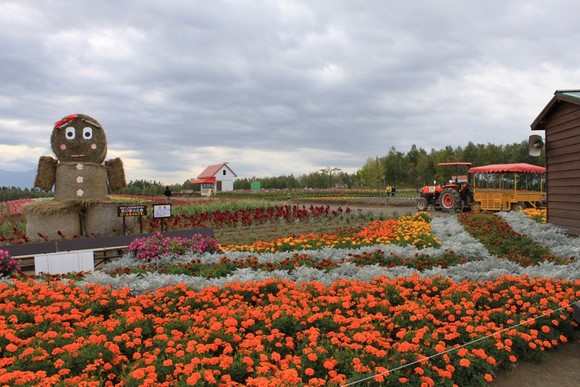

Scenery inside Shikisai-no-Oka
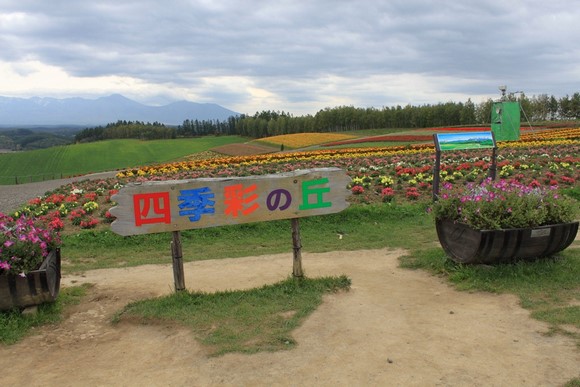

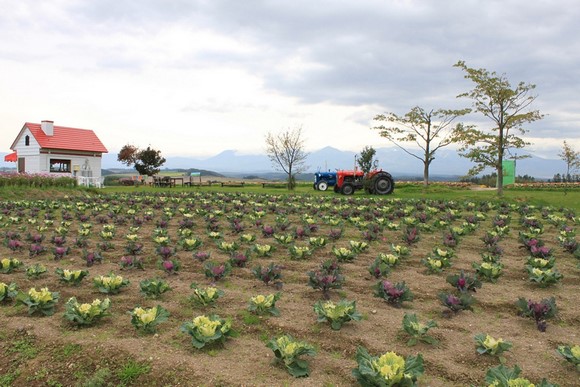

The rural scenery along Patchwork Road. Perhaps because the crops had already been harvested, it didn’t quite evoke the “patchwork” feel.
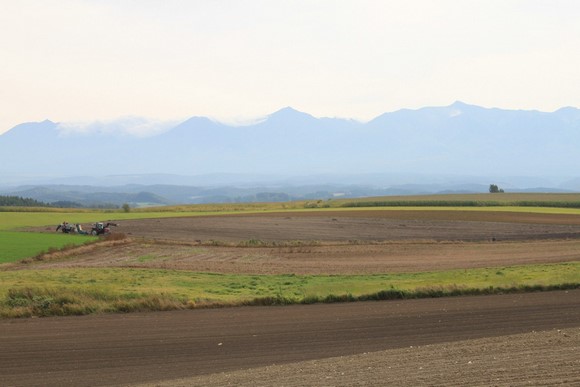



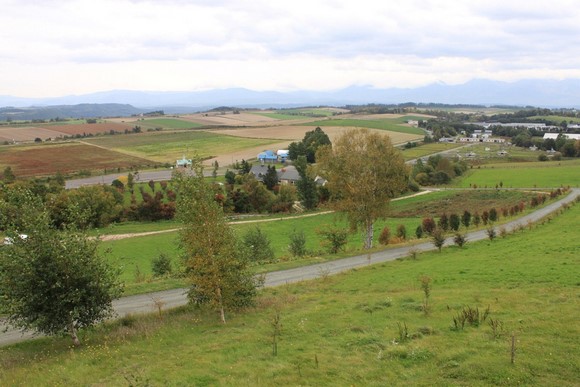

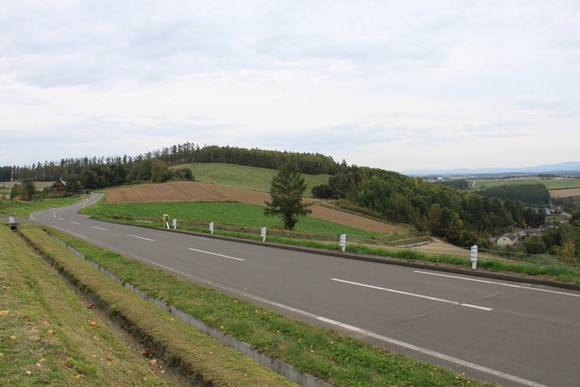

Leaving Shikisai-no-Oka, the next stop was Chiyoda Hill, which is essentially just a pavilion on a hill.
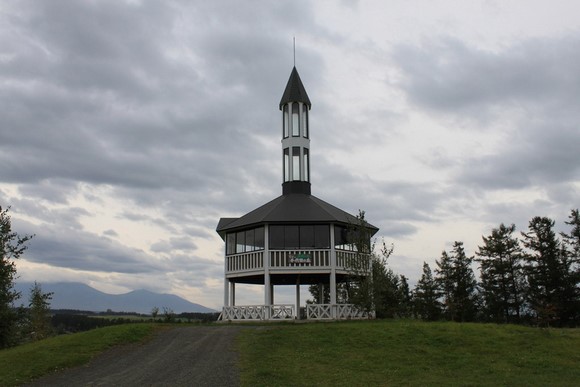

On the way from Chiyoda Hill to Sanai Hill, we unexpectedly came across a large sunflower field by the roadside.
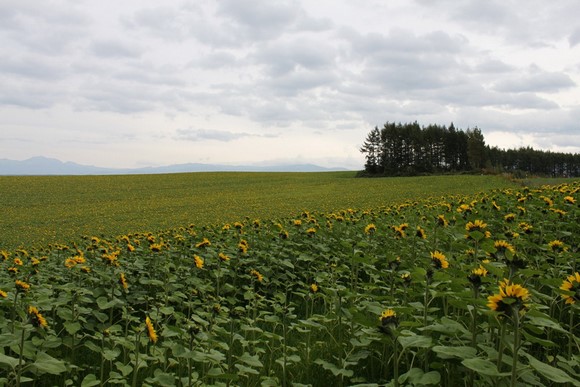

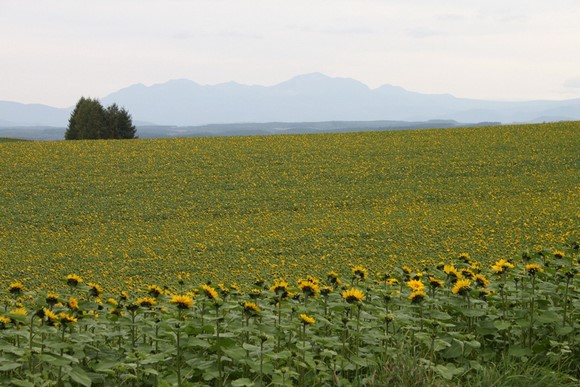

Sanai Hill—another small hill.
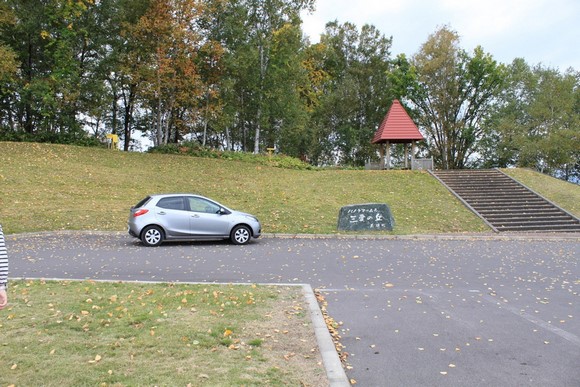

After leaving Sanai Hill, we had essentially completed “Patchwork Road” and headed to Biei Station.
There are two distinctive bridges leading into Biei: the green bridge above and the red bridge below.
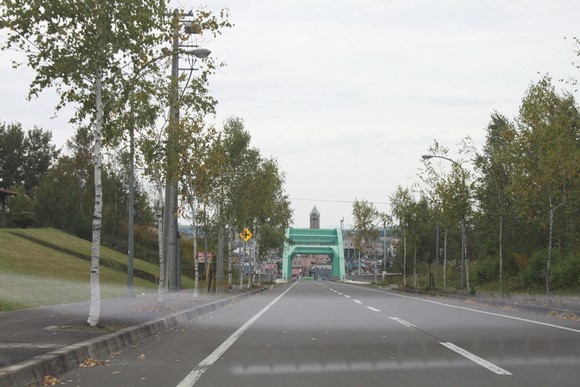

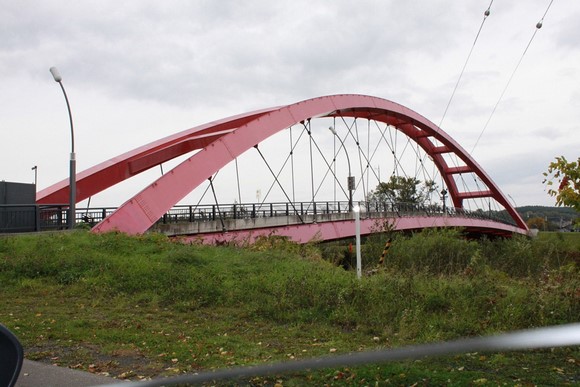

Biei’s town center gives off a quiet and relaxed vibe.
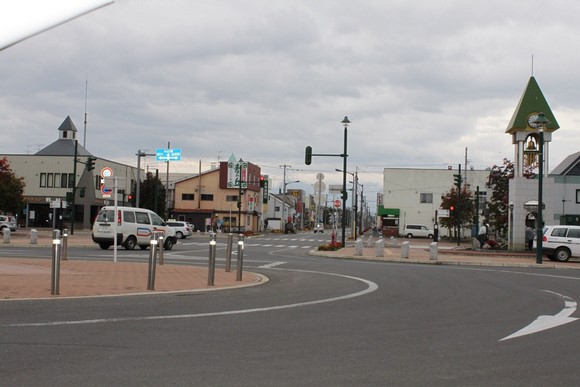

This is Biei Station—a very small place.
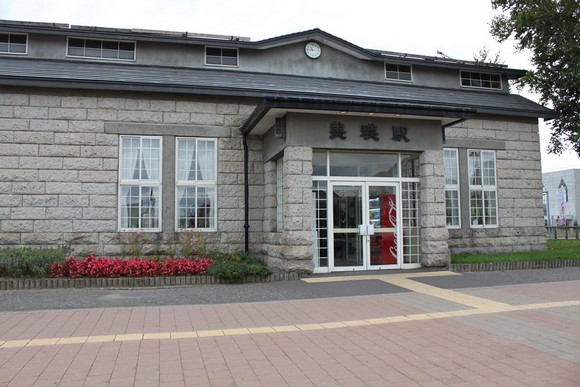

North of Biei Station lies another scenic route—”Panorama Road.”
Many attractions in Biei, especially along “Panorama Road,” are just hills or even roadside “famous trees” (single trees). As such, they don’t have phone numbers and can only be navigated using Map Codes. Unfortunately, our car’s GPS didn’t support Map Code input, so we ended up backtracking multiple times along “Panorama Road.”
Although there were occasional roadside signs, they were inconsistent—sometimes present at one intersection but missing at the next. After some trial and error, we discovered that the car’s navigation map displayed the locations of these famous trees, but only when zoomed in to the maximum level. We could then manually set the destination by clicking on the map. By the time we figured this out, however, we had already visited most of the planned spots.
The first attraction on “Panorama Road”—Adom Hill, located beside National Route 237.
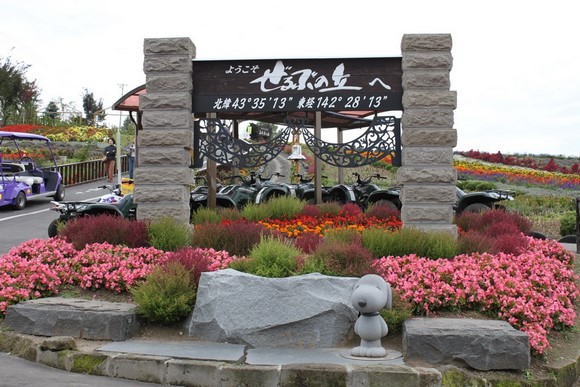

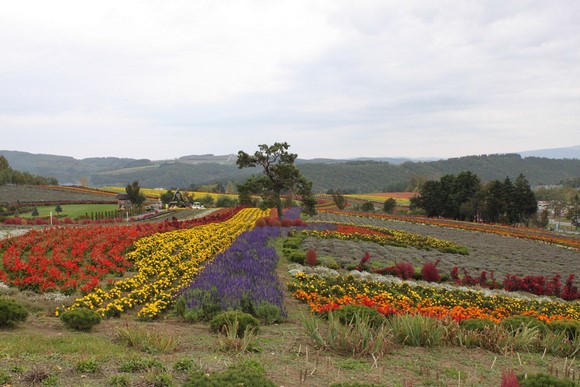

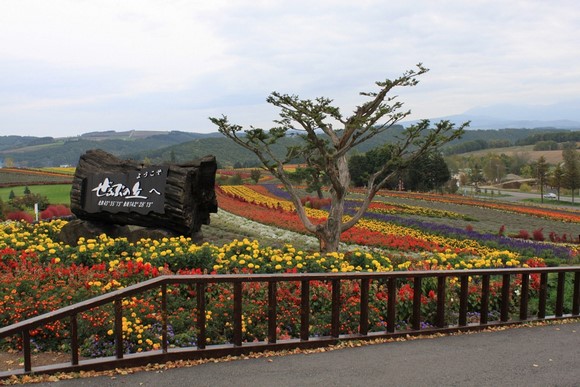

Ken & Mary’s Tree. If you can’t find it, you can input the phone number of the nearby shop.
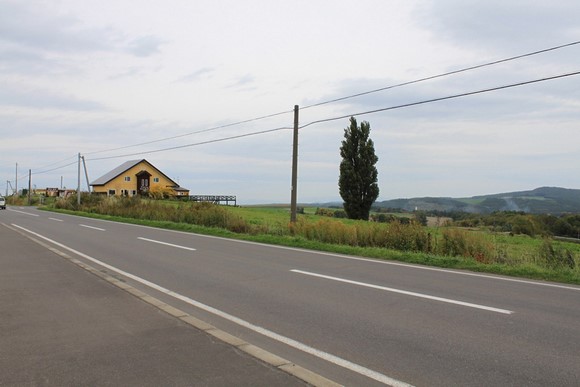

Nishinokyo Hill Observation Park
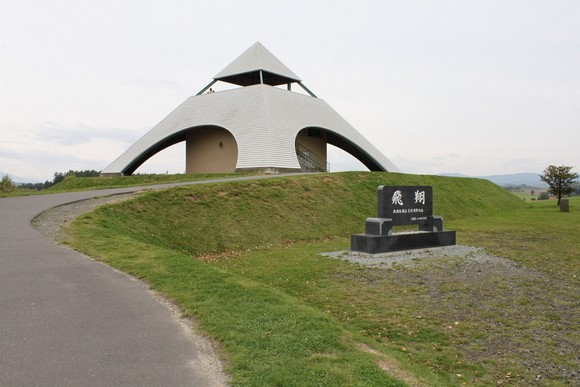

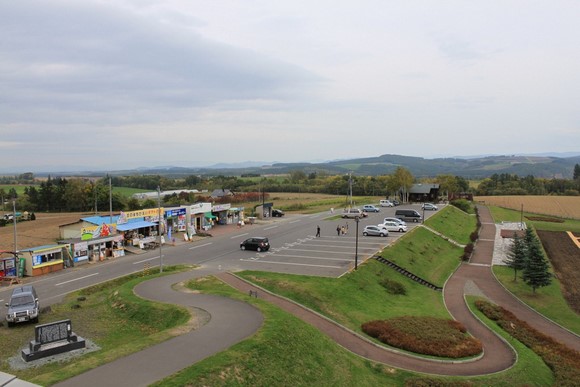

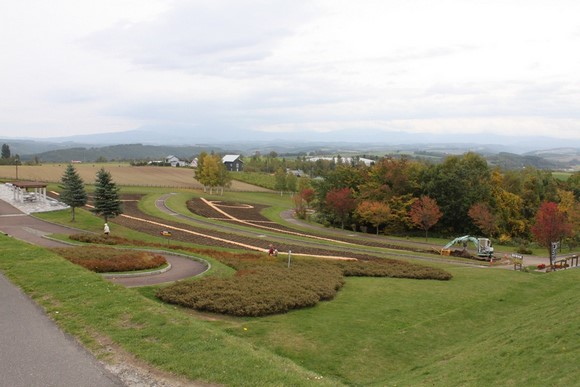

Parent and Child Trees…
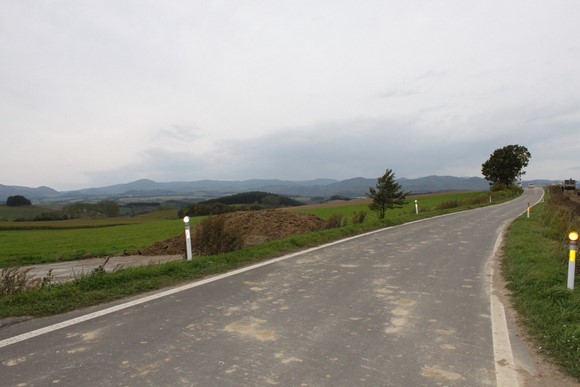

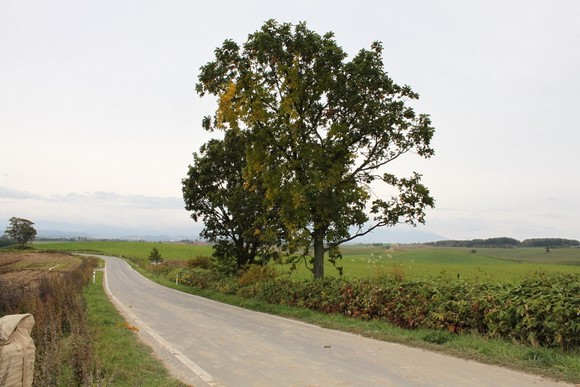

Many people might look at these two photos and wonder if there’s a mistake—are these nearly withered trees really famous? Yes, they absolutely are! At first, I didn’t believe it either, so we went twice. The first time, we didn’t check the GPS (since it didn’t support Map Codes) and thought we were in the wrong place. Later, we noticed the name “Parent and Child Trees” on the map and manually set the destination by clicking on it. But we still ended up here, and the map confirmed we were indeed at the right spot.
Other famous trees…


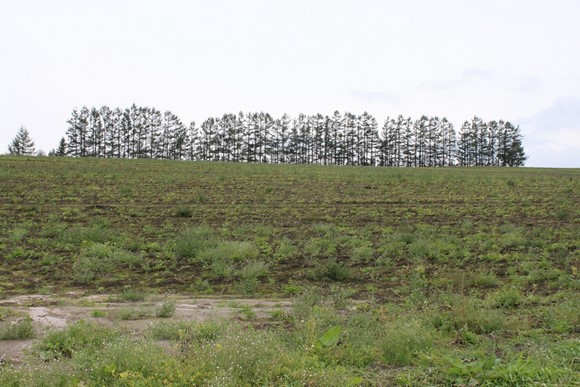

Perhaps due to overhyped expectations, the scenery in Furano and Biei ultimately left us slightly disappointed.
The sky began to darken in the afternoon, so around noon, we left Biei and took the Doo Expressway via Asahikawa to return to Sapporo.
The drive from Biei to Asahikawa isn’t far, taking only about 20 minutes. We first stopped by Asahikawa Station for a quick visit and to have lunch.
At Asahikawa Station, we tried a bowl of Asahikawa ramen, which was just okay.
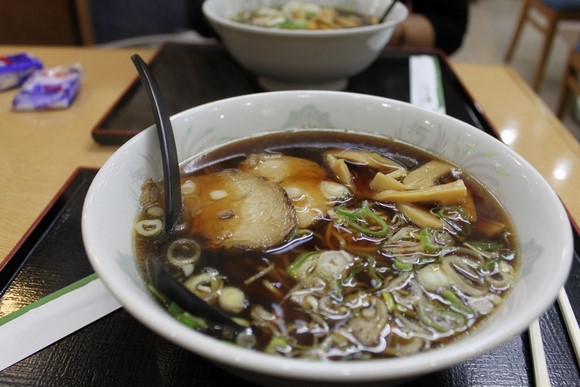

After lunch, we hit the road again.
The entrance to the Doo Expressway at Asahikawa Takasu
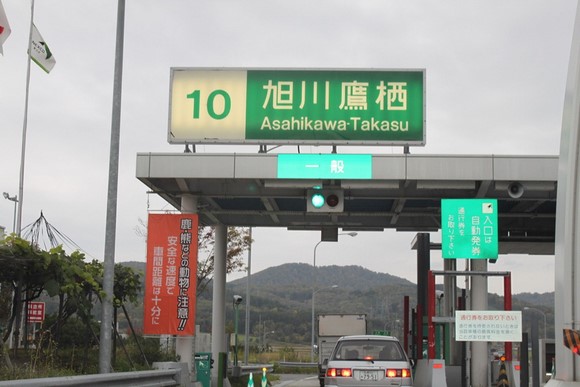

Shortly after entering the expressway, it started raining—and the downpour only grew heavier. With the heavy rain, we had to slow down, but we still maintained an average speed of 80–90 km/h. Surprisingly, the expressway from Asahikawa to Sapporo is incredibly fast; even in such heavy rain, it took only two hours to reach our destination.
The expressway in the rain
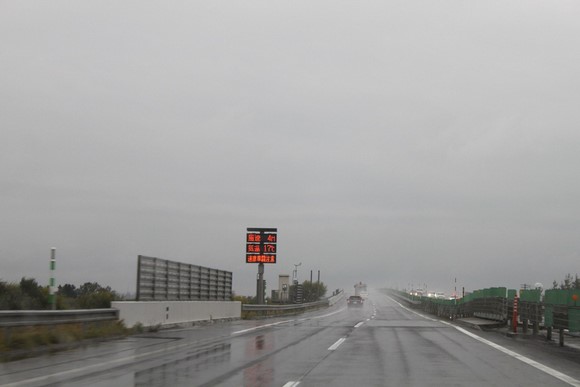

We had originally planned to visit the Sheep Hill near Sapporo before returning the rental car, but the rain was too heavy, so we decided to skip it and head straight to Cross Hotel to check in.
The Cross Hotel in Sapporo is the second branch in Japan after Osaka. Since we had a great experience at the Cross Hotel Osaka, we chose to stay at the Cross Hotel Sapporo for the last two nights of our trip. Like the Dormy Inn Premium with Natural Hot Spring in Otaru, this hotel features a large indoor bath on the top floor.
The front of Cross Hotel, with the parking entrance on the other side. The hotel lobby is located on the second floor; there’s no entrance on the ground level.
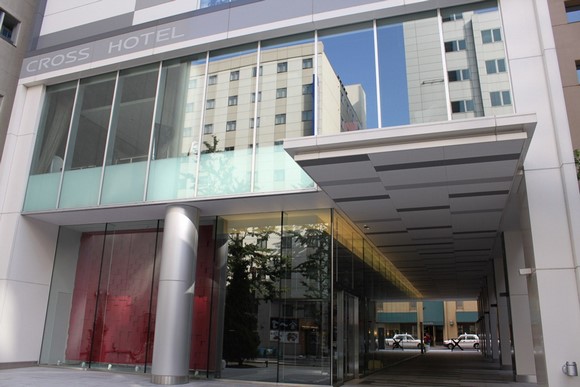

The main street in front of Cross Hotel
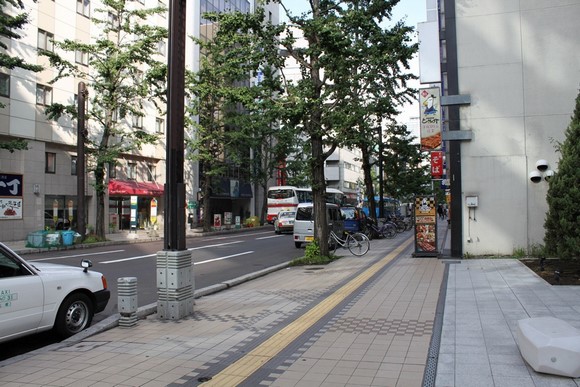

After checking in, we returned the rental car. Since the rain showed no sign of stopping, we decided to explore Tanukikoji Shopping Street. Tanukikoji is a covered pedestrian street located between Susukino Station and Odori Station on the subway, just two stops from Sapporo Station. Compared to Osaka or Tokyo, there wasn’t much to see here, but we still ended up visiting Tanukikoji on every subsequent trip to Sapporo.
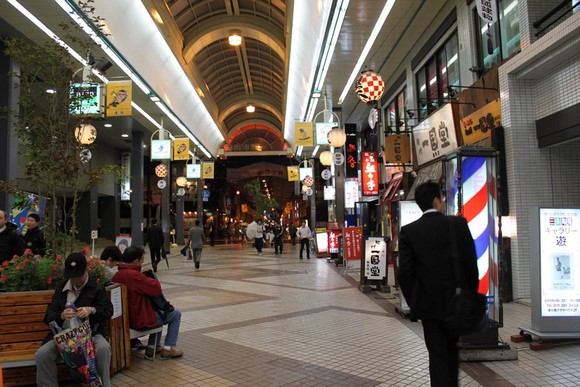

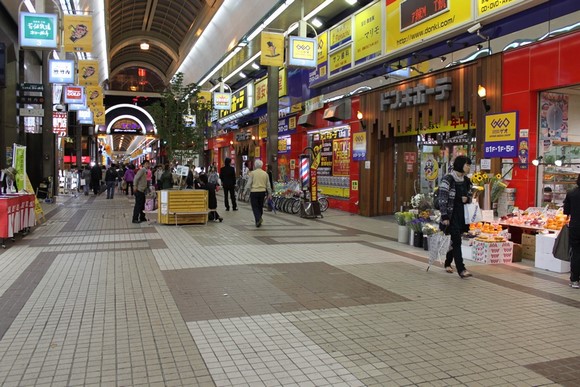

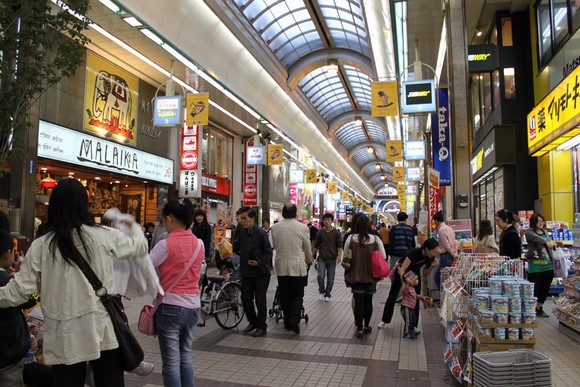

With the heavy rain and nowhere else to go, we decided to find a place to eat. By chance, we stumbled upon a fantastic Japanese restaurant called “Hokkaido Maebami Cuisine.” The seafood here came directly from the fishing port of Esashi, and it was incredibly fresh. Unfortunately, the restaurant has since closed.
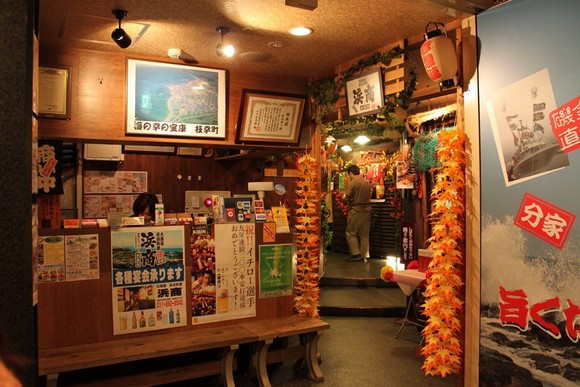

The whelk sashimi and surf clam sashimi were incredibly sweet and delicious. So good that we ordered another serving.
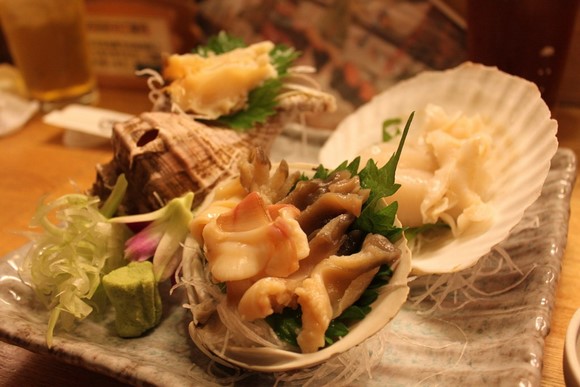

The sushi was also excellent…
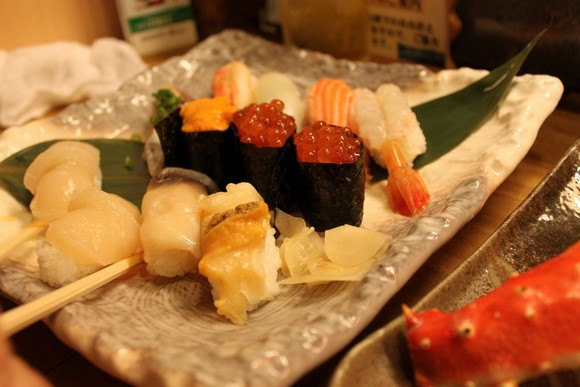

Grilled crab legs, though not as tasty as the sashimi.
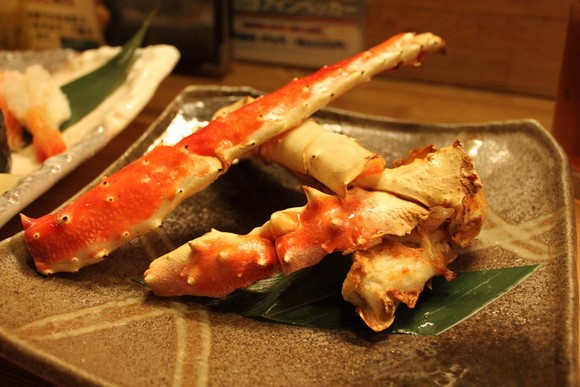

Hokkaido Maebami Cuisine happened to be celebrating its anniversary with a lucky draw, offering homemade milk soft candy as a prize. We won one pack, but the Chinese student waiter gave us two, each containing five pieces. The milk candy was delicious but had to be refrigerated—it melted quickly after being taken out.
After dinner, it was still raining, so we headed back to the hotel to rest.
Susukino at night…
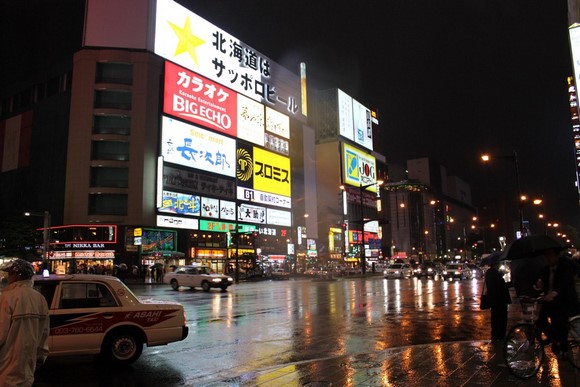

—Day 7 Itinerary Ends—
Day 8: Exploring Nijo Market, Sapporo Factory, and the Former Hokkaido Government Office
Day 8 of our Hokkaido trip, October 3, sunny, temperature 12~20°C
Itinerary: Sapporo
Today’s itinerary focused on exploring Sapporo, with visits to Nijo Market, Sapporo Factory, and the Former Hokkaido Government Office.
Our first stop was Nijo Market. Located at the end of Tanukikoji’s first section, it took about 30 minutes to walk there from the hotel, passing through Odori Park and then continuing to the end of Tanukikoji.
We passed by the Clock Tower…
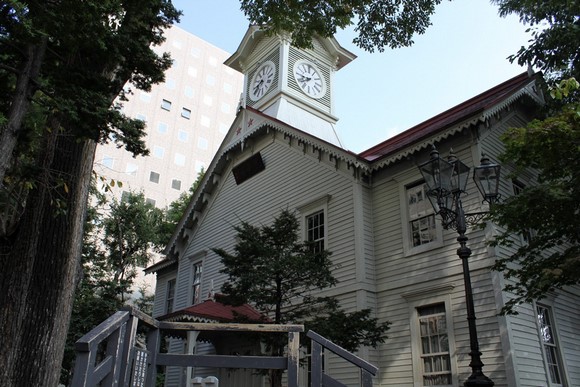

And then Odori Park…
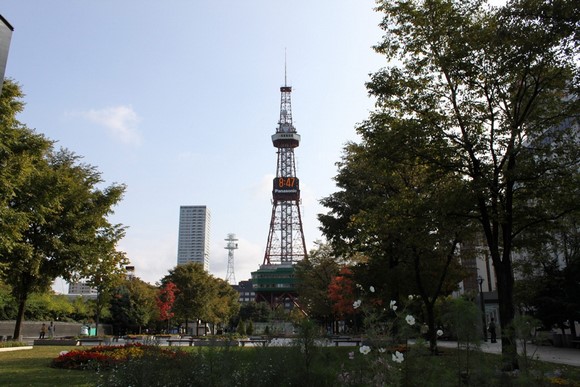

The end of Tanukikoji’s first section, with Nijo Market across the street.
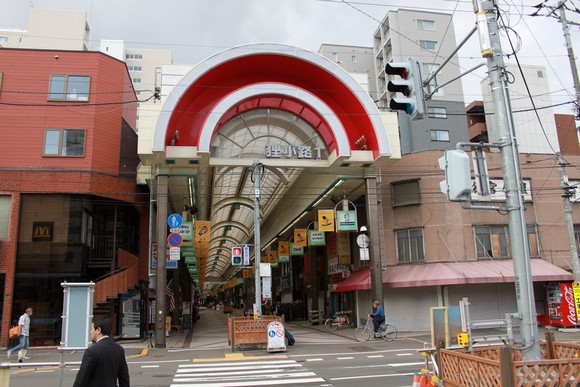

Compared to Hakodate Morning Market, Nijo Market is quite small and doesn’t offer much to see.
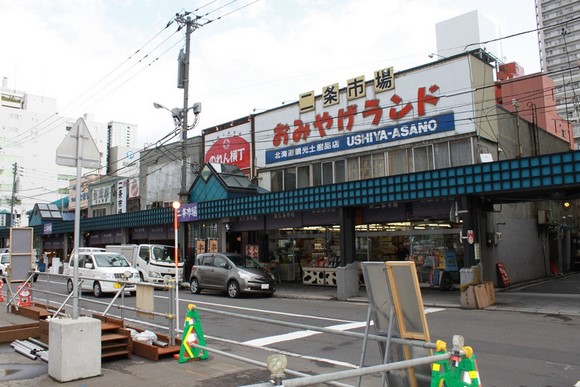

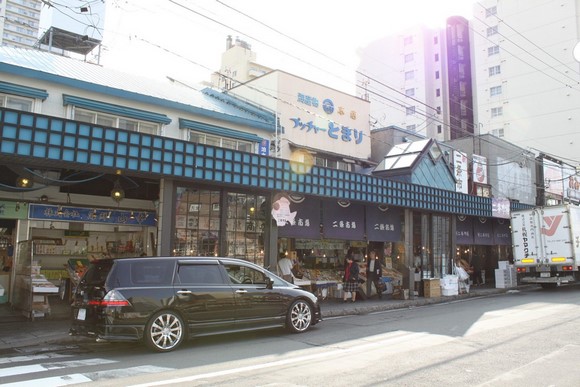

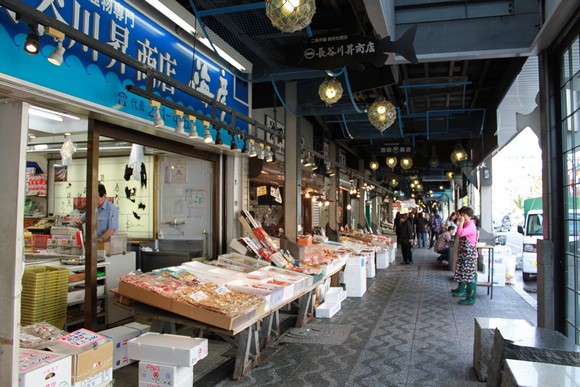

Since we were at the market, we decided to have a sashimi bowl for breakfast. Inside, we found this restaurant called “Chaya,” which was recommended in travel guides.
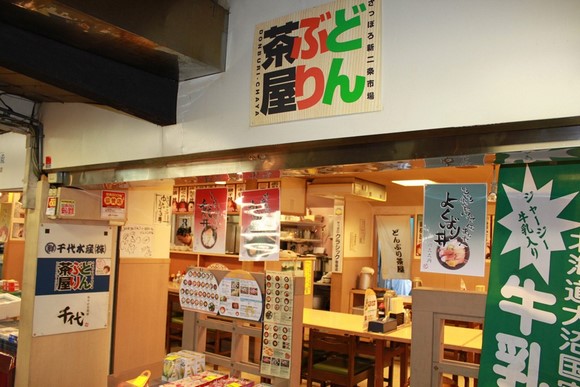

We ordered two different bowls—both were delicious…
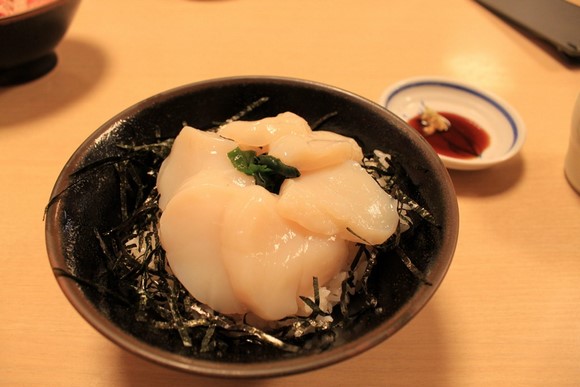

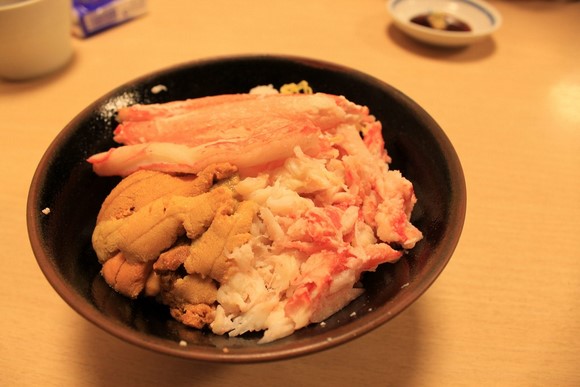

After leaving Nijo Market, we walked to Sapporo Factory, which took about half an hour.
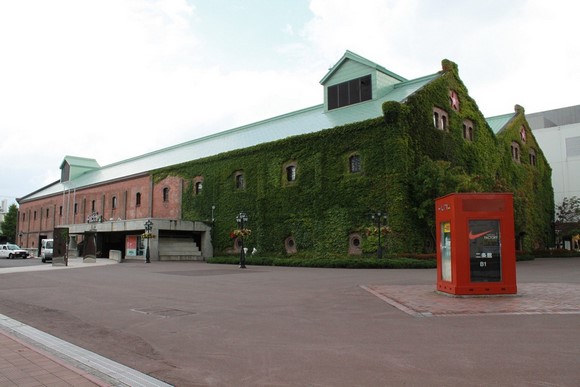

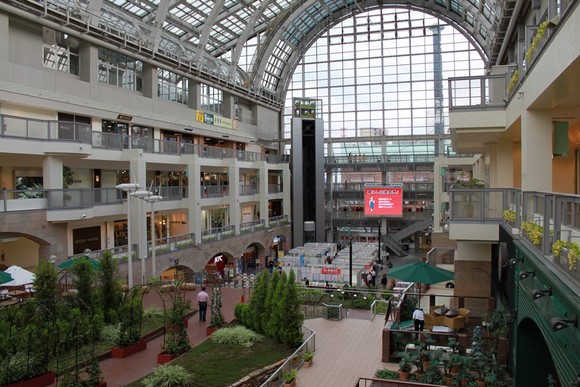

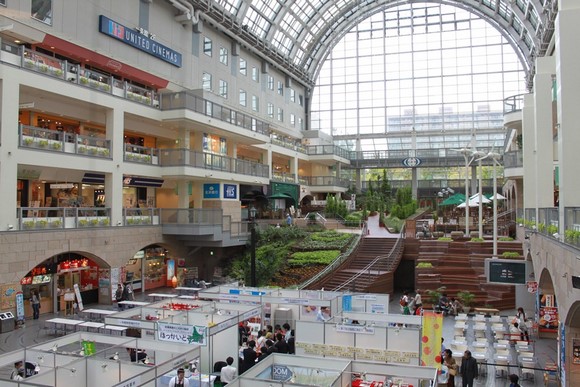

For those who aren’t into shopping, Sapporo Factory doesn’t offer much, so we didn’t stay long. There’s a loop bus outside the main entrance, so we took it back to the hotel for a short break.
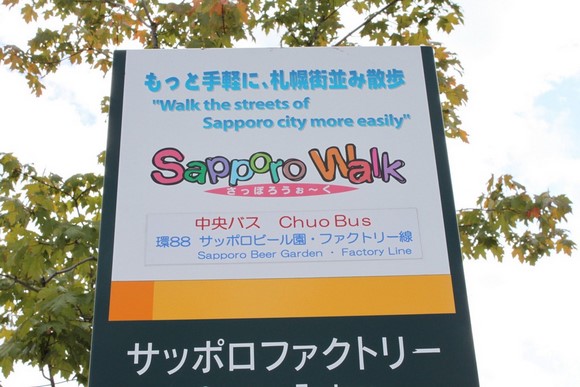

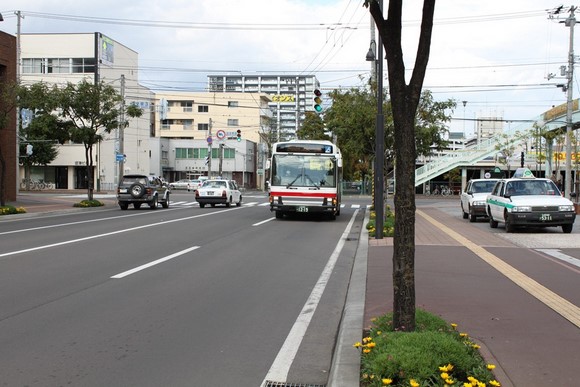

After the break, our next stop was the Former Hokkaido Government Office, just a 10-minute walk from the hotel.
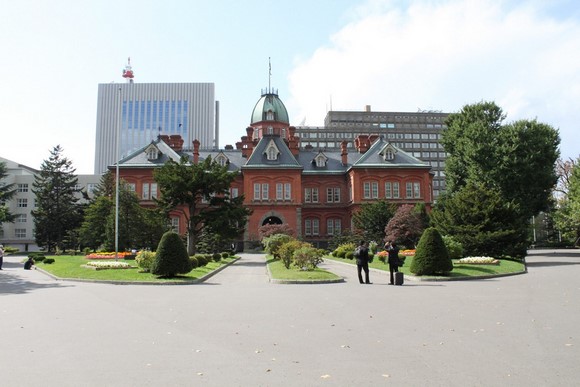

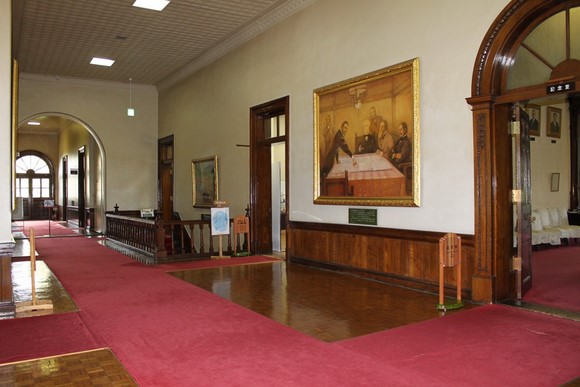

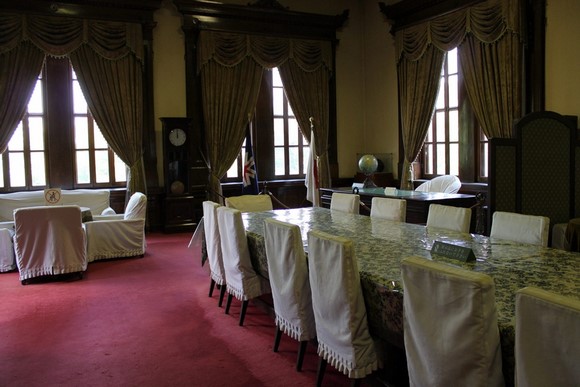

After visiting the Former Hokkaido Government Office, it was almost time for lunch, so we headed to Sapporo Ramen Republic.
We passed by Sapporo Station…
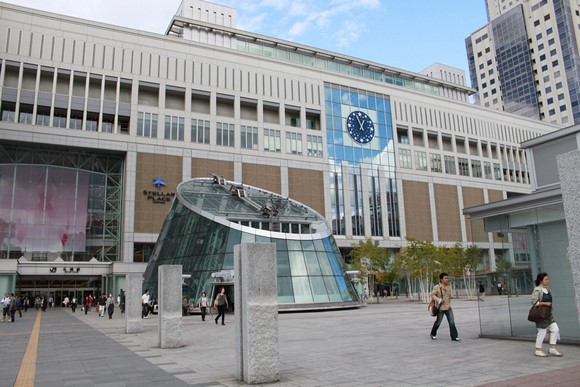

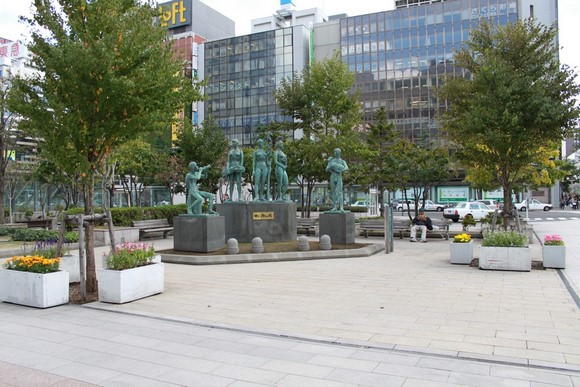

Sapporo Ramen Republic
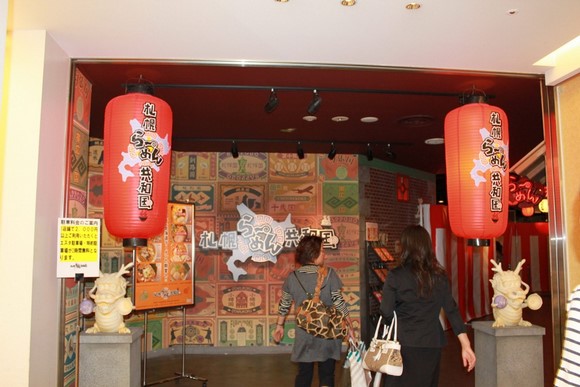

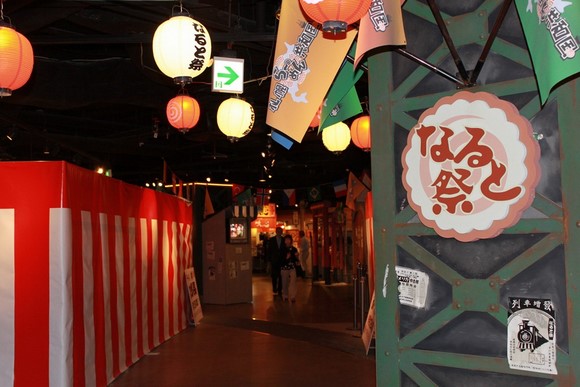

We finally settled on this Asahikawa ramen place called Baikohken.
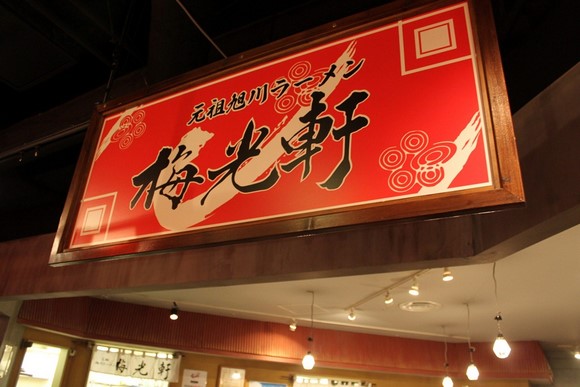

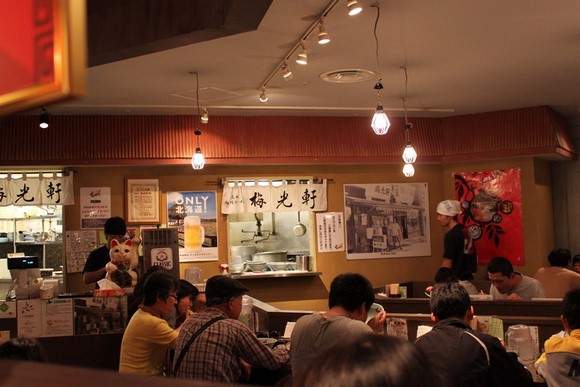

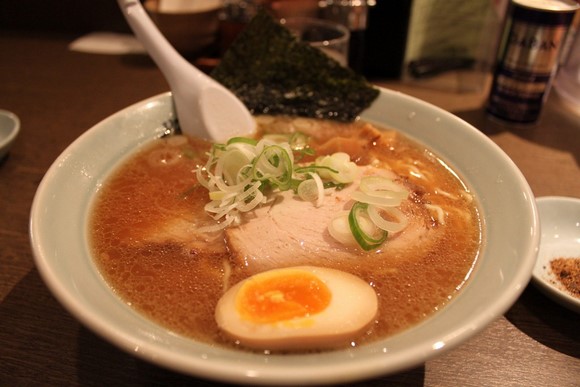

After lunch, we spent the afternoon shopping for souvenirs at Tanukikoji.




For our final dinner in Sapporo, we chose the popular conveyor belt sushi restaurant “Nemuro Hanamaru,” located on the 6th floor of Stella Place Center at Sapporo Station. The sushi was incredibly fresh and delicious, but the place was packed—we waited over 45 minutes to get in.
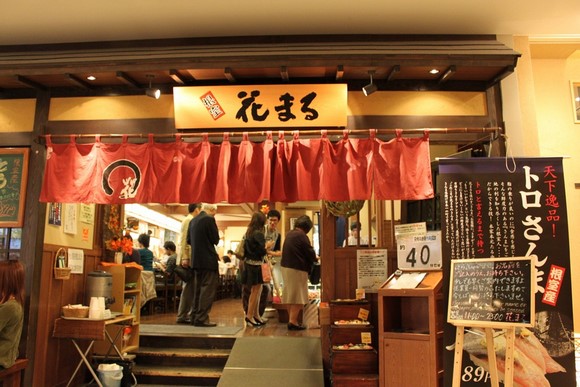

Further reading:
—Day 8 Itinerary Ends—
Day 9: Journey Ends, Heading Home
Day 9 of our Hokkaido trip, October 4, sunny, temperature 12~20°C
Itinerary: Sapporo _ Hong Kong _ Macau
Finally, it was the last day of our trip. Today’s main activity was… taking a flight.
New Chitose Airport is quite large, but most of the space is reserved for Japanese airlines. The international terminal for foreign airlines is relatively small, with few shops past security, so it’s best not to go through customs too early.
The international departure lounge—you can see it all at a glance.
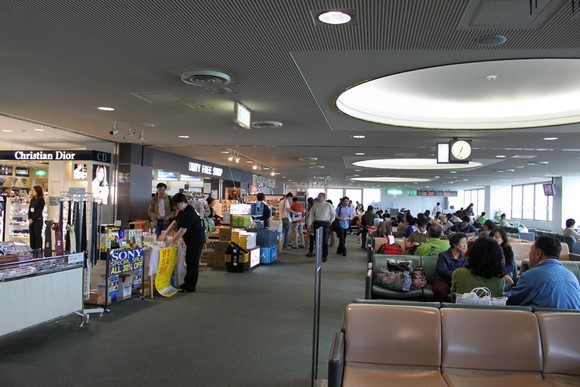

The Korean Air plane we took


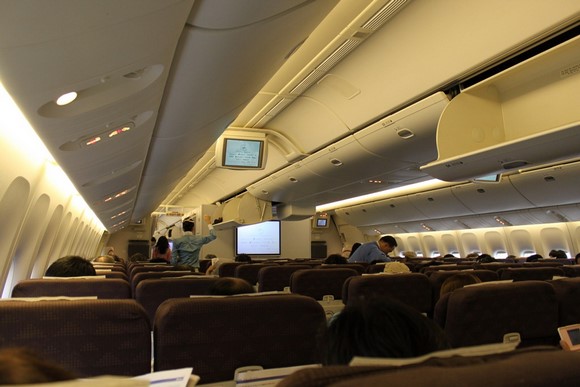

After a four-hour flight, we returned to Seoul Airport for our connecting flight.
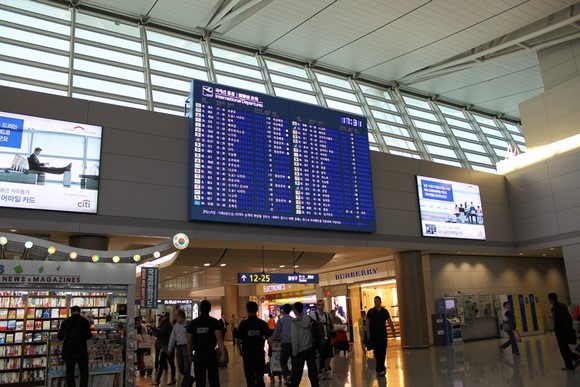



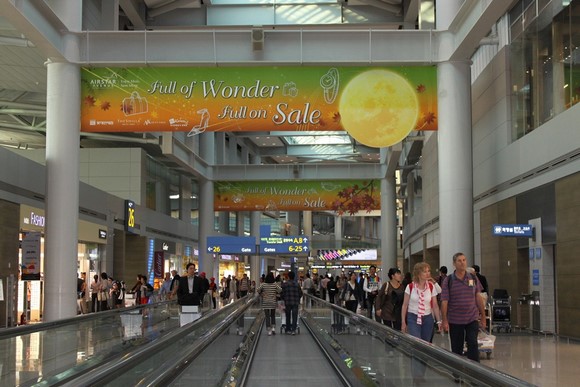

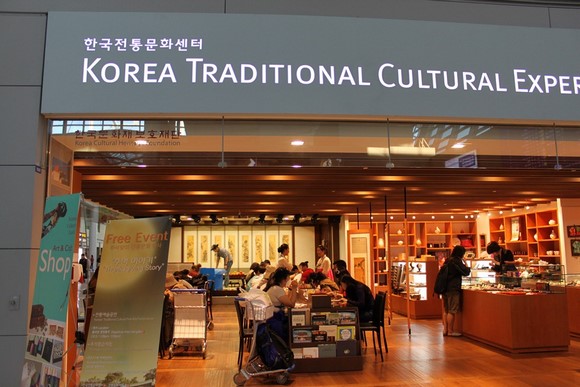

—End of the 9-day itinerary—
Related posts:
- Japan Highway Toll Calculation! 5 Methods to Check, Calculate Toll Fees, and Payment Options
- Kyushu Expressway Pass (KEP): Pricing, Coverage, and Where to Buy
- Japan Toyota Rent a Car Guide: Official Website Rental Process and Discounts!
- Visit Japan Web (VJW) Guide for Filling Out Japan Arrival QR Code
- Japan Universal Studios Tickets, Fast Pass, VIP Tour: Official Website Purchase Guide
- Universal Studios Japan App Tutorial! How to Use the USJ App to Obtain Timed Entry Tickets
- Osaka Mint Bureau Sakura Avenue Reservation Guide
- Osaka Light Festival: Event Details, Schedule, Venues and Transportation
- Tateyama Kurobe Opening Dates, Transportation, Attractions, Luggage Delivery, and Travel Guide
- Guide to Purchasing Tateyama Kurobe Tickets, Train Tickets, JR Passes, and Booking Ride Times
- Tateyama Kurobe Snow Otani: Opening Hours, Snow Wall Height, and Travel Guide
- Tateyama Kurobe Travel Guide: One-Day Itinerary and Recommended Routes (JR and Self-Driving)
- Alpine-Takayama-Matsumoto Area Tourist Pass: Purchase, Exchange, Usage, and Riding Guide
- Japan Kyushu Kawachi Fujien: Wisteria Blooming Season, How to Purchase Tickets, and Transportation Guide
- Japan Toyota Rent a Car Guide: Official Website Rental Process and Discounts!
- Kaiten-Sushi Nemuro Hanamaru: Locations, Crowds, Reservations and Queue-Skipping Tips for Tokyo and Sapporo Branches
- Japan Accommodation Tax: Which Cities Levy It? Who Needs to Pay? How to Pay?
- Japan Rakuten Travel Promo Codes, Latest Discounts, and Booking Tutorial
- How to get and use the 10% Agoda Discount Code


